NORTH SAILS BLOG
Tutto
Events
Guides
News
People
Podcast
Sustainability
Tech & Innovation
Travel & Adventure

WIJ ZIJN VERHUISD!
WIJ ZIJN VERHUISD
Terug in Antwerpen
North Sails België is verhuisd. Het team verruilt de zeilmakerij in Stabroek voor een plek in het nieuwe Antwerp Nautical Center aan het Asiadok, in Antwerpen. Vanaf 1 juni kunt u hier terecht voor advies, onderhoud en service voor uw zeilen.
Na vele jaren gevestigd te zijn in Stabroek, kwam de mogelijkheid om intrek te nemen in het gerenoveerde pand van het Antwerp Nautical Center. “Hier zitten we weer op een centrale plek. Stabroek lag voor veel klanten in het weekend wel redelijk op de route, maar doordeweeks was het te ver om. Daarnaast worden we nu onderdeel van een one-stop-shop,” vertelt Sales Manager Nic Bol. Het Antwerp Nautical Center biedt alle services voor de watersporter, waaronder een scheepswinkel, reparaties, onderhoud en verkoop. Het beschikt over een unieke ligging waardoor het zowel uitstekend via de weg bereikbaar is en in de nabije toekomst ook via het water.
Vernieuwingen zeilmakerij Rotterdam
Naast Antwerpen zijn de klanten in de Benelux ook nog steeds welkom in de zeilmakerij in Rotterdam. Hoewel onze full service zeilmakerij in Rotterdam nog steeds op dezelfde locatie zit, heeft de vestiging wel een grote verbouwing achter de rug. De werkvloer is volledig vernieuwd en er zijn putten gekomen, zodat de naaimachines in de vloer zijn ‘gezonken’. Hierdoor is het werkoppervlak verdubbeld. Ook is er een vide gebouwd, zodat er extra opslagruimte voor zeilen is gecreëerd.
Onze service zeilmakerijen zijn te vinden op onderstaande locaties. HIernaast bent u natuurlijk ook nog steeds van harte welkom in ons kantoor in Almere.
North Sails Antwerpen
Asiadok-Oostkaai 28F
2030 Antwerpen
België
North Sails Rotterdam
Anthonetta Kuijlstraat 7
3066 GS Rotterdam
Nederland
North Sails Almere
Televisieweg 44-46
1322 AM Almere
Nederland
READ MORE
READ MORE
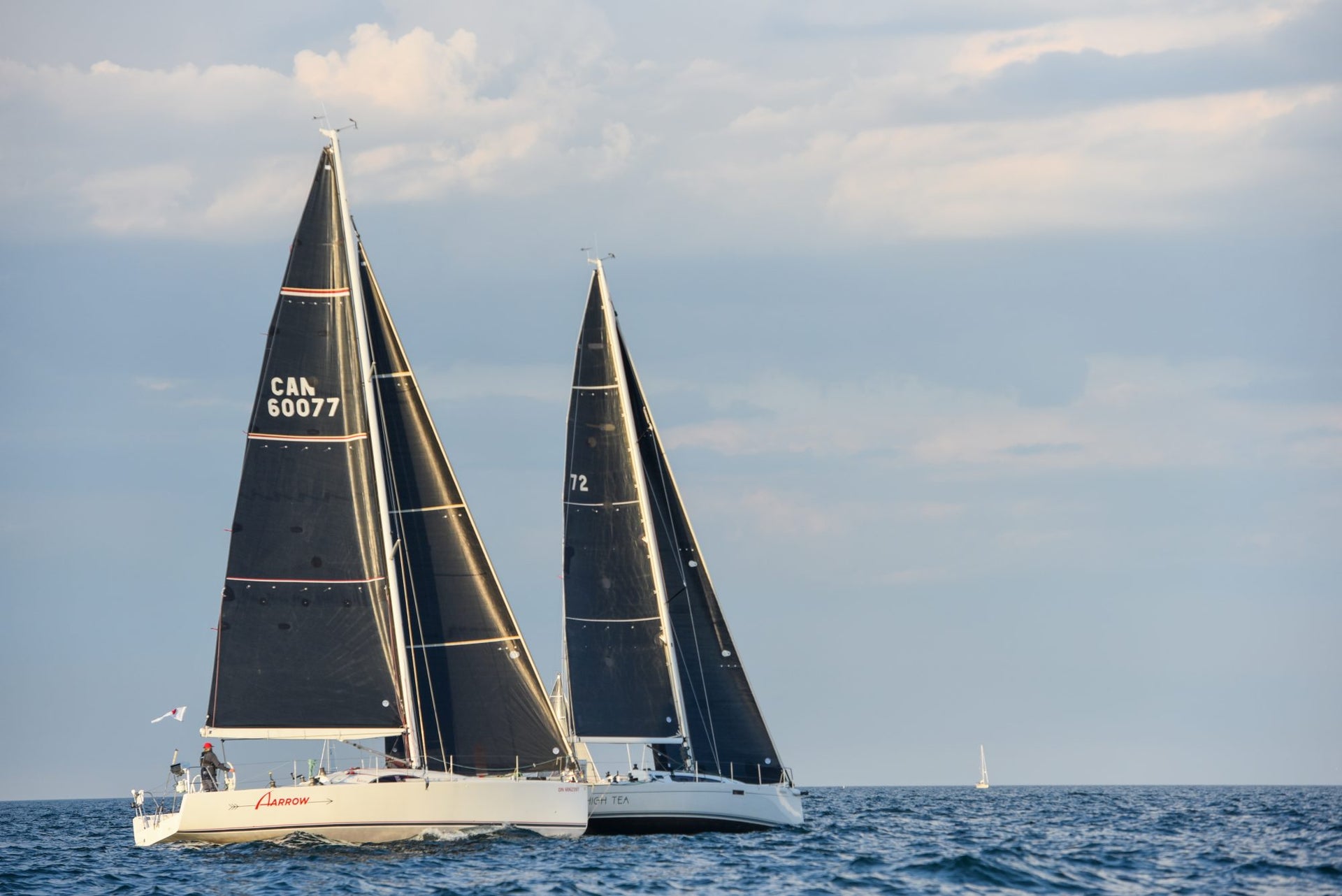
BACK AT IT WITH THE SUSAN HOOD TROPHY RACE
BACK AT IT WITH THE SUSAN HOOD TROPHY RACE
Chilly But Fun For The Overnight Adventure
In classic Susan Hood fashion, it was breeze on at the start for the first three divisions then let off towards the remaining few. 77 boats showed up for the 2022 Susan Hood Trophy Race sponsored by DriveHG. It was exciting to see so many clients out on the water again after trying restrictions for the past two years.
Father-daughter duo Doug Folsetter and Zoe Folsetter were on the line again in their Farr 30, Sabotage. By now, Zoe is a pro at the Susan Hood Trophy Race, having first sailed the 75nm overnight race back in 2017. She even convinced her mom, and fellow sailor Marnie, to join the Sabotage team this year, making the overnight race a family affair. Reflecting on the race at the dock Saturday morning, Zoe shared, “The race was a lot of fun and it was great to do it again. I learned a lot and remembered much more of the race as I hardly slept. The race was as cold as ever but I would do it again! It was good to see a few more younger sailors out there but more kids should give racing like this a try.” Meanwhile her dad Doug Folsetter, skipper and North Sails expert, shares “It’s nice to be back sailing across the lake again. This race always offers up something different. This year it was more about keeping the boat moving towards the next mark and finding the best sail combination to do so. Irrespective of how you do, this race always provides a lesson for the next one.”
Joining the Folsetter family was North Sails designer Phil Williamson who has a wealth of experience and knowledge when it comes to racing on Lake Ontario. On this year’s race, Phil shares, “I am always amazed by the great effort owners and crew put forth to get their boats race ready, provisioned and on the start line. No easy task especially early in the season. The Susan Hood is an excellent race to kick off the distance race season. It gives everyone a chance to shake down their boat, assess sail selections and re-evaluate personal gear. Better to learn, or remember lessons, on a shorter course that can throw many challenges your way.”
North Sails expert Hugh Beaton joined Soto 40 Afterburn for the season kick off. He shares, “ Aside from more jib reaching than we would have liked, it was a beautiful night for racing with a clear sky, some stars and wind that stayed up for the entire race. Congratulations to Hooligan and the other class winners for a well sailed race, and to all competitors for making it a fun event. Thanks must also go to LOOR for making the event possible - Great job.”
Podium sweep for North Sails powered customers Hooligan, Xoomer Xpress, and Afterburn in the ORC division. While High Tea, powered by 3Di Raw, took first in the flying sails short handed division and Arrow took third with their new 3Di Raw mainsail.
Congratulations to all competitors and a big thank you to RC and all the volunteers who helped make the event happen. We look forward to seeing everyone out on the water the rest of the season.
READ MORE
READ MORE

VOOR DE WIND CRUISEN MET VERSCHILLENDE SPINNAKERS
VOOR DE WIND CRUISEN MET VERSCHILLENDE SPINNAKERS
North Sails Heeft Wat Je Nodig Hebt
📸 Laurens Morel
Spinnakers kunnen voor enorme prestaties zorgen bij het voor de wind varen in lichte tot matige wind. En dat is ze maar geraden ook, als je kijkt naar de problemen die ze kunnen veroorzaken! Hoe hanteer en trim je de verschillende spinnakers? We behandelen zowel de gennaker (een asymmetrische cruising spinnaker welke zonder spinnakerboom wordt gevaren), als ook de conventionele spinnaker die met een spinnakerboom wordt gezet.
Een gennaker zetten
Een gennaker wordt bij het hijsen op drie punten verbonden met het schip. Middels de tacklijn op de boeg of boegspriet, de val uit de mast en de schoten welke naar beide zijden van de achtersteven worden geleid. In geval van een kleine bemanning (shorthanded zeilen) wordt aanbevolen om een spinnaker slurf te gebruiken. Deze hoes houdt de gennaker bijeen tijdens het hijsen en strijken van het zeil.
Het zeil wordt in deze beschermende slurf gehesen. Eenmaal in top wordt aan de lijn van de slurf getrokken om de slurf op te halen en het zeil te bevrijden. Om te voorkomen dat het zeil gaat draaien, dient de tacklijn voorafgaand aan het ophalen van de slurf strak te worden gezet.
Wat betreft de gennaker schoten; deze kunnen zowel binnendoor als buitenlangs het gennaker voorlijk worden geleid. Beide mogelijkheden werken en allebei hebben ze voordelen. Door te experimenteren komt u erachter welke manier het beste werkt op uw schip. Dit kan overigens ook variëren per windsterkte. Door de schoten tussen de voorstag en het voorlijk van de gennaker te voeren hoeft u niet om te kijken naar de schoten, maar kan het zeil tijdens het gijpen wel moeilijker overkomen doordat het tussen het voorlijk en de voorstag door moet. Door de schoten buitenlangs het zeil te voeren wordt gijpen makkelijker, maar dient er continu op de losse schoot gelet te worden, zodat deze niet onder het schip terecht komt.
Een spinnaker met boom zetten
Met een conventionele symmetrische spinnaker met spinnakerboom heeft de zeiler over het algemeen meer controle over de projectie van de spinnaker en de vorm van het zeil, dan bij een gennaker. Dit kan prestatie verhogend werken, maar het gaat wel gepaard met de nodige uitdagingen.
Ook bij deze spinnaker wordt voor shorthanded zeilen een slurf aanbevolen. Voor de voorbereidingen en het daadwerkelijke hijsen maakt dit echter niet uit. Het proces verloopt hetzelfde, of er nu wel of geen slurf wordt gebruikt.
Bevestig eerst de ophaler om de spinnakerboom omhoog te houden en een lijn om de boom naar voren te trekken. Sommige schippers geven er de voorkeur aan om ook een lijn naar achteren te zetten, om op die manier de boom tegen te houden. Anderen laten de voordekker hiervoor zorgdragen. In beide gevallen kan er veilig en succesvol worden gezeild, echter met een lijn naar achteren beweegt de boom veel minder tijdens het hijsen en neerhalen van de spinnaker. In alle gevallen bevindt de loefwaartse spinnaker schoot zich in ieder geval aan het uiteinde van de boom.
Zodra de spinnaker hijsklaar is, trekt u de loefschoot naar het einde van de boom. Hierna kan de spinnaker worden gehesen met de val. Zodra deze de top bereikt, moet de schoot worden gevierd om draaiingen van het zeil te voorkomen. Tot slot kan de slurf omhoog worden getrokken, tot deze in top zit. Hierna kunnen de lijnen van de slurf losjes worden vastgemaakt aan de mast en kan het trimmen van de spinnaker middels de schoten beginnen.
Het neerhalen van de gennaker
Om het zeil neer te halen, valt u af met het schip tot bijna voor de wind, zodat het grootzeil de wind uit de gennaker neemt. Daarna moeten de schoten zo ver worden gevierd, dat de gennaker tot een compact pakketje kan worden teruggebracht door de slurf, die van boven naar beneden over de gennaker wordt getrokken. Zodra de slurf volledig over het zeil is getrokken, kunt u de val laten zakken en stopt u de gennaker in de zak op dek, of laat u deze door het luik op het voordek zakken.
De spinnaker weghalen
Om de spinnaker weg te halen, wordt de hijsvolgorde omgekeerd uitgevoerd: creëer voldoende manoeuvreerruimte, vier de schoot, trek de slurf naar beneden, laat de loefschoot vieren en laat de val zakken. Bij een hogere windkracht wordt het makkelijker om de spinnaker weg te halen, wanneer er eerst wordt afgevallen zodat het grootzeil de wind uit de spinnaker wegneemt.
Nog een tip: in plaats van de schoot te vieren, kunt u ook een extra lijn bevestigen aan de schoot, welke naar voren wordt geleid. Op deze manier creëert u een zogenaamde ‘choker’ en trekt u de schoothoek van de spinnaker richting de mast. Na het lossen van de loefschoot kan de slurf naar beneden worden getrokken. Deze techniek - waarbij ook het achterlijk van de spinnaker achter het grootzeil wordt getrokken - zorgt ervoor dat de gehele spinnaker wordt afgedekt door het grootzeil.
Veiligheid voorop: ga zitten!
Bij zeilen staat veiligheid altijd voorop, maar zeker bij shorthanded zeilen en het werken op het voordek, is het van belang om hier extra bij stil te staan. Bij het naar beneden trekken van het zeil, is het aan te raden om te gaan zitten. Op die manier kunt u niet vallen. Zeker op een rollende boot met rond wapperend en glad zeildoek waar u op kunt stappen, is misstappen of overboord vallen zo gebeurt. Ga er dus lekker bij zitten!
📸 Laurens Morel
READ MORE
READ MORE

EVEN VOORSTELLEN: JACCO HUIJGEN
EVEN VOORSTELLEN: JACCO HUIJGEN
North Sails Expert en Operations Manager
📸 Laurens Morel
Jacco Huijgen (33) ondersteunt als Operations Manager Benelux, Nic Bol bij het leiden van de vestigingen in Nederland en België. Hoewel hij het zeilen niet direct met de paplepel heeft meegekregen, is hij inmiddels een bekende in het wedstrijdcircuit met de nodige titels op zijn naam.
Je ouders zeilden niet. Hoe ben je toch met zeilen in aanraking gekomen?
Mijn ouders hadden wel een motorboot. We lagen in de jachthaven van Drimmelen en daar ging een klasgenootje iedere zaterdag zeilen met zijn Centaur. Ik was 12 en vond het prachtig, dus ik stapte ieder weekend aan boord.
Net als Nic ben je geen zeilmaker. Wat is jouw achtergrond?
Ik heb commerciële economie gestudeerd in Breda, waarna ik een minor business management heb gedaan in Engeland. Ook geen studie waar je zeilmaker mee kunt worden, maar letterlijk spelenderwijs ben ik de zeilmakerij in gerold. Eigenlijk al op mijn veertiende. Op een gegeven moment had ik een eigen bootje, een soort van 470. Daar had ik op een gegeven moment nieuwe zeilen voor nodig, maar ik had geen geld. Dus verdiende ik de zeilen door allerlei klusjes te doen voor de zeilmakerij in Drimmelen. Deze zeilmaker was verbonden aan het merk dat Nic destijds vertegenwoordigde, dus zodoende kwam ik met Nic in contact.
En nu ben je onderdeel van North Sails. Hoe is dat?
Het was een gezamenlijk besluit om verder te gaan als North Sails, dus ik sta er voor honderd procent achter. Ik heb nu meer het gevoel dat we onderdeel zijn van een groter geheel. Ook mag ik meedenken over projecten buiten Nederland en België. Het is een prachtig merk met een goede naam en met onze service kunnen we veel betekenen voor wedstrijdzeilers, maar zeker ook voor toerzeilers.
📸 James Tomlinson Photography
Wat houdt jouw functie bij North Sails in?
Wat niet, kun je beter vragen. Officieel ben ik Operations Manager, maar ik pak naast de operationele kant ook backoffice taken op, zoals het inkopen van materialen. Daarnaast krijg ik de kans om nieuwe processen te bedenken en te laten slagen. Zo zijn we bezig met een ERP-systeem, om ook de achtergrondprocessen nog professioneler aan te pakken. We leveren prachtige producten en dat moet weerspiegelen op alle facetten van het bedrijf.
Waar haal je de meeste voldoening uit?
Als we adequaat en à la minute een probleem kunnen oplossen. Wanneer klanten nieuwe zeilen aanschaffen, is dat vaak een grote investering. Dan wil je er ook optimaal van kunnen genieten. Als er problemen voordoen, dan lossen we dat snel op. Als we daarmee iemands weekend kunnen redden, dan worden wij daar ook gelukkig van. Sowieso is het fantastisch om klanten te helpen het beste uit hun boot te halen.
Op welke zeilprestatie ben je het meest trots?
Dat is een lastige keuze.. Ik vaar veel met klanten en verheug me op het Europees Kampioenschap ORC in Italië, waar we met een Dufour gaan varen. Zelf heb ik nog een Laser voor op de Kralingse Plas in Rotterdam, maar als ik moet kiezen, dan heb ik voor mijn gevoel het grootste aandeel (gehad) in de J/80. Afgelopen april ben ik voor derde keer Nederlands Kampioen geworden. Het team is zo goed op elkaar ingespeeld. Als alles zo gesmeerd loopt, geeft me dat nog steeds een kick!
📸 Laurens Morel
READ MORE
READ MORE

EVENT SPOTLIGHT: ABYC COASTAL RACE
EVENT SPOTLIGHT: ABYC COASTAL RACE
An Afternoon On The Water
📸 Arlene Taylor
The 2022 ABYC Open Regatta weekend saw 18 boats race eastward from Ashbridge’s Bay under sunny skies on Sunday May 29th. The Coastal Race is a point-to-point middle-distance race so for both casual sailors and the more seasoned sailor it’s a chance to have a great afternoon on the water. Thanks to our friends at North Sails, three lucky skippers also went home with brag-worthy North Sails swag.
Wendy Loat, a seasoned skipper and owner of Looney Tunes, a 26” Thunderbird, recounts the day on the water.
“The Coastal Race started in a light breeze of about 5 to 6 knots. As always, the trick is deciding to sneak along the shore or to go out into the lake. A small number of us chose the lake, having heard the wind would go from southwest to east in the afternoon. That turned out to be the right decision. The boats that went in shore ran out of wind before the rest of us. Eventually, the wind died completely. We watched the GPS speed drop to zero and saw that no one anywhere was moving. Then we realized that the buck we were on had turned into a broad reach and up went the spinnakers for a sprint to the finish in about 8 knots of easterly wind.”
All boats were welcomed back on shore by the ABYC house band The Weathered Legs while they enjoyed a couple refreshments to hydrate after the long day. Top finisher overall was the smallest boat on the course - a Thunderbird - proving that staying on the lake paid, and that age and treachery can indeed beat youth and strength.
Joanne Chwalek
Chair 2022 ABYC Open Regatta
📸 Arlene Taylor
📸 Arlene Taylor
READ MORE
READ MORE
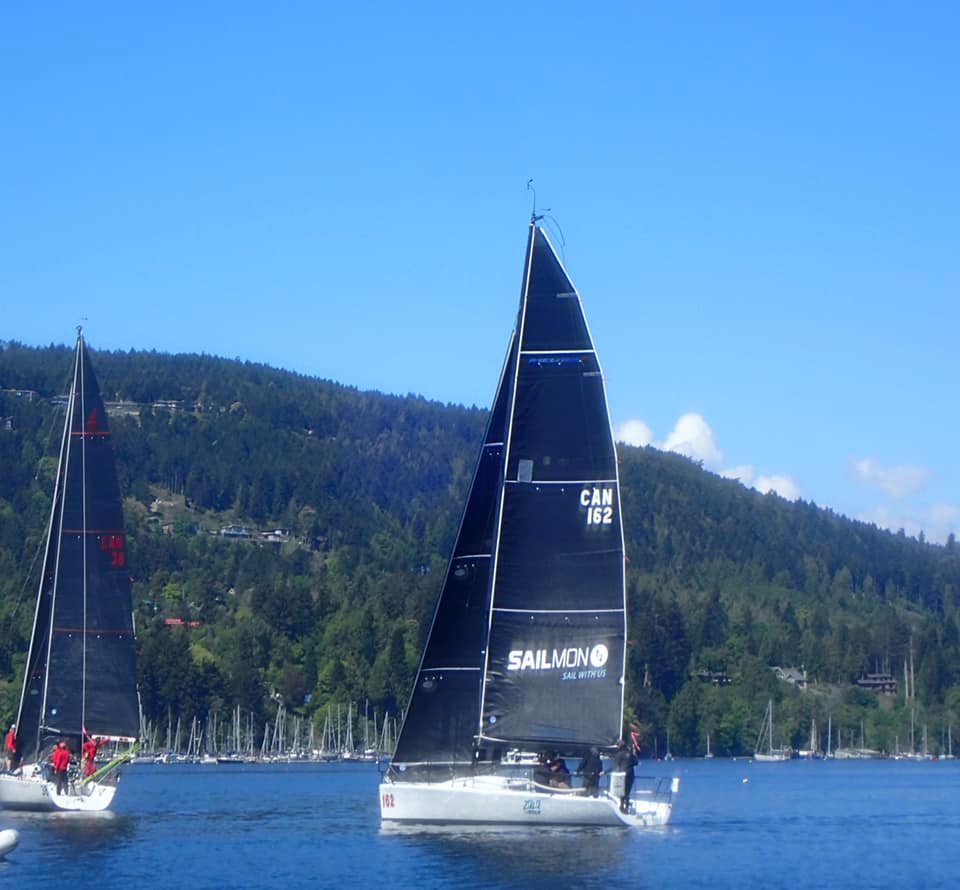
EVENT SPOTLIGHT: ROUND SALT SPRING
EVENT SPOTLIGHT: ROUND SALT SPRING
Great Racing with Great Sailors
Photo Credit: Salt Spring Yacht Club
Round Salt Spring 2022 had a good turn out with 79 boats and ended up being a very challenging race for competitors. Racers showed up on Friday at Salt Spring Yacht Club where a BBQ with live music was held. It was great to see racers before things kicked off and hear all the chatter on which way to go this year.
For the 2022 race, the race management decided to let the sailors decide which way to go around the island. With the forecast calling for sun but minimal wind, most racers thought that clockwise would be the way to go around. If the wind showed up the fast boats might have been able to go counterclockwise and be "heroes".
Almost identical to the round Thetis race earlier this year, as all 7 divisions got out to the start line, a small wind line showed up. Everyone was beating out of Ganges and headed clockwise around the island, a few boats chose a quick end to their race by choosing to go counter clockwise.
Getting around Salt Spring Island is always challenging with many "holes", passes, narrows and currents. After the nice beat out ganges the wind lightened then everyone creeped around the south end of the island and made it through Samson Narrows in the daytime. At about dark most the fleet was at or near southey point, which is the northern point of the island, yes confusing! Some boats retired, others continued to creep down the east side of Salt Spring. The sunset was amazing but it got very cold once the sun went down. I personally was lucky enough to be on a boat that finished around 2 am after being spat out of the captain's passage about 3 times just as the sun was setting. It took us about 5 hours to finish the last 3 miles of the race! After finishing a few crew stayed up to see when the rest of the fleet would come around the corner and head to finish. Just after the sun came up the rest of the fleet that was still racing came around captain passage and all started sailing into the finish. Pretty neat to see boat after boat round the corner and head to the finish after a long night of sailing.
Awards were planned for roughly noon and boats were still coming across the finish line as the race committee did not have a posted finish time. Once the majority of boats were finished most sailors made it up to awards. After 24+ hours of racing there is nothing better than walking around congratulating everyone on their race, hearing stories about the "issues" and "success" getting around the island in little to no wind. The awards were great fun for the 7 different divisions and sailors of all ages accepting awards. The Fugitive Race team had a few sailors under the age of 15 and another boat had a sailor close to 90 years old!
Round Salt Spring was another challenging fun round island race. Congratulations to the Salt Spring Yacht Club and all the volunteers who put on a fantastic race. Looking forward to returning next year!
Full results here.
Photo Credit: Lin Parks
Photo Credit: Salt Spring Yacht Club
Photo Credit: Salt Spring Yacht Club
Photo Credit: Lin Parks
READ MORE
READ MORE
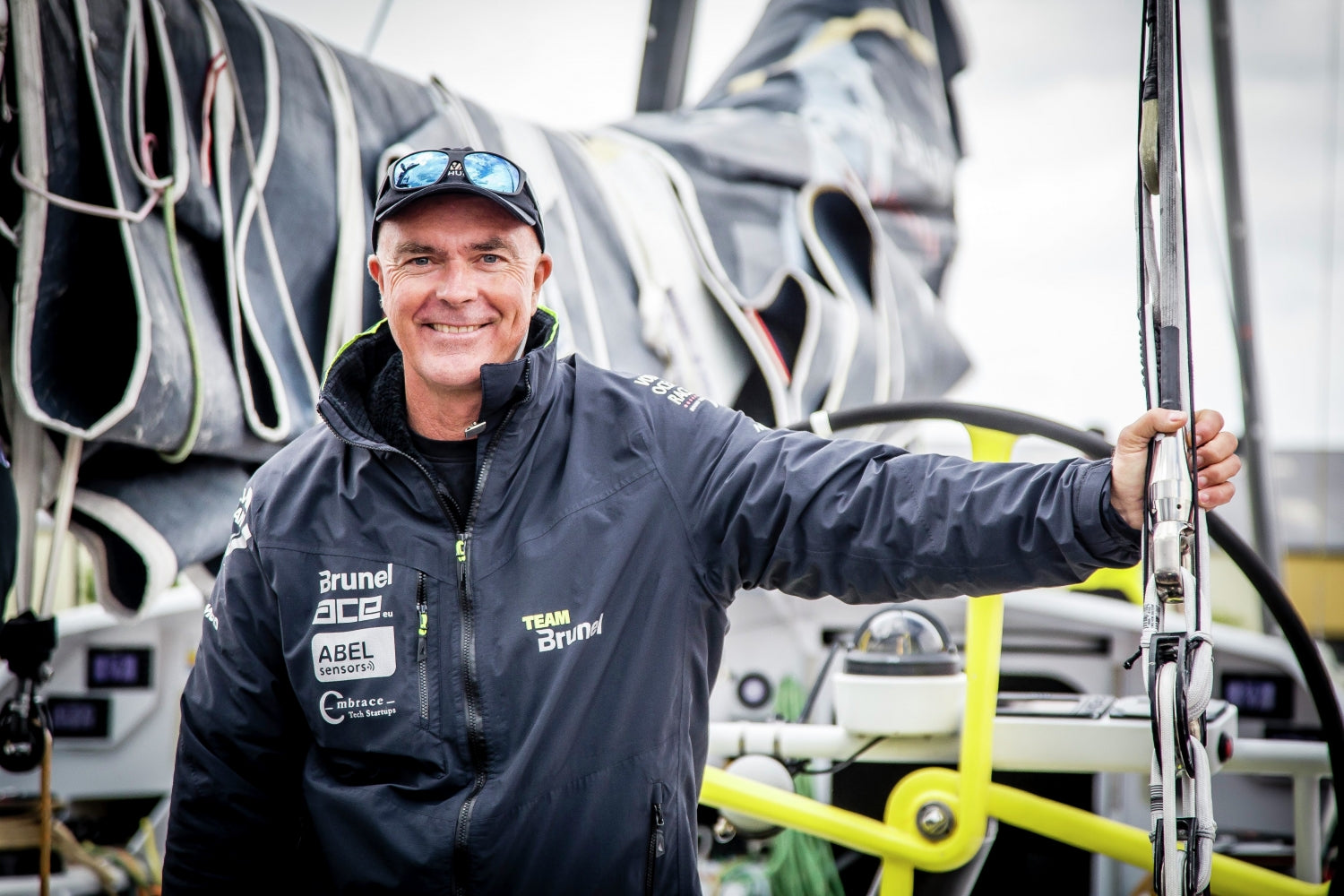
NORTH SAILS ADDS BOUWE BEKKING TO THEIR ROSTER
NORTH SAILS ROSTER BOLSTERED WITH BOUWE BEKKING
One of the Sport’s Most Experienced Sailors Joins North Sails
📸 Jesus Renedo / Volvo AB
North Sails is proud to announce that Bouwe Bekking has joined the brand to support their Grand Prix division. Bekking is considered one of the world’s most accomplished and experienced sailors. The Dutch sailor has participated in eight around-the-world races, his first being the 1985-86 Whitbread onboard Philips Innovator and his most recent as skipper of Team Brunel during the Volvo Ocean Race 2014-15. His experience has earned him the moniker “Volvo Ocean Race Legend.”
Beyond endurance ocean racing, Bekking has extensive sailing experience on various boats. Bekking is a six-time World Champion in multiple classes and has claimed dozens of European and National titles. His name is also in-demand within Superyachts, where he was recently named tactician to J-Class Svea.
“Bouwe is an undisputed opinion leader in our sport,” says Ken Read, North Sails President. “He is highly respected amongst his peers and a familiar face to the global sailing audience. His expertise is a huge advantage to North Sails and our clients. As a result, Bouwe is uniquely positioned to add immediate value to our business. His input will play an important role in ensuring North Sails remains the leader in our sport.”
“Direct feedback from the field is critical to advancing the performance and application of our products,” explains Paul Westlake, Grand Prix Leader, and North Sails Executive Vice President. “Bouwe is actively using North Sails products across a wide range of boats and conditions. His candid and direct feedback is guaranteed to impact future product developments.”
“I have worked with the North Sails team at various points and with numerous projects throughout my sailing career, explains Bekking. “Whether flying off 40-foot waves in the Southern Ocean or inshore day racing, I’ve seen the evolution of the products. Product development and innovation are of particular interest, and I’m looking forward to working closely with a team who shares my ‘let’s give it a go’ attitude.”
Bekking will maintain his robust professional sailing career while supporting North Sails within Grand Prix sailing. He will work closely with his sailing peers, the North product development team, and sales leaders.
The “Volvo Ocean Race Legend” himself recently sat down with Ken Read and master sailmaker Nathan Quirk for Episode 4 of Loft 57, the North Sails Podcast. Collectively, our guests’ experience includes hundreds of thousands of offshore racing miles; Bekking onboard as a sailor, and Quirk in the sail repair loft.
Subscribe to the Loft 57 podcast via Spotify, Apple Podcasts or connect with the North Sails community on Facebook and Instagram. Loft 57 is a North Sails production.
📸 Jesus Renedo / Volvo AB
READ MORE
READ MORE
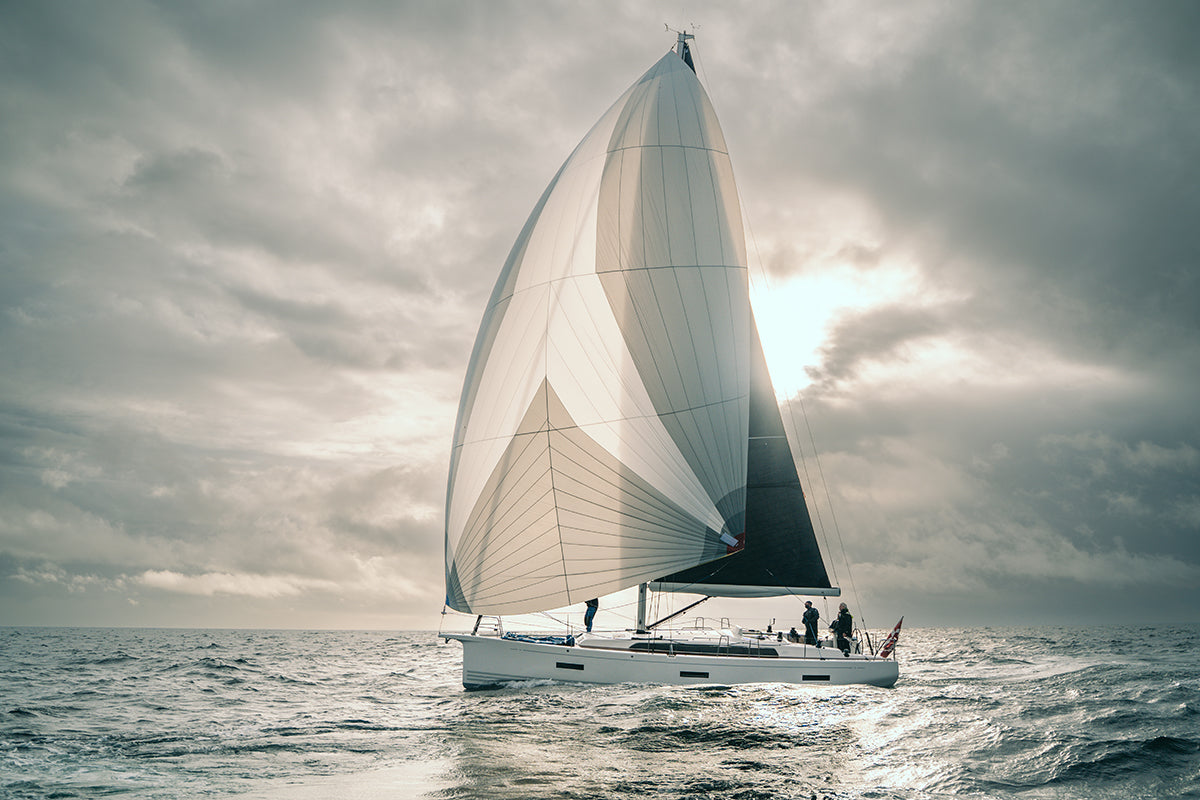
THE PERFECT MATCH: NORTH SAILS + X-YACHTS
The collaboration is based on the fact that a fast, high-quality boat needs a sail inventory to match. And that’s exactly what the collaboration between X-Yachts and North Sails does.
READ MORE
READ MORE
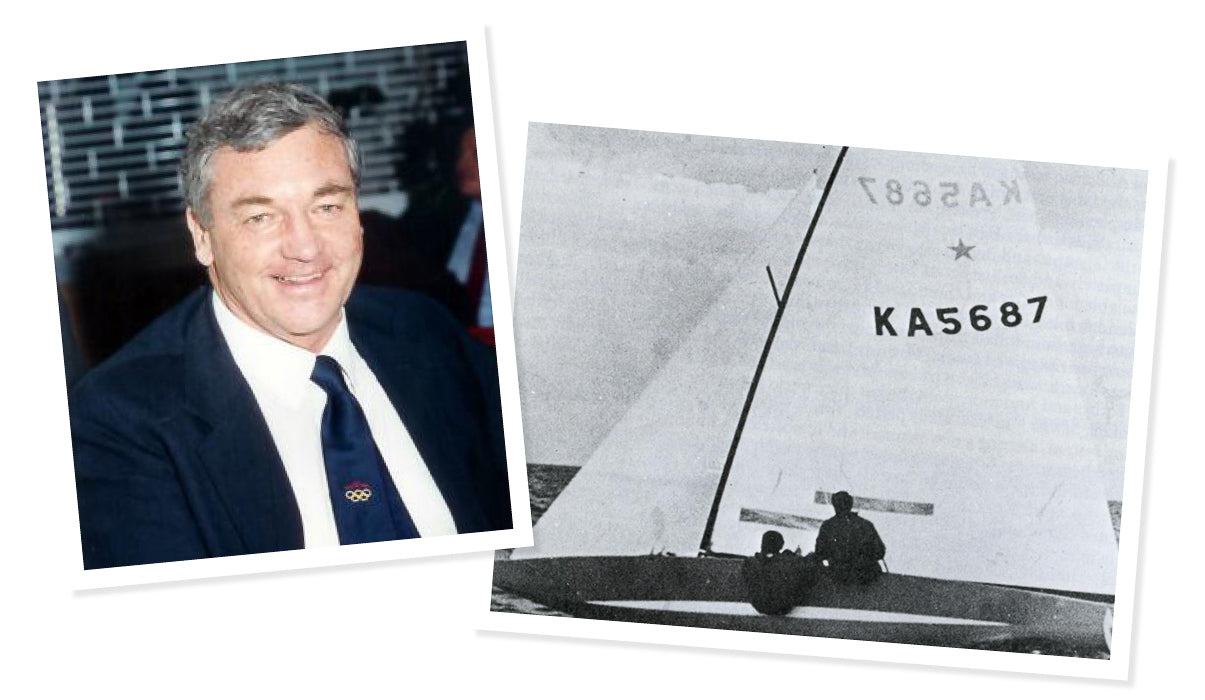
CELEBRATING DAVID FORBES AND HIS VISION FOR THE FUTURE
CELEBRATING DAVID FORBES & HIS VISION FOR THE FUTURE
One of North Sails Australia’s Early Leaders
It’s with great sadness that we mourn the loss of one of North Sails Australia’s early leaders, David Forbes. A successful businessman and close friend of North Sails founder Lowell North, David embraced the position of interim manager of the loft in the late 1970s, to find stability and determine the future of the company.
David’s vision to ensure North Sails Australia was a success led him to Michael Coxon, appointing him Manager of the loft in 1982 which was the beginning of a life-long friendship.
Michael Coxon remembers his mentor sharing his vision clearly, “In the beginning, David came into the loft one to two days a week.” Coxon said. “And the other days, had me out to his business where we’d look at everything from business admin, to the production lines. I spent my time learning from David and he gave me confidence and taught me what business was about. On weekends we sailed Etchells and yachts together where my higher level of education continued on the water under Dave's watchful eye. After a year under Dave's mentorship Dave recommended I purchase North Sails Australia, at which point I stated that we needed to introduce a big boat specialist to compliment my sailmaking, one design, skiff and dinghy expertise. Dave introduced Grant Simmer, fresh from winning the America's Cup as navigator on Australia 11. Dave showed great foresight in pairing Grant and I, recognizing our diverse skills complemented one another and over a 17 year partnership we positioned North Sails Australia to be a highly respected business within the North International Group.”
Forbes had great foresight in both business and on the water as an Olympic Gold Medalist in the Star Class from the Munich 1972 Olympics.
Coxon says, “Dave is the most naturally gifted yachtsman I’ve ever sailed with. He had the ability to feel the boat, and know what to tweak. Balance, trim, sail shape, rig tune, Dave could always put his finger on it after a few minutes on the helm. Naturally gifted and always generously investing in me."
“I became his protégé. I could always call him up and get his advice. If I’ve picked up just a little bit of his skill set, I know I’m better off for it. He’s helped me in both sailing and business and I wouldn’t be where I am today without him.”
“He touched so many people, and there’s no one else in my life who’s helped me more than Dave - though he’d deny it and laugh at me saying that.”
Coxon finished, “Dave Forbes vision positioned North Sails Australia to be where it is today.”
David was a friend to many, and North Sails would like to send our condolences to David's family and friends.
READ MORE
READ MORE
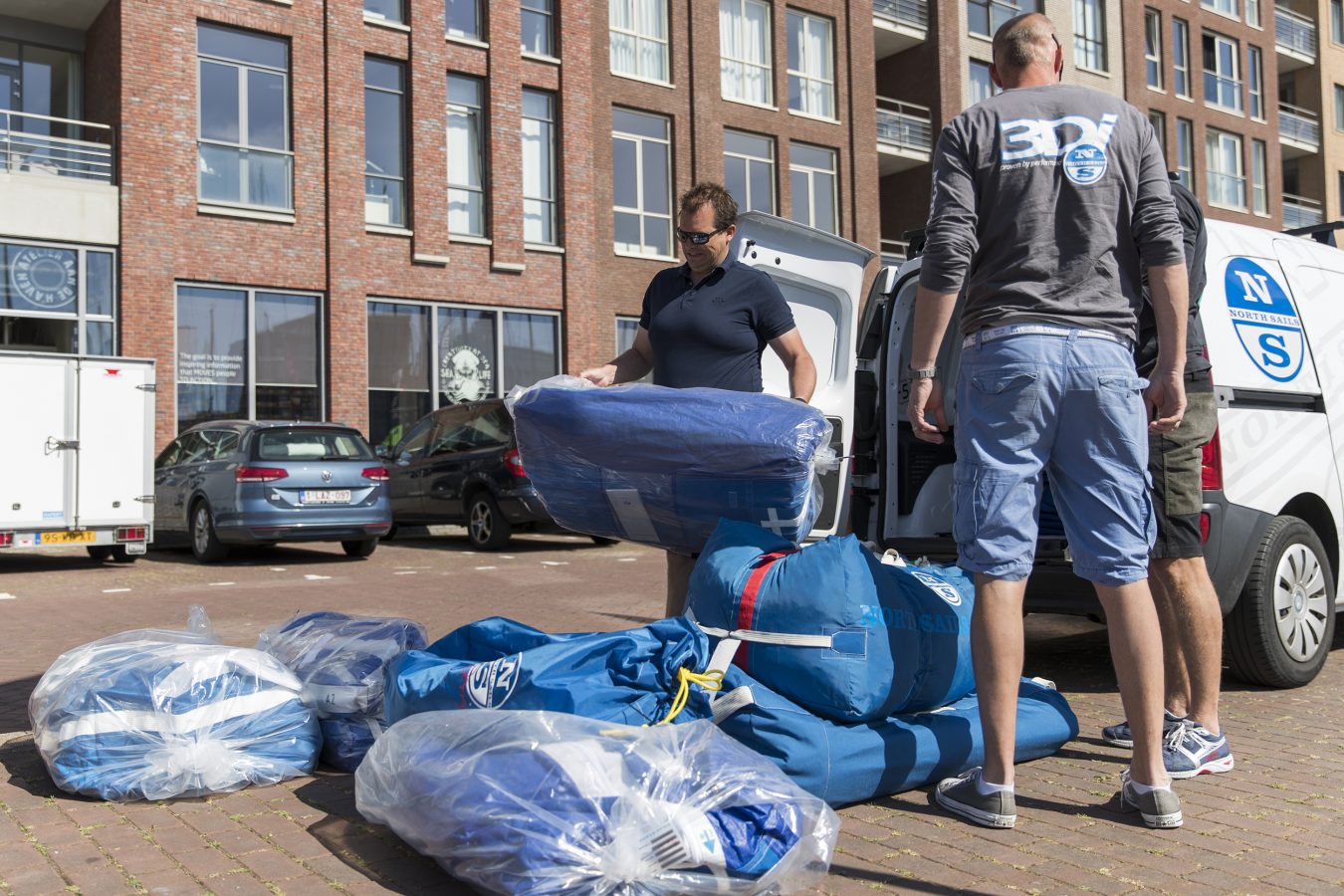
NORTH SAILS KLANTEN TONEN KRACHTEN TIJDENS NSR OFFSHORES | REGATTA SERVICE TIJDENS NSR INSHORES
North Sails klanten tonen krachten tijdens NSR Offshores | Regatta Service tijdens NSR Inshores
Veel zeilers in top drie Vuurschepen Race en North Sea Race
Prachtig resultaten...! In de uitslagen van de Vuurschepen Race en North Sea Race zijn veel North Sails klanten in de top drie beland. De Vuurschepen Race werd op 24 mei voor de 75 ste keer gevaren en voerde het veld van Scheveningen naar Harwich. De North Sea Race vormde traditiegetrouw de terugreis, welke op 27 mei van start ging. In de verschillende ORC, IRC en double handed klassen gingen de deelnemers de strijd met elkaar aan.
De resultaten van de twee races maakt Jacco Huijgen, Operations Manager North Sails Benelux, trots. “In alle klassen zijn onze klanten hoog geëindigd. Dan zie je dat alle energie die we samen met de klanten in de voorbereiding hebben gestoken, zich ook echt uitbetaald. Het is voor ons niet alleen een kwestie van goede zeilen leveren, maar we denken graag mee om de zeilers zo optimaal mogelijk aan het raceseizoen te laten beginnen. Een zeilgarderobe die goed op elkaar aansluit en geschikt is voor de geplande wedstrijden, is hierbij key.”
Komend weekend, van 4 tot en met 6 juni, staan de Inshore races van de North Sea Regatta op het programma. Deze worden gevaren vanuit Scheveningen. Voor de ORC 1 en ORC 2 worden de resultaten van de Inshore races opgeteld bij de uitslagen van de Vuurschepen Race en North Sea Race. De overall winnaar wordt de nieuwe Nederlands Kampioen ORC. Het wordt dus een spannend weekend...
Regatta service tijdens NSR Inshore races
North Sails is tijdens de Inshore races aanwezig om eventuele schades aan zeilen, waar mogelijk, te herstellen. Heeft u schade? Neem dan na de wedstrijden zo snel mogelijk contact met ons op. U vindt onze trailer op het stallingsterrein van Malherbe, direct aan de haven. Iedere wedstrijddag vertrekt de bus met reparaties om 17.30u uit Scheveningen, zodat u de volgende dag weer gebruik kunt maken van uw favoriete zeilen.
Contactpersonen tijdens NSR Inshores
Nic Bol(ORC 2, X-362 Extra Djinn ): +31 (0)6 55376636
Bart Overgaauw(SB20 Manta) : +31 (0)6 50730512
Wouter Köllmann(ORC 2 J99 Lallekönig): +31 (0)6 42156449
Tom van der Vecht(ORC 1 Luffe 40 Kreutz Ass): +31 (0)6 46140346
Joost Houweling(Finn): +31 (0)6 22798462
Trots op onze klanten
De volgende klanten zijn op het podium beland bij de Vuurschepen Race en North Sea Race:
Vuurschepen race
ORC 1
1: Frans van Capelle, Moana, J122
2: Ronald Prins, Sailmon JR, J122
3: Frederic de Visser, Spitfire, J121
IRC 1
1: Frans van Capelle, Moana, J122
2: Ronald Prins, Sailmon JR, J122
ORC 2/ IRC 2
1: Michel Dorsman, Extra Djinn, X362 Sport
ORC 3
1: Simeon Tienpont, Fever, J35
ORC Double handed
2: Willem Schopman, Waverider, Sun Fast 3200
3: Paul Manuel, Jongeheer, J99
IRC Doublehanded
1: Willem Schopman, Waverider, Sun Fast 3200
North Sea race
IRC Zero
1: Van Uden, Gert Jan Poortman, Ker 46
2: Oyster cathcer xxxv, 2: Richard Matthews, CF520
IRC 1
1: Il Corvo, Astrid Vin, JPK 1180
2: Frans van Capelle, Moana, J122
IRC 3
1: Michel Dorsman, Extra Djinn, X362 Sport
2: Richard Palmeer, Jangada, JPK 1010
3: Willem Schopman, Waverider, Sun Fast 3200
ORC 1
1: Van Uden, Gert Jan Poortman, Ker 46
2: Frans van Capelle, Moana, J122
3; Jan-Friso Blacquiere, Blacq Magic, TH38
ORC 2
2: Paul Manuel, Jongeheer, J99
3: Michel Dorsman, Extra Djinn, X362 Sport
IRC Double handed
1: Richard Palmeer, Jangada, JPK 1010
2: Willem Schopman, Waverider, Sun Fast 3200
ORC Double handed
2: Richard Palmeer, Jangada, JPK 1010
3: Willem Schopman, Waverider, Sun Fast 3200
READ MORE
READ MORE

SOLO TUNING GUIDE
The Solo is a boat with a relatively simple rig. Once you are on the water there is little adjustment possible. It is essential therefore that you get the right rig settings before launching. When setting up a new boat you need to establish the following:
Mast Foot Position
In the past we suggested two mast foot positions, but in recent years when sailing in a mixed upwind/downwind race track I have found I liked the one setting for all conditions so this is what we would recommend. Measuring from the front edge of the mast foot to the outside edge of the transom should be as close to 3065mm as possible. Please see Fig 1, 1a, 1b showing how to take this measurement.
PLEASE NOTE with this setting the boom will be lower, if you have limited mobility, sail at a venue where you are constantly tacking or on a club course with more offwind than upwind please feel free to move the heel aft to a setting nearer 3052 mm to keep the boom higher, make it easier to tack and bias performance more to downwind. Secondary to this is boats prior to approximately 2008 may struggle to move the heel forward to this measurement due to the bulkhead position.
Fig 1
Fig 1a
Fig 1b
Mast Rake
This is controlled by forestay tension. Set the forestay so its tight when the back of the mast hits the back of the mast gate, then release the forestay tension by 2 holes on the adjuster, this is the base rake. For those with a mast cutout [please check your mast manufacturer for warranty on this] you can set the average mast rake with a tape measure, should be set at 5940mm measured using a tape measure on the halyard hoisted to your black band and then to the top aft edge of your transom bar. To ensure the hoist of the halyard is at the correct height the tape should read 5030mm when held down the mast to the top of the gooseneck band, this is then at the correct hoist height and can easily be replicated, now you can proceed to measure the rake. See Fig 2 & 2a showing how to do this.
Fig 2
Fig 2a
Shroud Tension
When the shrouds are just in tension the mast should be 5mm from the front of the gate. If you sail on flat water or are over 90kgs you can sail with tighter shrouds to limit sideways bend, in this case the shrouds can be in tension when the mast is 10mm from the front of the gate.
Centreboard Position
Turn the boat on it’s side and drop the board and mark the handle when the leading edge is vertical (LV), relative to the bottom of the case. Then lift the board until the trailing edge is vertical (TV) and mark the handle. Then mark the handle with 20mm spacings to guide when you lift the board further as the breeze builds.
Mast Chock
Use 1 x 10mm chock to be used as per the tuning matrix below.
Control
0-5 knots
6-10 knots
11-16 knots
17+ knots
Centreboard
Leading edge vertical
Trailing edge vertical
40mm up from TV mark
40-100mm up from TV mark
Chock
Chock behind mast
Chock in front
Chock in front
Chock in front
Kicker
Slack
In tension to stop boom
Tension to control leech
Max. kicker
Outhaul
50mm depth in foot
100mm depth in foot
50-100mm depth in foot until overpowered then tension progressively
Max. outhaul with crease along foot
Inhaul
15mm from back of mast
10mm from back of mast
5mm from back of mast
0-5mm from back of mast
Traveller
Positioned so that boom end is over inboard edge of sidedeck
Positioned so boom end is between inboard & outboard edge of sidedeck
Positioned so boom end is over gunwhale, until overpowered then vang sheet and keep traveller on centreline
On centreline
Cunningham
Slack
Slack snug to remove larger wrinkles on luff
Tension progressively to depower
Tension to depower
Because Solos are relatively easy to sail a boatspeed advantage is hard to find. The settings that have been used for this tuning guide are based around a Solo sailor weighing 8085kg using a Selden D+ mast and North Sail. However these settings still apply providing you use the correct mast and sail combination for your weight.
The settings are dependent on sea state, weight, mast, sail and fitness. So in a force 3 a 90kg helm would be on full power settings whereas a 75kg helm with the same rig would be on overpowered settings. The overlap between settings can be achieved with a combination of rig, sail and centreboard adjustment. There are different ways to achieve the same result. If for example you are caught out with light/medium settings in strong breeze raise the centreboard further, use more kicker tension (to bend the mast) cunningham and outhaul tension.
Use a combination of mainsheet tension, kicker tension and traveller position to find the best speed upwind. As a general rule start in light winds with the traveller positioned so that the boom end is over the inboard edge of the sidetank and mainsheet tensioned so that all the leech tell tails are flying. As the wind increases use more mainsheet tension and ease the traveller to stop the boom getting too close to the centreline. Kicker tension in light winds should be set just slack so that it controls leech twist out of tacks. As the breeze increases and you have to ease the mainsheet to keep the boat flat use kicker to control the leech profile, and adjust the traveller (usually move inboard) to keep the boom roughly over the outside edge of the quarter. Once fully overpowered use kicker upwind to increase low down mast bend and flatten the mainsail and pull the traveller to the centreline and leave it.
In a Solo body position is extremely important. In very light airs your body weight should be centred on the thwart, but do not move forward of this point however light it is. Once you are sat on the side deck move back so that your front leg is pressed against the thwart. As you become fully hiked move back to 150mm from thwart, and then up to 300mm as the wind increases.
Offwind
Use only enough centreboard so that the rudder is neutral when the boat is flat with the following sail settings:
Light Airs
Leave the outhaul on its upwind setting. The inhaul (if adjustable) should be released so its slack. The kicker should be slack or just in tension to stop the leech opening too much in the gusts.
Medium Airs
Ease outhaul so that lens foot is fully eased, ease the inhaul until slack. Set the kicker so that the top batten flies approximately 90 degrees to the boat, this allows the leech to open and maximise speed. If planing is a possibility keep the boat as flat as possible and take the mainsheet 2:1 from the boom.
Heavy Airs
Only ease the outhaul on tighter reaches if you can use more power. Ease Inhaul until slack. Once on the broader reaches and run ease outhaul to allow a little depth in the foot. Set the kicker as for medium airs or ease to depower on the reaches. This is also very quick on the run to allow running by the lee. By spending time on the water preferably with a tuning partner you will be able to establish the right settings for all conditions. This will allow you to concentrate more of your energies on finding the quickest way round the course.
READ MORE
READ MORE

LOFT 57 PODCAST: THE EXTREME TESTING GROUND
Offshore sailing has seen a dramatic rise in popularity and awareness. Ocean Race legend Bouwe Bekking joins Ken Read on Episode 4 of the North Sails podcast.
READ MORE
READ MORE
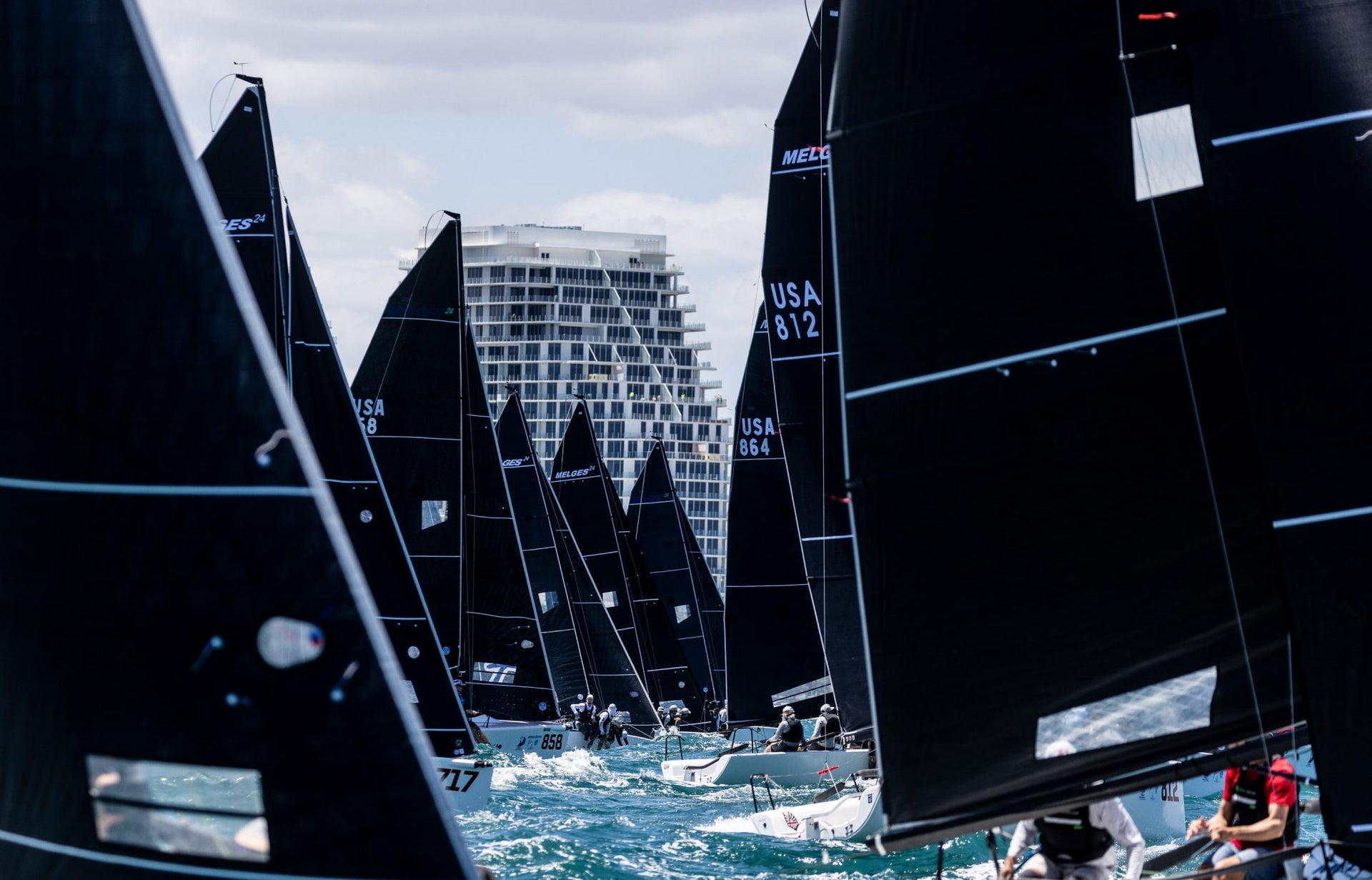
PETER DUNCAN AND TEAM CROWNED 2022 MELGES 24 WORLD CHAMPIONS
PETER DUNCAN AND TEAM CROWNED 2022 MELGES 24 WORLD CHAMPIONS
Coach Chris Larson and Tactician Victor Diaz de Leon Break Down the Win
📸 Matias Capizzano
After a two-year World Championship hiatus, Peter Duncan’s Raza Mixta team proudly hoisted the Melges Performance Sailboats Trophy at the 2022 Melges 24 Class Championship this May in Fort Lauderdale, Florida.
And while Duncan and his crew of Erik Shampain, Morgan Trubovich, Victor Diaz De Leon and Matt Pistay were coming in hot from a successful winter season, winning the Worlds was no easy feat. Getting to the top of the podium required the team to claw back points from deep within the fleet.
North Sails had a chance to check in after their win and get the inside scoop on what went on. Raza Mixta’s tactician Victor Diaz De Leon and team coach, North Sails Expert Chris Larson were happy to walk us through their experience; how it felt and what it took to come from behind.
The Road to Worlds:
Winning a World Championship is never as easy as just showing up and racing hard. Typically there is a long road and hard work that leads a team to the top and Raza Mixta is no exception, with various lead up events and multiple players contributing to reaching the top. Raza Mixta is a young team in terms of sailing together, but the collective experience of all the players is what made the difference.
Pulling veteran talent from the Melges 24 fleet with Shampain and Pistay, mixing in the talented J/70 team of Duncan, Diaz de Leon and Trubovich and rounding out the team with deep coaching experience paid off. Raza Mixta won the class at the Southernmost Regatta and was named first overall in the Bacardi Series before winning the Worlds. The team sailed hard and coach Chris Larson took charge of organizing schedules, training sessions, sail inventory, and boat preparation. According to Diaz de Leon, “Larson was definitely instrumental in us being able to pull it off.”
📸 Sharon Green
Raza Mixta’s Rebound:
A come from behind story. After two thirteenth place finishes on day one, team Raza Mixta found they barely made the top ten, ninth place at the end of the day. Duncan remained optimistic and kept team morale high, but at the same time the team knew they had work to do to get to the finish.
After-dinner debriefs, powerpoint presentations on sail trim and competitors, Larson left nothing to chance. There was ground to make up and still time to come out ahead. “Each day I would be on the water with the team photographing and videoing all of their movements. Later, as I presented I would include details such as sail twist, sheet tension, jib car position, traveler position, forestay sag, rig tension and sail scanning. We would then review video from each maneuver enabling the team to perfect their boat handling.” It worked.
As the event progressed, with Duncan doing a great job getting the boat off the line, constant communication from Shampain, and Trubovich and Pistay hiking, De Leon did what he does best, working his way through the fleet, and rounding the first weather mark in the front pack. From there, the team let their speed and boat handling take over by gaining at every corner of the race track. Having used their throw-out on day one, they could not afford another double-digit finish. By day four they turned an insurmountable deficit to a six point lead and never looked back.
Sails That Deliver Results
Raza Mixta used the class MNi-2 mainsail, Ji-4 Jib and P1 Spinnaker for the entirety of the event. Speed was a strength for them, and they had confidence in their set-up and sails throughout the vast range of conditions seen throughout the event.
The Ji-4’s round entry helped with steering and gave the boat enough power to get through the chop. And Larson thinks that the MNi-2 mainsail is a great all around sail, “It flattens out nicely, but still has shape in the back-end of the sail. This was ideal when the conditions warranted sailing with more twist than normal.”
According to Diaz de Leon “We felt very comfortable with our sail set up and our rig tune set up. We were going well in the light air, medium air and heavy air so we felt confident in our speed. Chris Larson was again a very helpful coach that worked really hard on the rig tune and sail selection.”
Clearly the right choices were made and the hard work paid off. Congratulations Team Raza Mixta.
Hard-won expertise from over six decades of success is built into every sail we make.
This is why North Sails wins more races than any other sailmaker.
Remember to check out the #NSVictoryList and tag us in your posts for a chance to be featured on the wall!
#NSVICTORYLIST
📸 Matias Capizzano
READ MORE
READ MORE
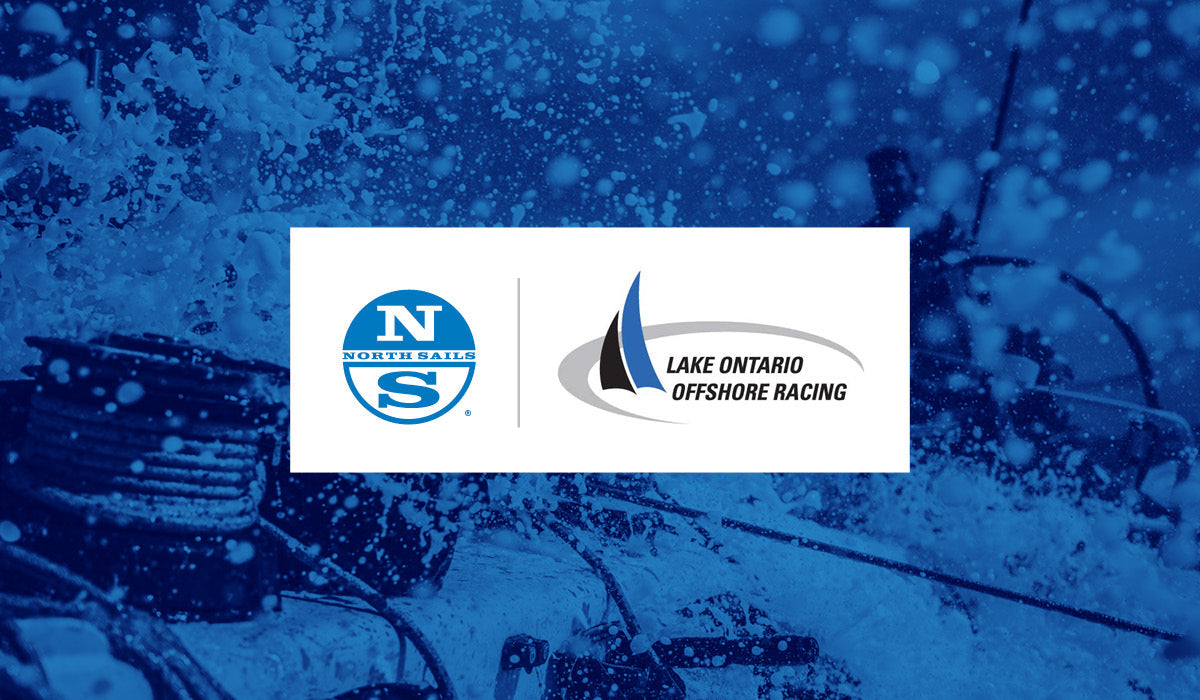
NORTH SAILS CONTINUES PARTNERSHIP WITH LOOR AS EXCLUSIVE SAILMAKER
NORTH SAILS CONTINUES PARTNERSHIP WITH LOOR AS EXCLUSIVE SAILMAKER
Supporting Local Distance Racing
A partnership spanning over 15 years, North Sails is proud to continue its support of LOOR racing for the 2022 season. North Sails will sponsor the Susan Hood Trophy Race and Lake Ontario 300 presented by DriveHG, as well as the LOSHRS series, as the exclusive sailmaker.
After a year without the races and then a hybrid version in 2021, we are excited for these races to come back like old times. They are such staples in the sailing community and we know many sailors are excited for them.” shares Hugh Beaton of the Toronto loft of North Sails. He adds, “These events offer many sailors the opportunity to test their overnight skills and distance racing skills. We at North Sails are pleased to continue our support as exclusive sailmaker sponsor for all events; continuing our support for racers and racing on the Great Lakes.”
The coveted embroidered flags will make a return for the 2022 season. As well, North Sails will provide regatta repair, as in previous years, with post event sail pick up for the Susan Hood Trophy Race and Lake Ontario 300. Aligning with Access Abilities, North Sails will offer a special prize to the LOSHRS fleet.
“The partnership Lake Ontario Offshore Racing (LOOR) has with North Sails is a natural and synergistic one and we are thrilled that once again we will be working together to help promote distance racing on Lake Ontario.” shares Monica Doedens, chair of Lake Ontario Offshore Racing.
Lake Ontario Offshore Racing (LOOR) of the Port Credit Yacht Club (PCYC), is dedicated to bringing the offshore sailboat racing experience to Lake Ontario. This is accomplished with its running of the Lake Ontario 300/600 Challenge Races (LO300/LO600), including the Solo Challenge, the Susan Hood Trophy Race (SHTR) and the Lake Ontario Short Handed Racing Series (LOSHRS) offshore sailboat races.
Whether you race or cruise, your sails are a major investment, and we are committed to helping you maximize their performance and lifespan. The Toronto team of North Sails is available to help you get ready for the season ahead. Connect with a North Sails expert today and receive personalized advice on your sail or service buying questions.
READ MORE
READ MORE
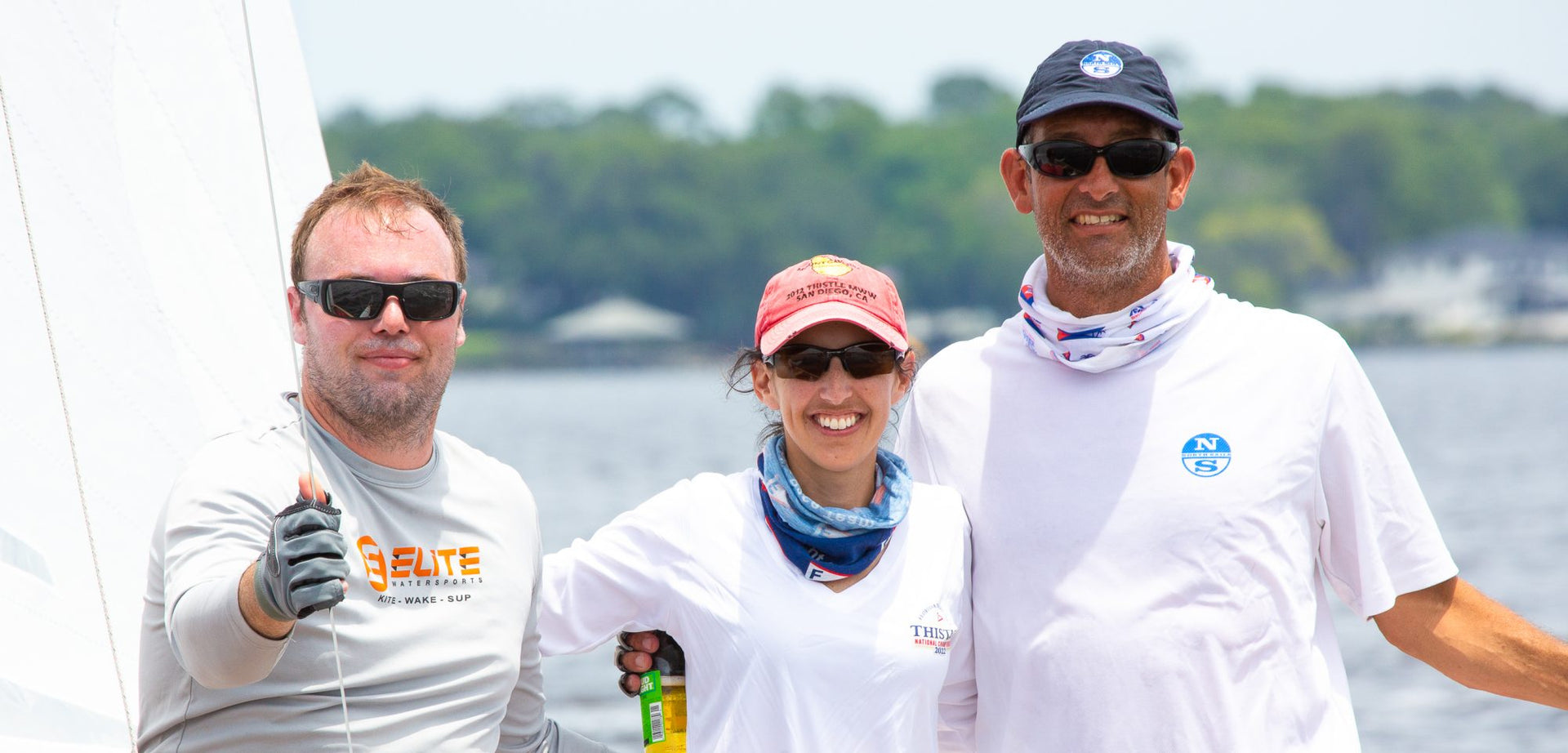
PAUL & MARIE ABDULLAH - THISTLE NATIONAL CHAMPIONS
PAUL & MARIE ABDULLAH – THISTLE NATIONAL CHAMPIONS
Hometown Couple Prevails at Class Championships
📸 Michael Brown
North Sails Expert Paul Abdullah grew up in Jacksonville, Florida, and started sailing in dinghies at a young age and joined his father in various PHRF boats. Currently Abdullah competes across various one-design and PHRF class platforms and has won 17 National, North American, and World championships. However at 18, he got his first Thistle, beginning his journey to where he is today. Along the road he met his wife Marie who was also sailing in the Thistle Class, and they, alongside Barrett Rhoads just won their first Thistle National Championship.
The Thistle Class is known for its family- friendly culture, age – inclusivity, top notch competition, and the camaraderie fostered throughout the fleet. At the 2022 Thistle National Championships there were 10 skippers under the age of 30 and 5 skippers over the age of 70. There were 9 family boats and 13 husband and wife boats racing. Also, with 8 first-time Nationals skippers, there were also 7 past Thistle National Champions in attendance, making this a highly sought after Championship. Last but not least, Thistle #1 sailed in its 50th National Championship!
The 76th Thistle Class National Championship, hosted by Florida Yacht Club, in Abdullah’s hometown of Jacksonville, FL was a marathon event. Sailors faced high temperatures and light breeze for the majority of the regatta placing an emphasis on ensuring ample hydration to keep focus levels sharp throughout the duration of each long day. Seven races were completed, and with no drop allowed, teams were rewarded for low point consistency and minimizing high risk moves. Paul and his team placed no higher than 6th place in all but one race, but managed to secure the victory by eight points over the next finisher, Dave, Becca and Emily Dellenbaugh (another family team)!
📸 Deb Fewell
We sat down with husband- wife duo Paul and Marie to catch up after the big win:
Tell us about your team, and how you all prepared for the National Championships?
Paul: Having a great team allows me to focus on driving. Barrett Rhoads kept me going in the right direction at all times and I kept the boat going fast. Barrett is a great sailor and tactician, and kept us away from too much risk. Marie is one of the best forward crews (she doesn’t think that) and keeps the boat organized for the next mark rounding. Together, we make a great team! Leading up to Nationals, we did a training session in January, won Midwinters East and finished 2nd at Orange Peel. We had a lot of confidence coming into the event.
Marie, tell us about your sailing. How long have you and Paul been sailing together?
Marie: I grew up sailing with my dad in Y- Flyers on Lake Allatoona in Georgia. I later started crewing in the Thistle Class, sailing with my aunt and uncle, as well as in the Snipe Class with various skippers. Every weekend I was on a boat and I loved every minute of it. Paul and I started sailing together in 2009 and I wouldn’t change the last 13 years for anything!
What are some things you guys are especially good at? (Whether it be technique, conditions, starting in big fleets)…
Paul: I like starting in big fleets! We got off the starting line well and it allowed us to sail the first beat conservatively up the middle in most races. The bigger the breeze, the better we are, mostly because of our technique.
Favorite part about sailing with your spouse?
Paul: Sailing with Marie brings a sense of calm on the boat. Ever since we started dating, my success on the water and in life has improved.
Marie: My favorite part about sailing with Paul is simply being together doing what we love. Sailing was such a big part of who we were before we met, and getting to enjoy it together as husband and wife makes it that much more special.
📸 Deb Fewell
Florida Yacht Club is your home club, what does it mean to you to win at home?
Paul: Unbelievable! As Regatta Chair the amount of stress was huge but the team at The Florida Yacht Club kept telling me to focus on my sailing and that allowed me to sail with a clear mind. As soon as the first gun went off I was able to put my focus on sailing. Winning in front of family and friends was a dream come true.
Favorite moment at the 2022 Nationals? Hardest moment? How did you and the team overcome obstacles (bad results, missed a shift, bad starts?)
Paul: Having a 8pt lead going into Thursday and finishing 1-3 in races 5 and 6 to extend our lead. Race 7 was harder than we wanted it to be. Things were going sideways mid-race, but we knew our speed would give us opportunities later in the race. At the last leeward gate, we were just behind Dave and Dan and victory was in sight. We never panicked whenever things weren’t going our way. Our saying in our boat is “boat speed kills” and each race we found our way back in the top 10 by focusing solely on our boat speed and technique.
What products are you using and how did these products play into the result? Did you use our tuning guide? Do our sails seem to be ‘better’ in a certain wind condition?
Paul: I use the DSD sail designs that were designed prior to me joining North Sails. Our design team worked to make the sails better once we put them into our design software and the results really show it. North Sail designs finished 1,2,3..! Whatever it is, we have a sail designed to fit your sailing style. I personally prefer the DSD designs (DSD+ Main, DSD Jib), Dave Dellenbaugh likes the Proctor designs (Proctor Main, Proctor Jib) and Dan Hesse uses the VS designs (VS Main, VS Jib). You can’t go wrong with North Sails! Yes, I wrote the tuning guide and follow it exactly.
With several past National Champions in attendance, this year’s nationals were especially competitive. What differentiated your team from the rest of the pack?
Paul: Someone said when it’s “your time” it’s going to happen. There were a couple races that local knowledge worked out for us, but mostly we had great speed and opportunities just kept coming our way. Winning the Thistle Nationals is a dream come true!
Hard-won expertise from over six decades of success is built into every sail we make.
This is why North Sails wins more races than any other sailmaker.
Remember to check out the #NSVictoryList and tag us in your posts for a chance to be featured on the wall!
#NSVICTORYLIST
📸 Deb Fewell
READ MORE
READ MORE
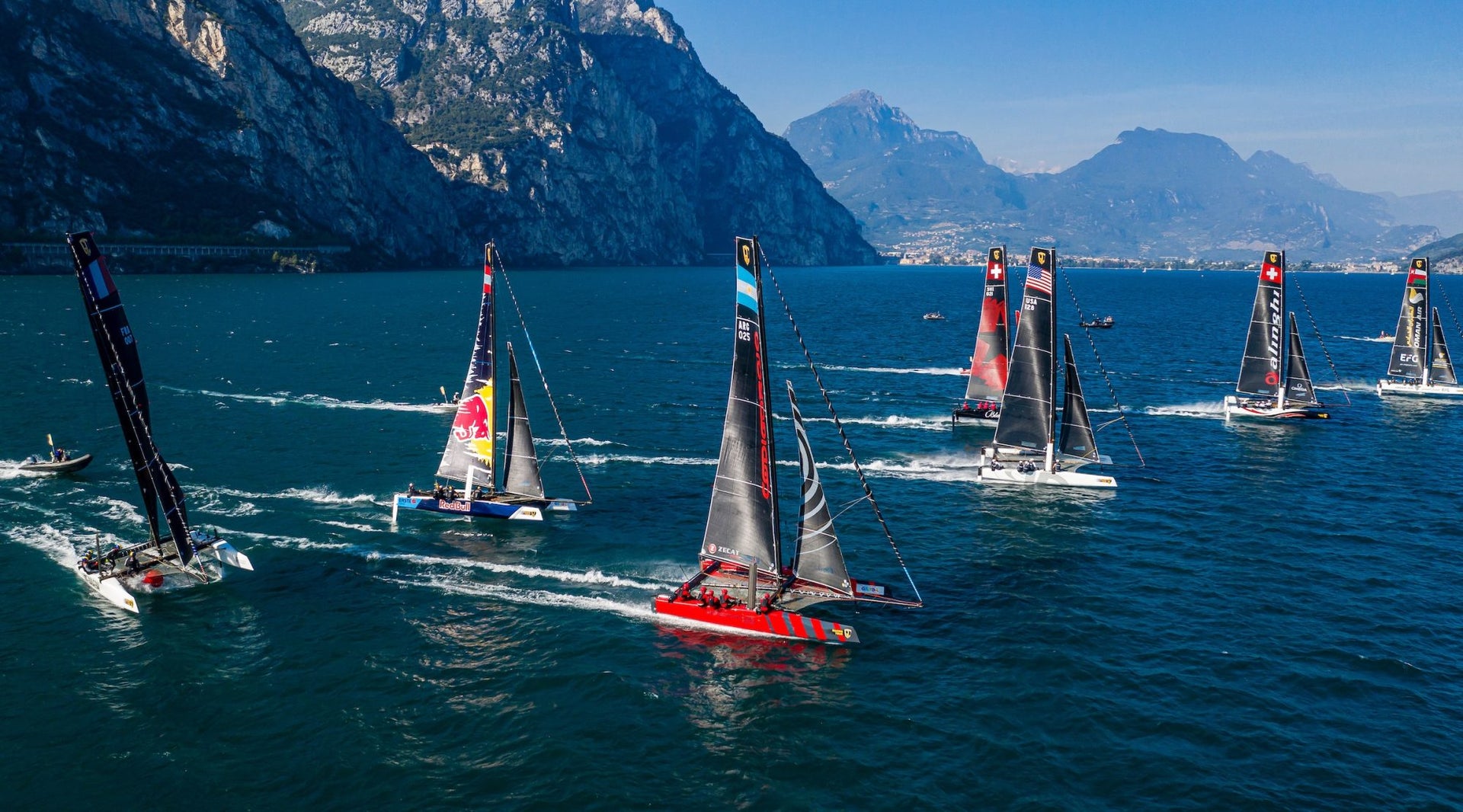
GC32 RACING TOUR STRONGER AND FITTER IN 2022
GC32 RACING TOUR STRONGER & FITTER
A Look Into What’s Coming During the 2022 Season
📸 Sailing Energy / GC32 Racing Tour
The GC32, the sole World Sailing- recognized foiling catamaran big boat class, returns in 2022 with a full season of racing on the GC32 Racing Tour.
Now in its ninth year, the GC32 Racing Tour will visit five of the best foiling venues in southern Europe. The tour kicks off this month with the GC32 Riva Cup held in the big wind, flat water, Alpine mountain encircled Lake Garda. It then moves on to Lagos on Portugal’s Algarve where the GC32 teams can experience Atlantic winds within the confines of a protected bay. Two events will be held in this welcoming venue, the first June 22-26 acting as a warm-up for the main event, the GC32 World Championship held July 13-17. The Tour then returns to Villasimius, Sardinia September 14-18 before concluding in the Spanish Murcia region’s inland sea, the Mar Menor, October 19-23.
More than ten boats are expected for the GC32 World Championship, including the Alinghi team that won the GC32 World Championship when it was last held in Lagos in 2019. Since then Alinghi has united with Red Bull to challenge for the 37th America’s Cup and is fielding two teams on the GC32 Racing Tour: Alinghi Red Bull Racing SUI-8 with their regular helmsman Arnaud Psarofaghis skippering and Alinghi Red Bull Racing SUI-15 helmed by 49er sailor Maxime Bachelin. The latter will be sailed by a younger ‘development’ squad, with the old hands among the SUI-8 crew providing experience as well as a benchmark for their teammates.
View this post on Instagram
A post shared by GC32 Racing Tour (@gc32racingtour)
SailGP teams are also represented with the Danes led by Nicolai Sehested on Team Rockwool Racing who will be looking to improve on their mid-leaderboard finishing position in 2021. Additional SailGP teams are due to join the GC32 Racing Tour later in the season.
A huge development for 2022 is the stronger turn-out of privately backed teams competing, their owners relishing the state of the art foil-borne racing at 30+ knot speeds which the GC32 provides. France’s Erik Maris with his Zoulou team and American Jason Carroll with Argo, are both back. Christian Zuerrer’s Black Star Sailing Team, who managed to beat both Argo and Zoulou on the 2021 GC32 Racing Tour, is also returning for 2022. On board Zuerrer trims main while Kiwi match racer Chris Steele helms.
The Zoulou and Argo teams will be joined in the GC32 Racing Tour’s Owner-Driver Championship this year by GC32 Class President Simon Delzoppo’s film AUS Racing, which last raced on the circuit in 2018 and whose plans to return were previously scuppered by the pandemic. These privately-backed teams are looking forward to not just racing each other but also, the unique opportunity the GC32 Racing Tour provides to line up in anger against a talented field of high performance sailors.
“This new season promises to be exciting with a great mix of old and new teams,” confirms Erik Maris. “I look forward to racing against the other owner-drivers even though the beauty of this class is the mix of fantastic professionals and amateurs.”
📸 Sailing Energy / GC32 Racing Tour
READ MORE
READ MORE
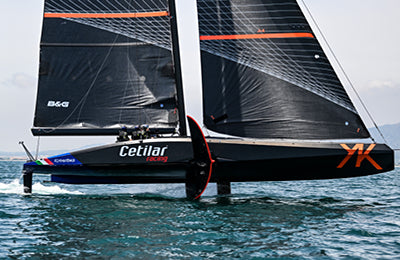
RECENTLY LAUNCHED: FLYINGNIKKA
RECENTLY LAUNCHED: FLYINGNIKKA
Roberto Lacorte’s New Racing Machine is Pure Performance
It was the most anticipated launch of 2022 and one that generated a buzz of excitement. A challenge within a challenge, FlyingNikka is the first yacht to tackle so many design boundaries. The 60′ Mark Mills designed mini-maxi experienced the first ‘flights’ in Valencia in early May and is soon departing to Italy with a mission; to claim race records of the prominent offshore regattas. North Sails is a longtime supplier to the ‘Nikka programs, and we’re honored to have played a part in bringing FlyingNikka to life.
“To fully understand the meaning and purpose of such a boat, it is first necessary to get acquainted with its owner Roberto Lacorte,” says North expert and Italian sales manager Alessio Razeto.
Razeto heads up the FlyingNikka sail program and serves as the team’s sail trimmer. He explains more from Valencia:
“We met with Roberto during the construction of the first Nikka, a Vismara-Mills 47. It was 2012, and compared to where we are now, it seems like a lifetime ago! In those years one of his other creations was taking shape, the 151 Miglia – a regatta that is now sold out with every edition.”
In 2012, Lacorte’s core team was formed, a group still together over a decade later. From the 47′, the program moved on to its next ambitious project, SuperNikka. From a blank sheet of paper and the design vision of Mark Mills and Alessandro Vismara, SuperNikka saw immediate success. The boat claimed the 151’s Line Honors in 2015 just four days after her launch, a hint that this was a program that would never stop racing alongside such an owner, neither at sea nor in the design office.
With the original group intact, the boat continued to do very well, and the results kept coming in. But despite their numerous successes, the team always felt compromised. “Sometimes we ended racing with 72s, and in other regattas, we sailed against the 50s with mixed results, Razeto explains. “And so we reached a turning point: changing the boat and moving forward along the path of friendship and sport, consolidated by thousands of miles in regattas.”
Razeto elaborates, “FlyingNikka is how Roberto Lacorte abandoned the path of compromise. He wanted a pure racing machine.”
Mark Mills, again the facilitator of Lacorte’s vision, presented the first drawing of a reasonably radical 75′. As the AC75s had just hit the water, the attention – and the inevitable doubts – of the entire world sailing community were mesmerized by the new America’s Cup monsters. But Lacorte knew there were boundaries to push further.
‘What’s new? I want to leave my mark” were Roberto’s exact words as he observed the plans for the new concept, to which Mills immediately took up the challenge.
“And so, we started too,” concludes Razeto – sharing his vision and demonstrating the cohesion of the group once again. “This is how FlyingNikka was born, an unparalleled design challenge. The boat and the sail inventory were an infinite series of uncharted design aspects, and a direct technology transfer from the experience North Sails gained during the 36th America’s Cup. But, unlike the Cup boats, which are designed to always fly, we will sail distance and, at times, stay offshore overnight. We will have to have a seaworthy boat and, last but not least, with acceptable performance even in displacement, we have a thermal engine and so on. We like to think that we have extended the concept of high limit and low limit of the AC75. And in this, we are indeed the first.
FlyingNikka’s Sail Inventory:
FlyingNikka’s sail inventory enjoys a considerable advantage from North HELIX Structured Luff, a technology derived from the America’s Cup, and yields sail with a more dynamic shape. “This is not an insignificant detail onboard a hull without a backstay or flying shrouds,” Razeto explains. “These load sharing sailing transfer to 80% of the overall sail load in the jib with 20% remaining on the forestay. A similar situation applies to the mainsail, also designed HELIX.”
All of FlyingNikka’s sails are 3Di Raw, and according to Razeto, “We have coined the new term ‘ultra-custom.”
FlyingNikka’s sail inventory includes a 140sqm square-top Helix mainsail, with two reefs (122 and 73sqm), four Helix headsail sails, from the 93sqm J1 to the 44sqm J4, all for flying speeds, and a large Helix Code sail of 150 square meters to be used solely for displacement sailing. Her total sail area is 564 sqm, approximately the size of two tennis courts.
Razeto joined the team in Valencia for the first trial and, considering a thousand unknowns of the project, saw the new boat fly on several occasions and sail very fast in light winds. The FlyingNikka program has many miles and many races ahead of it. It’s an ambitious project with a big family vibe amongst the close-knit team, just like when Roberto Lacorte, in 2012, launched his first Nikka into the water.
“A lifetime ago, indeed.”
READ MORE
READ MORE
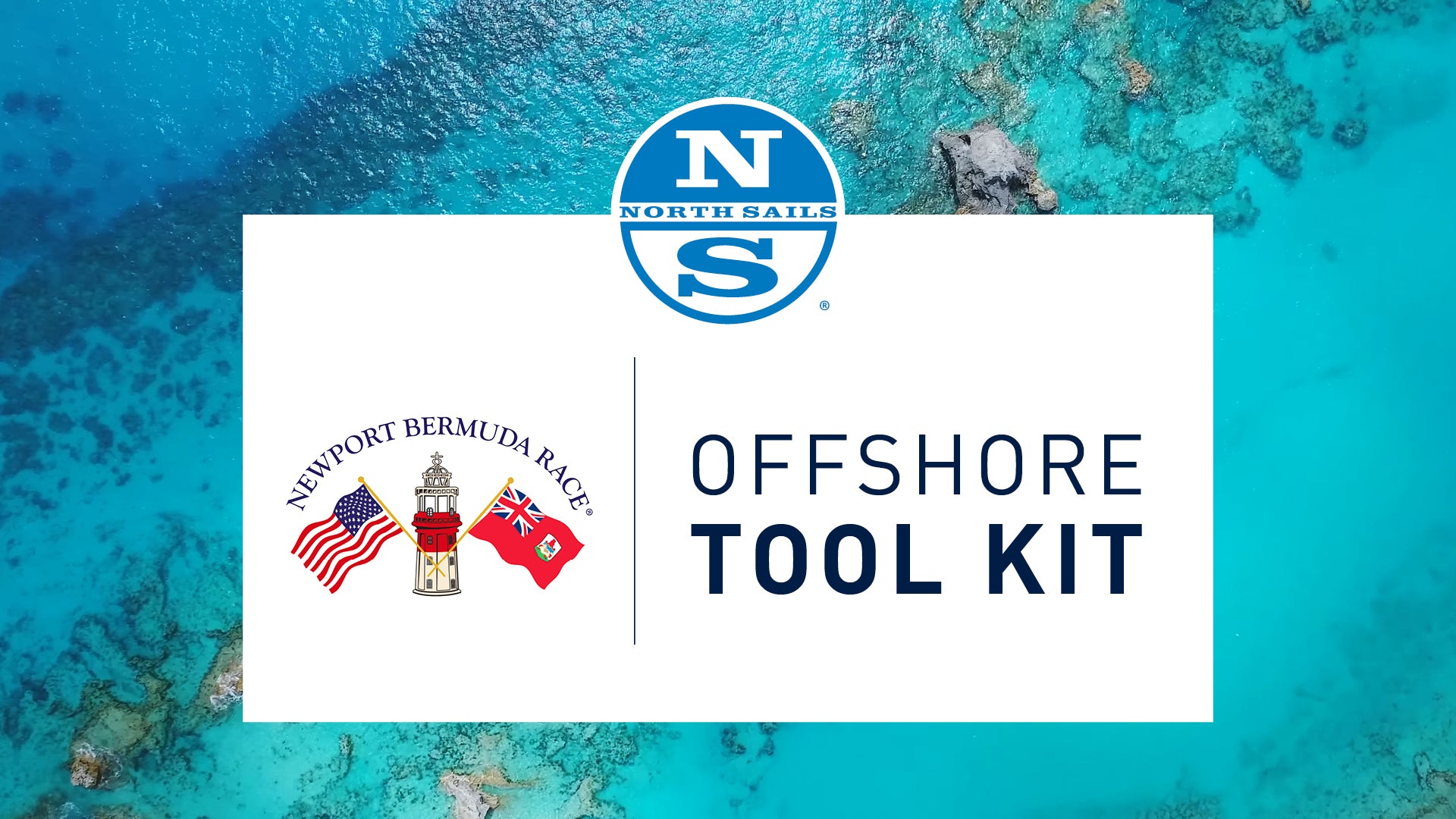
NEWPORT BERMUDA RACE OFFSHORE TOOLKIT
Get Ready for the Newport Bermuda Race
When heading offshore, there are many things to keep in mind that can help you make it to the finish line in one piece. Planning ahead can contribute to your success and assure your crew and your boat is set up to take on anything mother nature can bring. Here are some articles that will help you plan ahead, expect the unexpected, and get the best results in the upcoming Newport Bermuda Race.
Good luck, sail fast, be safe, and sail smart!
Finding the Right Fit
Ken Read has plenty of experience in building ocean racing teams. Here is his advice for speed and success when it comes to finding the right players for the positions.
BUILD YOUR TEAM
Planning Ahead
Preparing successfully to compete in the biggest offshore races requires putting your attention to every detail. When sailing the Rolex Sydney Hobart Yacht Race (or a similar race that heads well offshore such as the Newport Bermuda Race, Fastnet or Transpac), you’ll need to win a different sort of race after crossing the finish line—the delivery back to your home port.
FORECASTING
Fueling Your Crew
For many teams, preparing for any offshore race begins immediately after the finish of the previous edition. Here’s what Sarah O’Kane from Shorebase, a logistics company, says is important to properly provisioning for your next offshore adventure.
LEARN MORE
The Solution To Every Hoist
When it comes to hoisting your spinnaker, there are some details to consider that make everyone’s life easier (or harder). Having zippers instead of bands is a great way to achieve a smoother, cleaner and quicker hoist, as well as help keep trash out of the ocean.
LEARN HOW
Shift Changes: Know Your Role
It is important to always have a clear strategy for the team on deck to follow, so that rest periods by the navigator do not lead to missed opportunities or mistakes.
LEARN MORE
To Reef or Not to Reef
Shortening sail quickly and easily when the breeze comes on is key to looking after your sails and your crew.
LEARN MORE
Safety is No Accident
Hardcore ocean racers and coastal cruisers alike should all make safety at sea a priority. North Sails President and offshore veteran, Ken Read, shares his tips and best protocols for sailing offshore.
LEARN MORE
Get Downwind, Fast!
Steering off the wind, on reaches and runs, requires a coordinated effort between helmsman and spinnaker trimmer. More often than not there are conflicting suggestions: Go up. Go down. Be more aggressive. Steer less. Hear our thoughts on how to manage feedback from the crew.
HOW TO
The Trip Home is Just as Important
Preparing successfully to compete in the biggest offshore races requires putting your attention to every detail. When sailing an offshore race you’ll need to win a different sort of race after crossing the finish line—the delivery back to your home port.
LEARN MORE
Inventory Checks
Have you made arrangements for sail check-ups after the delivery home? Every sail serviced in a North loft undergoes a thorough inspection designed to identify maintenance issues early, so they do not become major problems later on. Contact your nearest loft when you hit the dock after your delivery. We look forward to helping you maintain your sail inventory so you are ready for the next event.
CONTACT US
READ MORE
READ MORE
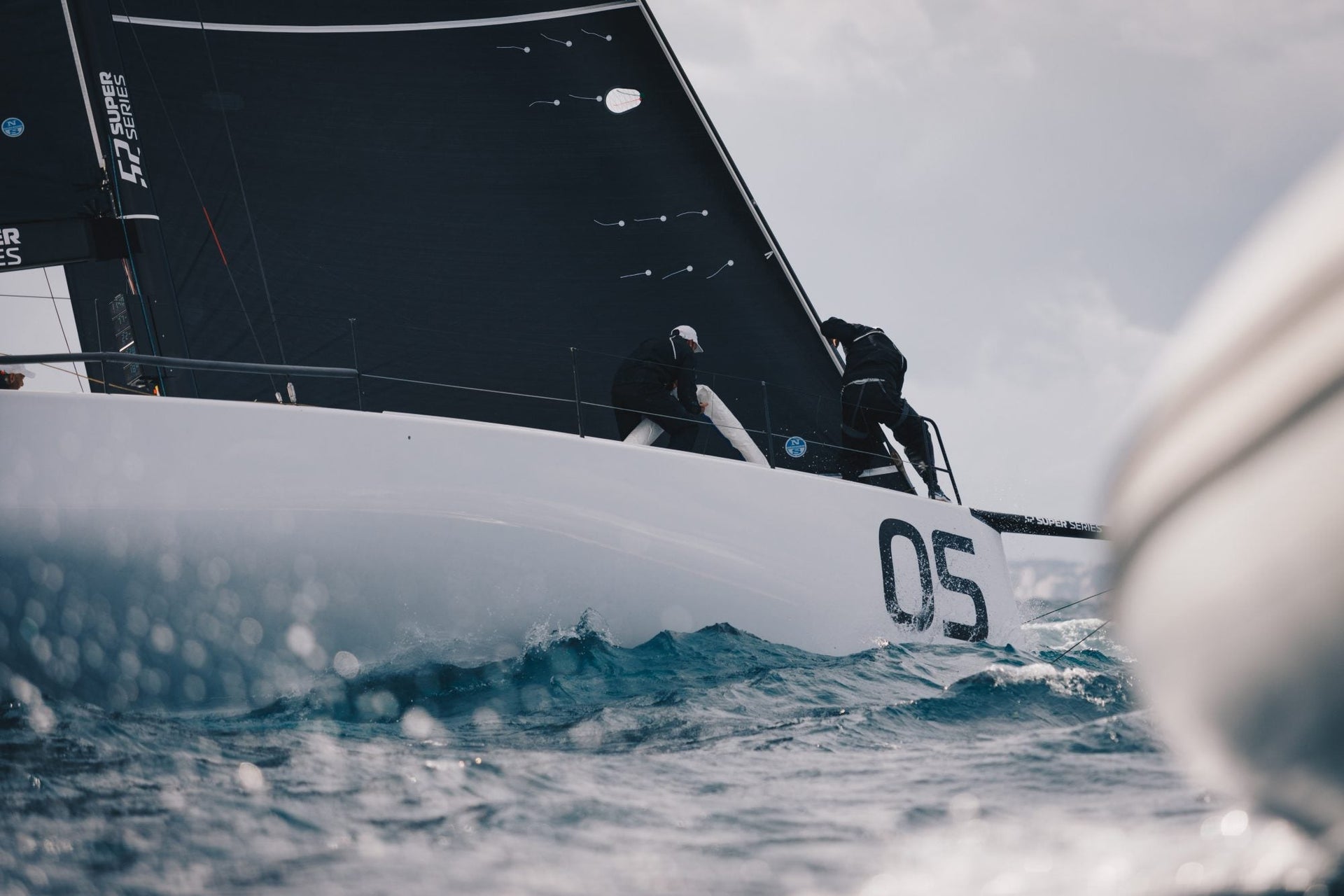
READY FOR ANOTHER SEASON OF SUPER SERIES SAILING?
READY FOR ANOTHER SEASON OF SUPER SERIES SAILING?
The Ultra Competitive TP52 Circuit Commences in Late May
📸 Atila Madrona
The 52 Super Series is gearing up to kick off another season of competitive sailing with five events in this high-powered circuit. As the sailmaker of choice to the majority of the fleet, North Sails eagerly anticipates the season opener when the Super Series fleet lines up next week in Baiona, Spain.
For those readers who are less familiar with the 52 Super Series, let us fill you in. This best of five series is one of the most competitive circuits in our sport. It draws some of the biggest names in sailing and has an aggressive sail development cycle that rivals that of the America’s Cup. The series began in 2012 and up until last year, only two teams dominated the overall season championship. In 2021, Mr Takashi Okura’s “Sled” ended that reign by not only becoming the 52 Super Series champions but also winning the coveted World Championships. Mr. Okura and his international crew will look to defend their status against the 9-boat fleet this season.
“In this game of millimeter perfect competitive racing, we’re ultimately judged on the performance of our product, and performance equals results,” remarks North Sails Grand Prix leader Paul “Flipper” Westlake. “For over a decade, North Sails TP52 class experts and sail designers have gathered feedback from the teams in the Series and this collective experience is fundamental to building the fastest sails on the racecourse.”
But in a class as refined as the TP52, where do you find your next performance gain?
North Sails Dave Lenz explains, “The trim techniques, the sail shapes…these sailors know their boat speed levers and because of that, we’re not radically changing the sail designs and structures each season. Instead, we explore fine-tune details to make that flying shape more active, which allows the trimmers to further manipulate the sail’s shape across the range.”
Last season saw North-powered teams adopt Helix Structured Luff and we expect to see even more throughout the fleet in 2022. “Helix is a game-changer that enables a new gear,” comments Juan Meseguer, North Sails designer and designer for TP52 Provezza. “The structured luff sails have a more dynamic shape, which translates into more power for the boat. We learned a lot last season and from our design team’s work within America’s Cup. Helix is the future, and we’re going to keep exploring this new design space.”
52 Super Series racing commences on May 23 in Baiona, Spain. This is the first of five events scheduled through October 2022. Learn more about the Super Series and follow all the action here.
📸 Atila Madrona
READ MORE
READ MORE
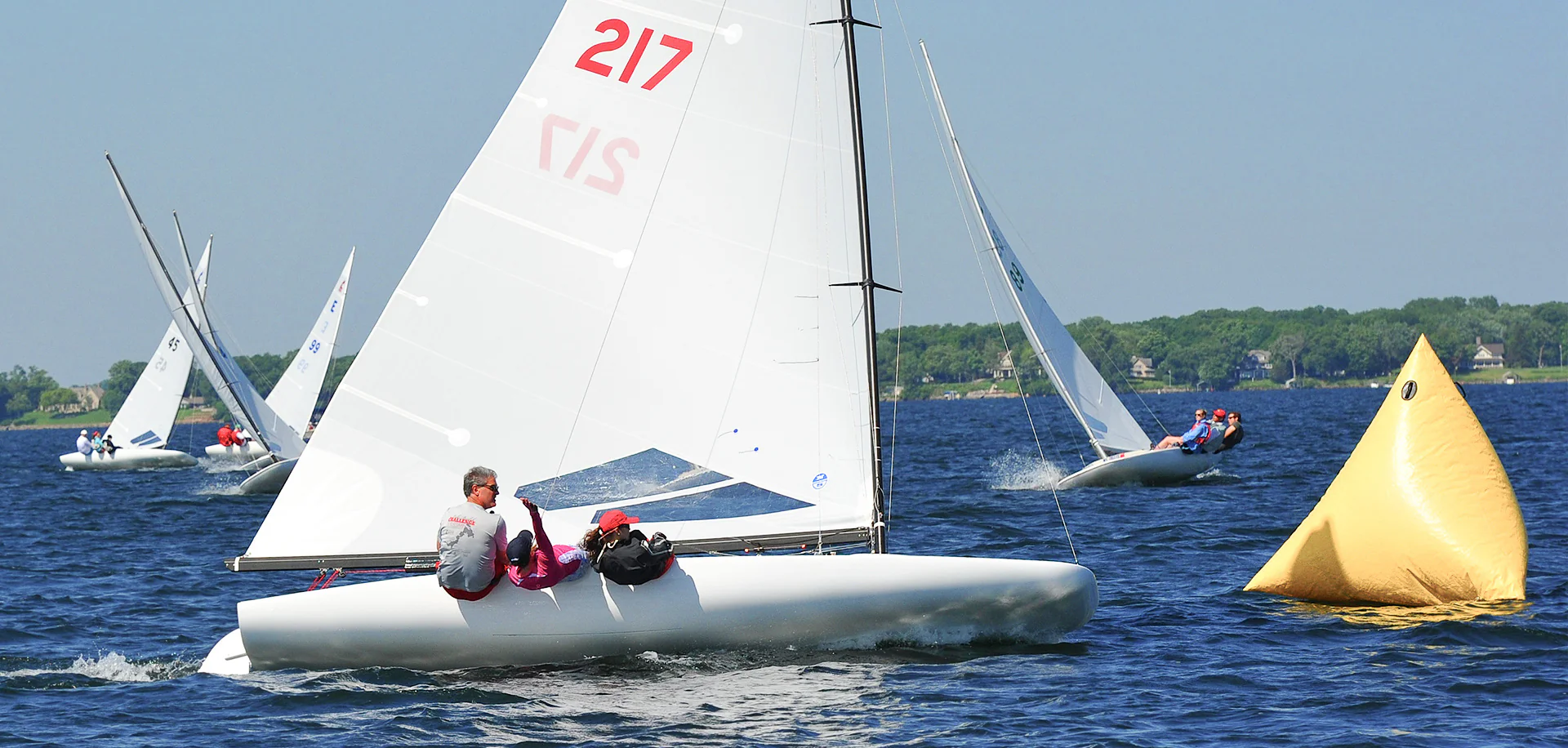
THE SCOW SAILOR'S GUIDE
THE SCOW SAILOR’S GUIDE
North Sails Tuning Guides, Webinars and More
📸 Hannah Lee Noll
North Sails has been manufacturing and designing championship winning scow sails for over forty years and look forward to doing so for forty more. The North Sails One Design team has a long tradition of serving one design fleets all over the country and we look forward to working with you! Our network of local one design experts and dealers are available to help you get the most out of your sails so you can reach your goals whether it is an informal evening race, or the Class Championship. North Sails is continually developing and improving our products and services to enable you to sail faster is not just our goal; it is our obsession.
“The North Sails team will have a presence at every major scow regatta on the calendar, and we’re dedicated to providing the latest tips, tricks and tuning info to get the most out of your North Sails scow designs. We have put a huge effort into modernizing our product line using the best software, best materials and hundreds of hours on the water to refine the designs,” says North Sails Expert, Jeff Bonanni.
Get to Know Your Class Experts
Allan Terhune has won eleven North American Championships (in the Lightning, Flying Scot and Thistle Classes) and was crowned the 2013 J/22 World Champion, a two time E Scow Eastern Champion crew and is the current ILYA MC Scow Champion. Allan is also a class expert in the E Scow, MC Scow, Etchells, J/70, J/80, J/88, J/105, J/111 with many podium finishes in each class. Allan is a resident of Annapolis, MD. In 2007, Terhune was awarded US Sailing’s One Design Leadership Award and named Rolex Yachtsman of the Year Finalist in 2008 and 2013. Allan has been with North Sails since 2007.
Jeffrey Bonanni has won 5 National and North American Championships, including the 2015 E Scow National Championship. He is one of a small handful of helmsman to have won all 6 National Championship trophy races. Jeff actively races in the E Scow, Melges 20, Melges 24 and Etchells classes, as well as coaching the Northeast’s top junior sailors on Barnegat Bay. Jeff currently serves on the National Class E Scow Association’s Board of Directors and is the Commodore of the Eastern Class E Scow Association. Jeff is a resident of Little Silver, New Jersey and a graduate of Boston College, where he was an ICSA All American Skipper.
Eric Doyle – Eric was raised in Pass Christian along the Mississippi Gulf Coast, where he learned at a ripe young that he was hooked on sailing. Eric began his career at North Sails in 1992. Shortly after starting at North Sails One Design, he was hired by Dennis Conner to sail with Stars & Stripes America’s Cup campaign in 2000. Continuing on he raced with BMW Oracle for the 2003 and 2007 America’s Cup campaigns. Eric’s passion is with smaller keel boats like the Etchells, Melges 24, and J/70, but his favorite boat is the Star in which he won the World Championship in 1999 as skipper and the coveted Bacardi Cup in 2019! Eric is currently based in our San Diego Loft and when he’s not racing or coaching he’s constantly working on R&D sails for the One Design team.
Tim Carlson – Tim Carlson has been selling North Sails for over 5 years as a North Sails representative in the Upper-Midwest and offers a wide variety of services to the vibrant sailing scene in the Twin Cities. Tim is proud to serve the members of Wayzata, Minnetonka, and White Bear Lake Yacht Clubs which host some of the most competitive weekly races in the country. While Tim is fluent in the ways of inland lake sailing, he is no stranger to offshore sailing on the Great Lakes. Over the years, he has participated in the Chicago Mac, Bayview Mac, Trans-Superior, and many more.
📸 Hannah Lee Noll
Tuning Guides
North Sails Experts carefully create and update each class’ tuning guide each season and upon the launch of new sail designs. Make sure you are optimizing your rig, sails, and boatspeed by downloading your class’ guide below.
A SCOW
E SCOW – Newly Updated in May 2022
C SCOW
MC SCOW
M-16 SCOW
M-20 SCOW
X-BOAT
Client and Expert Testimonials
“After North updated their sail selections recently the Magnum has been the only sail that I use. Upwind it is easy to trim and keep the boat on rails but downwind is where it really shines. I was sold on it once I realized I was able to keep pace in the light stuff with the smaller sailors. ” – Sean Bradley
“E Scow racing rewards the teams that put in 100% effort around the race track. The boat is so dynamic and fast, you’re always within striking distance of the next pack. My favorite races are not the wins, but the races where we passed thirty boats to finish fifth.” – Jeff Bonanni
“The MC Magnum is a powerful sail. The results are here and we are very confident that the MC Magnum will be a huge success this summer. We made some significant changes to the MC Tuning Guide, including shroud tension and board angles, which are crucial for boat speed. Make sure to check it out! The MC Magnum is a MUST HAVE!” – Allan Terhune
Webinars
North Sails Experts and Class Champions conduct regular webinars to touch on teaching moments from past events, discuss changes to the tuning guides, explain new sail designs and their intricacies and take the time to answer your questions. Take a look through our collection of Scow Webinars, and learn something new from a class expert!
NORTH SAILS SCOW WEBINARS
READ MORE
READ MORE
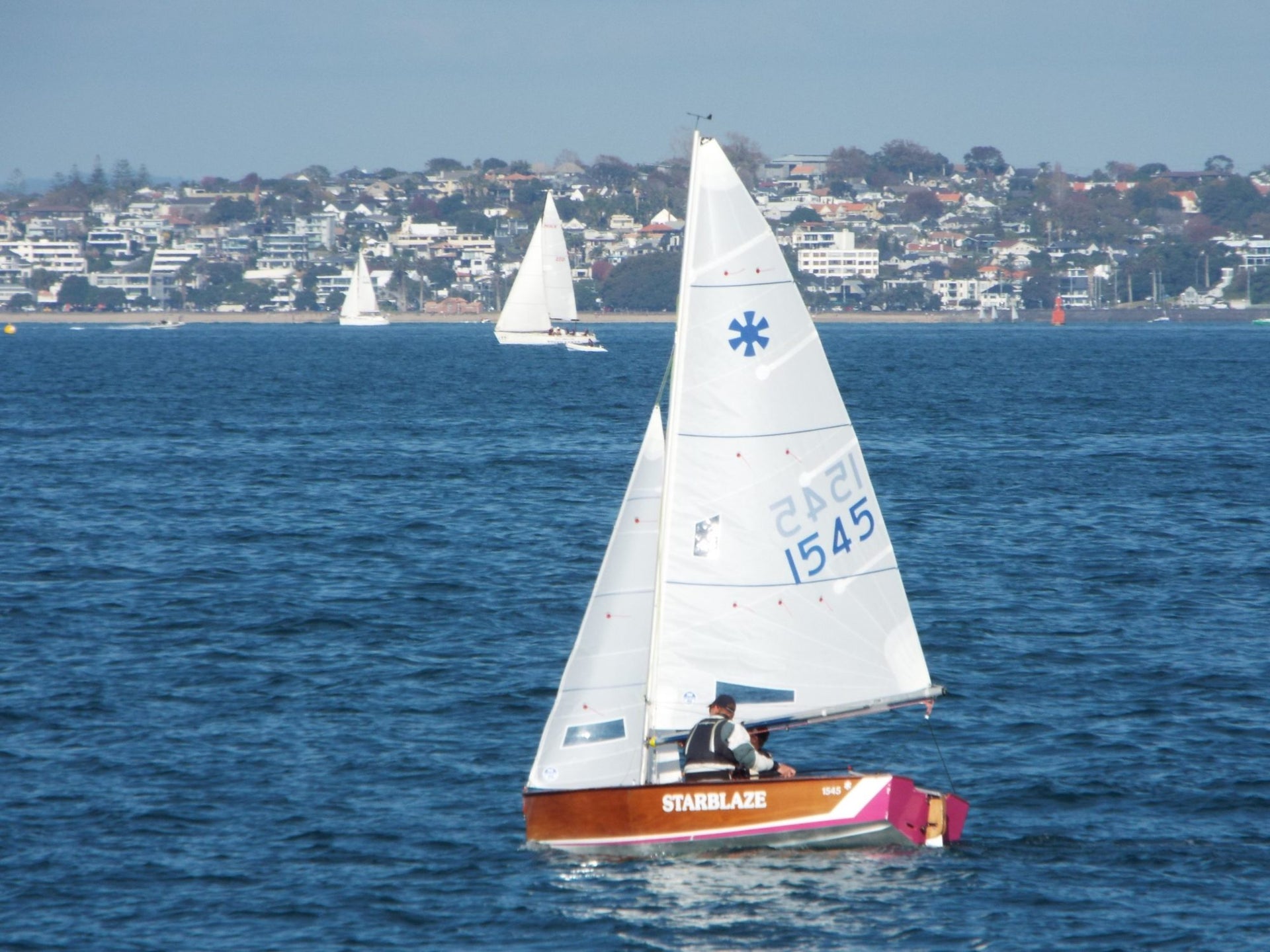
FATHER-SON DUO WINS NEW ZEALAND SUNBURST NATIONAL CHAMPIONSHIPS
FATHER-SON DUO WINS NEW ZEALAND SUNBURST NATIONAL CHAMPIONSHIPS
Catch Up With Winner Andrew Wills, Who Sailed With His His 9-Year-Old Son Leo
North Sails Sales Expert Andrew Wills is a 2 time World Maxi title winner and an Etchells class World Champion, in which he has also won North American and European titles. Wills has also claimed over 30 national championships in various classes and has also successfully coached many Youth National and World champions who have become America’s Cup and Olympic winners. All of that is quite impressive, but now Andrew can say he is a National Champion in the Sunburst Class, alongside his 9-year-old son, Leo.
The Sunburst Class was originally designed in the late 1960s in New Zealand, by John Balmain Brooke. It became an extremely popular class, as it was a great vessel to teach beginner sailors, and kids. Intended as a two-person boat, the Sunburst is easily sailed single-handed in light to moderate conditions. The Sunburst is usually rigged with a mainsail, jib, and a small spinnaker. The perfect boat for a parent-child duo…
Leo had only recently completed his first learn to sail course prior to hopping in the 3.5 meter dinghy with his father. According to Yachting New Zealand, the father-son duo had never sailed the Sunburst together before, so Thursday after school, Andrew scooped Leo up for a shake down sail. At the top mark Leo made it absolutely clear to his father that they would not be flying the spinnaker, and Andrew listened to his son’s demand.
Going into day one of racing, Andrew considered entering the non- spinnaker division, to ease Leo into the boat, but Bruce Yarton, the event organizer, stated that the two fleets would start together, so Andrew should pack the spinnaker, and only hoist it if Leo is ready. Bruce also gave Andrew some winning words of wisdom - “take some lollies, and give him one every time you hoist the spinnaker.” (Yachting NZL).
Conditions over the three-day event saw light breeze and flat water, the perfect recipe for the Wills team, sailing on Starblaze. Being such a family friendly event, the Sunburst Nationals saw several family teams competing. The seven-race series saw five teams in total winning a race, and eight of the top nine teams were family teams, they also swept the podium. Andrew and Leo Wills won the event by four points.
Andrew told Yachting New Zealand that he “doesn't really know where his sailing journey will take him as a parent but is keen to do more with his children, even if it means parting with a few more lollies.”
North Sails and the Sunburst Class -
Over the years North Sails has worked with quite a few teams refining our Sunburst designs. Each time just making the design a little better. What we have come up with is a very fast all round set of sails which is very easy to set up and trim.
We also have the very best team making the sails with over 40 years of experience. Both Derek Scott and Rod Chave have been working for North Sails New Zealand for over 20 years and that proves they love and care about making the fastest sails they can.
SUNBURST CLASS PAGE
READ MORE
READ MORE
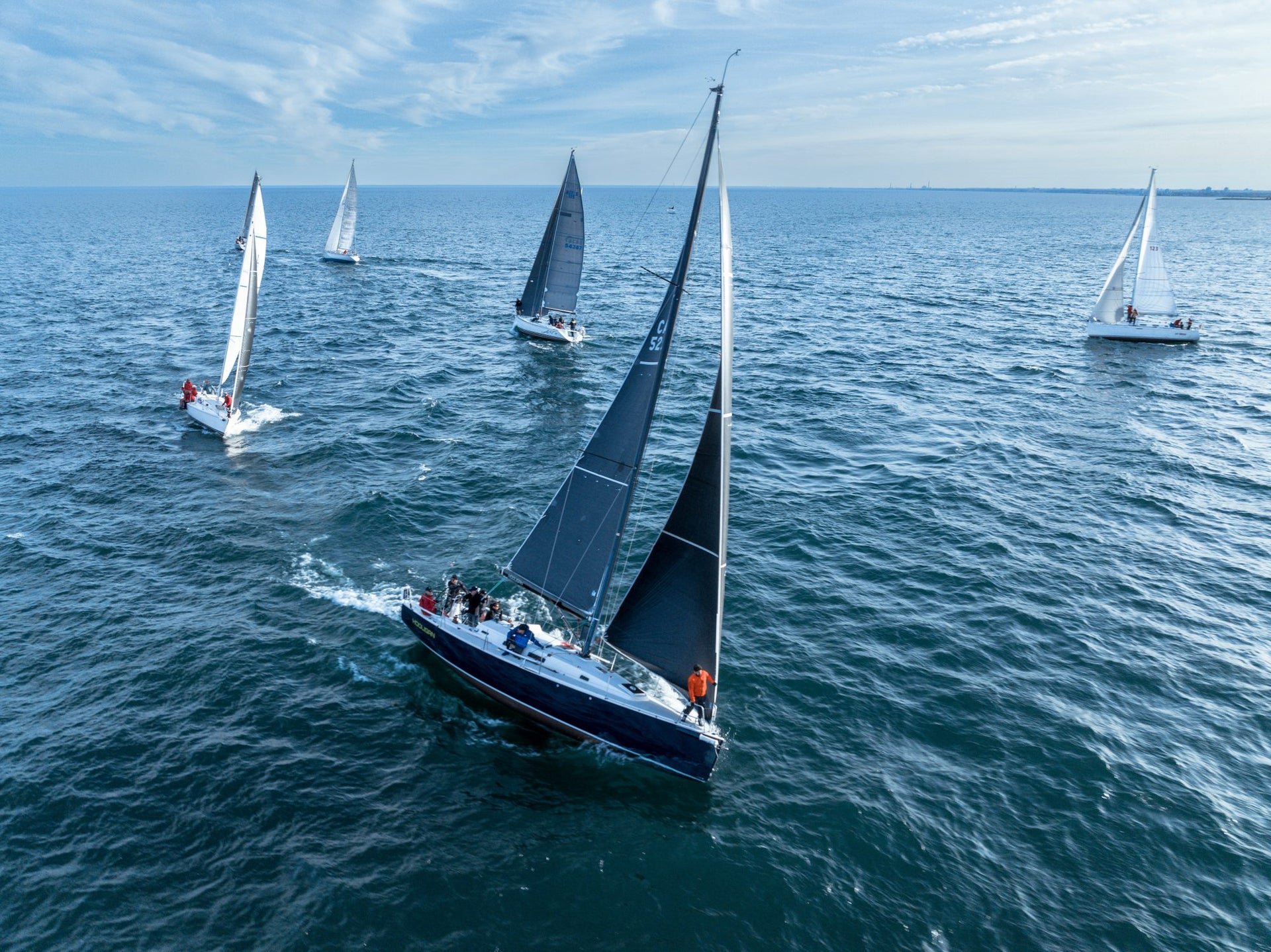
LET'S GET SAILING
LET'S GET SAILING
2022 Racing Season Kicks Off at Mimico Cruising Club
Photo Credit: Bobyk Media
Mimico Cruising Club (MCC) has been building its reputation as the 'it' racing venue for mid-week racing in Toronto over the past few seasons. With a racing fleet in the 40-boat range, offering both white sail and flying sail divisions, it has attracted competitive racers with full crews and those with more shorthanded crews, including double handed. These Wednesday night races have attracted racers from Etobicoke Yacht Club (EYC ), Lakeshore Yacht Club (LSYC) and Boulevard Club to name a few. It has been wonderful to have boats from neighboring yacht clubs join us on the start line the last few years.
Last Monday May 9th, MCC kicked off racing with a pre-race shake down sail after new race marks were splashed the last week of April. After a long and cold winter, it was time to get everyone out on the water before Wednesday night racing began on May 11th. The first start resulted in a general recall. You would never have thought this would occur after a 6-month winter hiatus, yet this is indicative on just how competitive MCC race nights are. Watching the large Flying sail division of 13 boats comprising of J122 Hooligan, 36.7's including Neptune's Car, C&C 115s, Beneteau 10R's, J112E High Tea, FARR 39ML, J105s, Archambault 35 Great Escape, Archambault 40 Arrow and Entourage from LSYC to name a few.
Photo Credit: Bobyk Media
The post-race event in the club house resembled a camaraderie and buzz that was enjoyed by all, reminiscent of the experience that we have all been waiting for after two years of pandemic restrictions. Racing is back and with all the fan fair it; we look forward to racing this season at MCC.
Photo Credit: Bobyk Media
READ MORE
READ MORE
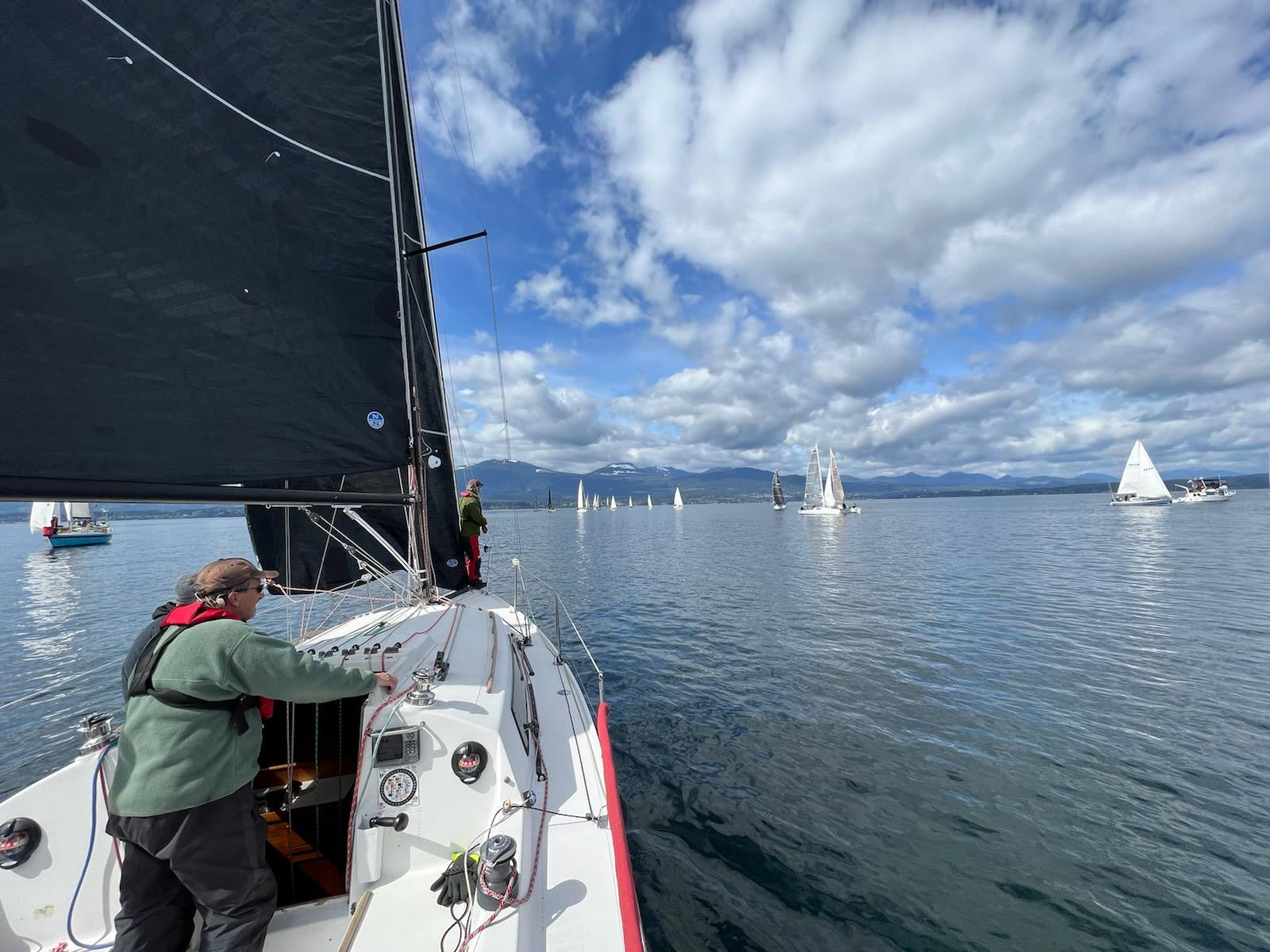
EVENT SPOTLIGHT: THETIS ISLAND RACE
EVENT SPOTLIGHT: THETIS ISLAND RACE
Focus on Fun and Good Times for Sailors
The Maple Bay Yacht Club's Thetis Island Race was one for the ages and the North Sails Vancouver loft was proud to support the 2022 edition of the race. With the PNW's spring yet to show, rain showers, cold temperatures and low winds were expected. The one positive of the race was that the current, which is always a big factor in this race, was going clockwise around the entire island during the hours we were planning to race. Most teams arrived Friday, some with motherships to stay on and others just the boat they planned to race on. Per usual, there was no shortage of good sailing banter going on around the docks well into the late hours of the night. On Saturday morning, the sun showed up and the wind forecast was looking better. After a quick skippers meeting where Penny, the race organizer, made sure everyone knew the regatta was about having fun and strongly discouraged on-water protests, all 30 boats got out to the start line. As boats headed out there was zero wind but just as the first gun went for the Division 1 boats, the wind filled down the channel. The first leg up the east side of the island was quite condensed, as it was a beat, and the faster boats were slowly catching the slower divisions. As the fleet approached the northern end of the island, it looked like we may have had one of the famous Thetis island "parking lots" but the wind filled as the fleet approached the hole.
Everyone was still sailing hard on the wind until reaching the southern end of Reid Island and the spinnakers started to go up across the fleets. The wind had decreased from earlier in the race but was still present. Teams focused on gybing all the way down to the south end of Thetis in order to stay in positive current lines. Once most of the fleet rounded the southern tip, it was then a fetch to the finishing line. Most boats tried to sail as close to Thetis as possible without being caught in the wind shadow. A few of the last boats got caught in a dying breeze which made their finish time slightly longer than originally hoped. Post racing, the Maple Bay Yacht Club and the Thetis Island Marina ran a regatta dinner buffet that rivaled the morning breakfast. After most sailors finished dinner, awards were held outside as the sun continued to shine. There were some fun awards such as a painting of a sailboat that was donated by the artist herself, PRO Judy Button. Once the awards were finished, the dock party continued and everyone had a great night chatting about the race and summer racing plans. Maple Bay Yacht Club and the Thetis Island Marina did a fabulous job hosting and running a spectacular event. With sun, wind, and positive current the entire race competitors could not have asked for better conditions. Thank you to everyone who was involved in making this race happen. I recommend it to any boat with a PHRF cert looking for a fun race and good time on Thetis Island!
See here for full results. To learn more about getting involved or how to get your inventory ready for racing, connect with our North Sails experts in Vancouver.
READ MORE
READ MORE
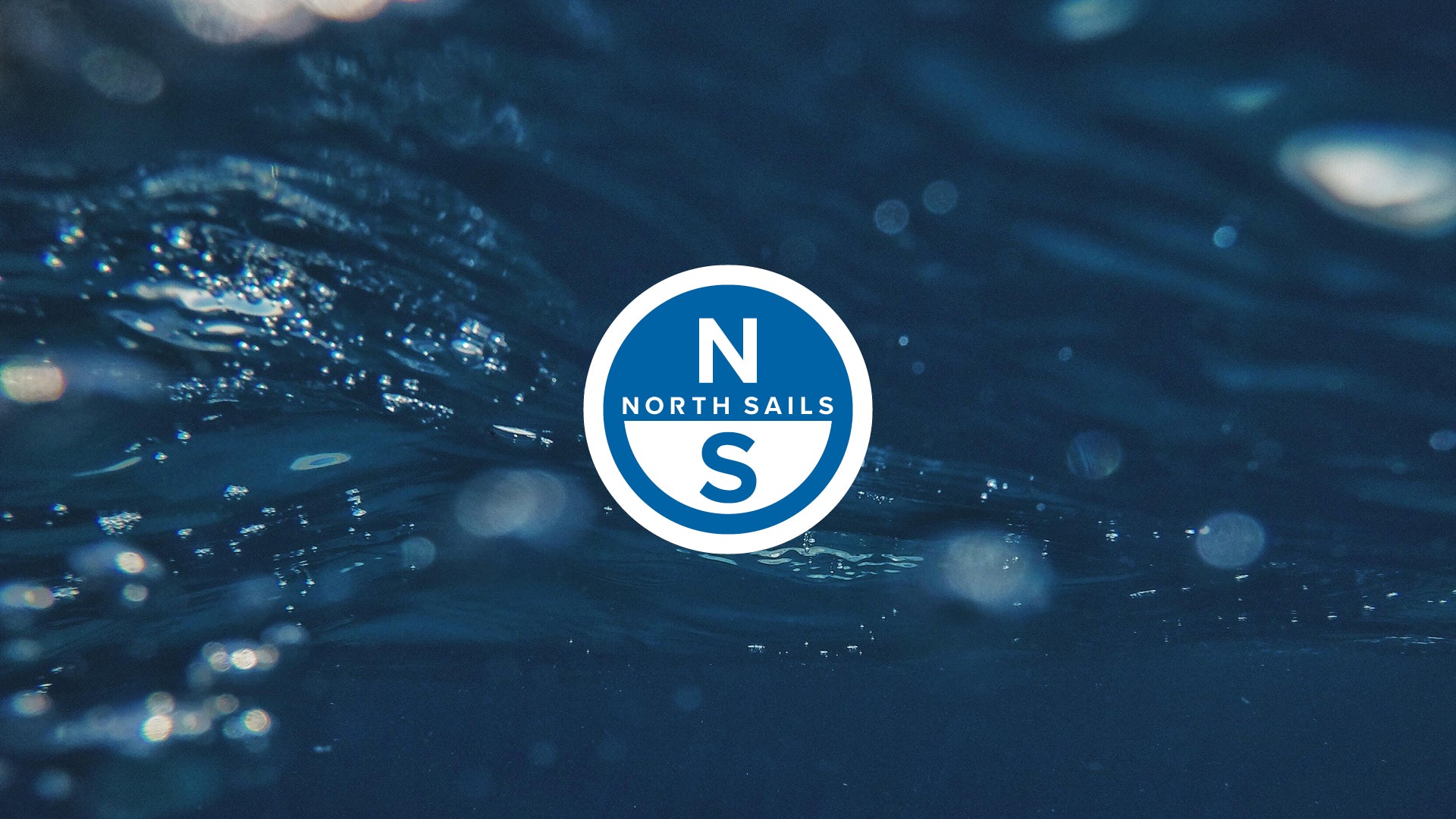
E SCOW TUNING GUIDE 2022
This tuning guide is for E Scow sailors using the rig with the chainplates at the max aft position with longer spreaders. With this rig, backstays are not required, allowing the skipper to fully concentrate on tactics and boat speed.
BEFORE STEPPING THE MAST
Clean and lubricate turnbuckles, make sure that the top and bottom threaded studs are even in the turnbuckle tube.
Position mast so that base is locked in mast step plate on deck and top end is resting in the boom rest support.
Check all pins, wires, and fittings for wear, and attach upper and lower shrouds.
Pull the forestay down along the top of the mast, pull firmly, and mark the wire with a permanent marker at the top of the mast base casting or where the tube is cut off at the bottom. You will use this mark to measure your mast rake once the mast is in the up position.
Check the spreaders to make sure they are pinned in the forward hole for an all-purpose setting. This puts the spreaders in the aft-most position.
Make sure that all halyards are pulled down and are not fouled.
Using the feeder line that comes up through the mast step, tie this onto the bottom end of the jib halyard and pull the jib halyard through the deck.
Take care not to loose the feeder line through the deck or you will have to re-run through the pulleys inside the backbone.
Using a person on the foredeck pulling on the spinnaker halyard and someone walking up the mast, step the mast and attach the forestay.
After stepping the mast, proper shroud tensions should be obtained.
If you have a new North mainsail with the slug sewn into the sail, remove the screw holding the slug slide in the mast and remove the slug slide.
This slide can be shackled on another sail for use of an older mainsail.
ALL PURPOSE SETTINGS
For base setting of the mast rake, start by measuring up from the top of the deck at the forestay along the forestay wire to the mark on the wire that corresponds to the mark you put on the wire at the bottom of the mast tube. Please refer to the mast rake chart and use the measurement which corresponds to the year your boat was built.
At this point, tighten the upper shrouds (shrouds that go to the forestay) so they measure 37 (560 lbs) on a PT-1 Loos tension gauge. Make sure the uppers are in the aft-most hole in the chainplates and also make sure you tighten each turnbuckle the same amount. If you want to really fine-tune the rig, measure down to the deck at the chainplates using the jib halyard and adjust the intermediates to center the mast athwartship.
Set the lower shrouds at 21 (240 lbs) on the PT-1 gauge and the diamonds at 23 (280 lbs). You will have to work back and forth between shrouds to achieve these base numbers.
Note: If you have a new boat or new shrouds it is important to sail a few times in heavy air to stretch out the rigging before setting permanent marks on the shrouds and the mast rake. Double check the mast rake measurement after tightening shrouds and after sailing in a good breeze.
Rake Setting
The proposed rake settings below are based on the year your E Scow was built.
1998 - 2011
2012 - 2015
2016 or newer
26"
26 1/4"
26 3/8"
Easy Tuning Charts
Note that all recommended turns are from the base settings.
M3 Mainsail / J4 Jib
TWS
6 knots
BASE - 8 knots (2-3 on rail)
10 knots
12 knots
15 knots
18+ knots
Uppers
-
37
+1
+1.5
+2
+3
Lowers
-1
21
+1
+1
+2
+2
Diamonds
-1
23
-
-
+2
+3
Boards
2 holes FWD
1 hole FWD
1 hole FWD
AP
1 hole AFT
2 holes AFT
Outhaul
Smooth
Smooth
Smooth
Smooth
Max
Max
Vang
Loose
Slack Out
Firm
Firm
Max
Max
Cunningham
Loose
Loose
Loose
12" Wrinkles
Smooth
Smooth
Main Traveler
Up 2-6"
Center to up 2"
1/4 to 1/2 to Post
1/2 to Post
3/4 Down or Post
Post
Jib Traveler
Max Up
Max Up
Max Up
Down 2"
Down 3"
Down 4"
Clewboard
2nd Hole From Top
2nd Hole from Top
2nd Hole From Top
3rd Hole From Top
Bottom Hole
Bottom Hole
Tack Height
4"
4"
3.5"
3"
2.5"
2"
MAINSAIL TOP BATTEN - 6-12 knots go to 10180c, >12 knots increase to 10230c
2021 Easy Tuning Charts
Easy Tuning Charts (pre 2022)
Jib Tack Height
Jib tack height at base measured from the deck to the bearing point of the jib tack control line. Mark your control line to ensure you can quickly find your base setting. Adjusting the jib tack in in small increments during a race is a quick way to power-up or de-power the jib and has a more meaningful effect on jib shape than a 1 hole adjustment on the clewboard. See below.
Jib Spreader Mark
18.5"-19" measured from center rivet on front of spreader bracket, alongside the front of spreader.
In most conditions, the jib leech should be at or near this mark. Periodically sight through the mainsail window or from behind the mainsail to check your sheeting is accurate.
RACING YOUR ASYMMETRICAL
We wanted to provide you with some helpful tips so that your learning curve moves upward. Please follow some of these initial tips so that you reach maximum performance right out of the gate. Teamwork is a major factor in this sport. So, work with your team and see what techniques may work for you specifically. The tips provided are a baseline to work from. When setting up your Asymmetrical sheets – be sure to rig them so that you are doing “inside jibes”. The clew passes between the luff of the kite and the forestay. A quick way to ensure this is to lead the tack line over the starboard spinnaker sheet when you rig your sheets. Tack over sheet.
IMPORTANT MAST TUNING AND ASYMMETRICAL TECHNIQUES TO LEARN
As with any masthead spinnaker configuration, the rig is more loaded and will require more attention to rig tuning and some changes in sailing technique.
DIAMOND STAYS
The diamond stays on the mast help to support the mast head spinnaker configuration and the tension on the diamonds is important to ensure that the mast stays pre-bent and in column. It is important to follow the tuning guide recommendations and not stray too far from these numbers. Diamonds that are too loose when it is windy will not support the masthead kite properly and cause the mast to invert. Note: Diamond stays will stretch when they are new and you must check them before and after heavy air races, especially when the rig is new. Diamond stays will also measure differently with different tension on the Intermediates and the lowers.
SPREADERS
Spreaders should always be in the maximum aft setting on the mast to ensure maximum spreader sweep. Note: This is the fast setting for all wind conditions, and this is true for the aft chainplate boats as well as the forward chainplate boats. The upper spreaders are set from the factory with approximately a 6-1/4” sweep when measuring from the back of the mast to a straight line from tip to tip where the wire passes through the tip. Sweeping the spreaders forward will make the top of the mainsail fuller, sweeping them aft will flatten the top of the mainsail.
SIDESTAY TENSION
With the forward chainplate rigs it is important to start to put some tension on the uppers once the breeze is over 10 knots. 400 lbs. On the uppers is necessary to insure that the mast stays prebent when sailing downwind. We recommend sailing with the uppers closer to 600 lbs once the breeze is over 15knots. This is the same for the aft chainplate rigs. With the aft chainplate rigs we rarely go below 600 lbs on the upper sidestay tension.
MAINSHEET TECHNIQUES
It is important with the Asymmetrical to sail at slightly hotter or higher angles than with the symmetrical kites to achieve the greatest performance. This, along with the higher speeds you are achieving will bring the apparent wind angle forward and require the mainsail to be trimmed at a tighter angle. Also, more vang can be carried since you are sailing at hotter angles with more load on the mainsail. Because you are sailing at hotter angles and the A sails are so easy to jibe you should not ease the mainsail out too far on the jibes. The maximum the sheet should ever be eased is about 10’ measuring from the aft corner of the boat to the boom. This technique along with keeping some vang on will help maintain a positive bend in the mast and regardless of backstay tension will help ensure that the mast does not do an inverted bend.
RECIPE FOR MAST DAMAGE
Crew weight should never exceed 675lbs. on an E Scow. The target weight for 4 people sailing in heavy wind is 630-650lbs. Sailing heavier will dramatically increase loads on the boat and rigging and amplifies mistakes made with tuning and mainsail handling. Jibing in heavy air with the vang loose and the mainsail eased out too far can be a recipe for mast problems. This is the single most important thing you need to concentrate on when sailing the A sail configuration. When you go into a jibe do not slow the boat down, go from high-speed mode right into the jibe. I equate this to a high-speed windsurfing jibe. If the diamonds are too loose and the uppers are too loose this will also compound the situation and cause the mast to invert and could cause failure. As with any powered-up masthead configuration you have to learn the techniques to ensure that you are safely performing the maneuvers. Once you understand the mechanics of the rig you will realize how much fun the A sails are and how much easier they are to sail. With the proper mechanics of boat handling and rig tuning, the rigs are very durable and will stand up to a lot of wind. It is very important to stay within the recommended rig settings. Do not overload the shroud tension or the crew weight as this places too much compression load on the mast and boat and can cause failures.
Downwind Asymmetrical Techniques
SETTING THE ASYMMETRICAL
Pull the bow sprit all the way out – Important – You cannot pull the bowsprit out until you break the plane of the windward mark. Only pull bow sprit out prior to hoisting without kite launcher and one pull tack line system.
Mid crew opens the bag and prepares for the kite to exit the cockpit. Only if you don’t have a kite launcher.
Make sure to keep the boat flat when in the hoisting process as this helps keep the spinnaker out of the water. Not as important with kite launcher.
Mid Crew pulls the spinnaker halyard all the way up - Tip – Make a permanent mark on the halyard in the “full up” position so you pull to that point every time.
With kite launcher on hoist countdown, jib crew pulls windward jib sheet in through ratchet and cleats to windward to clear kite launcher hole.
After the halyard is ¼ of the way hoisted, Jib Crew now pulls the tack of the asymmetrical all the way out and then immediately uncleats the jib sheet and properly trims jib.
Helmsperson Tip – on the set it is very important to help your crew out by bearing away a bit on the hoist. This allows the kite to go all the way up with ease. It is important to also make sure the mainsail is not let out too far. The halyard and head of the kite can get hung up behind the spreader delaying the hoist. Keep an eye on these things.
Once the halyard is up your mid crew should communicate “made”. The helmsperson should freshen (head up) right away so that the kite blows away from the rig and then fills.
Limit your mistakes on the set – do not sail too high on the set – this makes it harder to pull the halyard up and the kite will fill early making it harder on the crew. With practice, you can push this limit higher.
Limit your mistakes on the set.
Practice your timing on all of these things and know when you can push the envelope for the ultimate set!
THINGS TO THINK ABOUT AND PRACTICE
When sailing downwind with the asymmetrical we sail with our boards all the way down. In varying conditions, you may want to experiment with pulling your boards up some. This could be especially good in moderate winds and wavy conditions. Practice this technique and find out what is fast for your team. When in doubt though – keep the boards all the way down.
The angle of heel will not vary from the symmetrical kite setup.
It is very important to keep your lines clean and drop coiled. You need to drop coil your spinnaker sheets after every jibe so that the sheet runs free through this maneuver.
Compass – it is very important to watch your compass angles downwind while staying in the freshest breeze on the course. These boats will be going very fast. Angles and wind really make the difference. Watch your compass as much if not more than you do going upwind.
Downwind Sailing Angles – this will vary some. Many think that you have to sail hot and fast in all conditions with this setup. This is not the case. Here is a brief guideline to go by.
WINDS 0 - 8 KNOTS
A higher angle is required so that the boat builds apparent wind. With this speed, you can begin to sail low. As soon as the boat slows even slightly or the boat begins to flatten in angle of heel – you need to head right back up and fire up the speed again. This requires constant attention and focus. One key factor in this condition is mainsheet trim. As your apparent wind moves forward you need to keep your mainsheet trimmed a lot more. Make sure your mainsail is not luffing. You will be amazed as to how the boat reacts to a tighter mainsheet and how much the boat likes to have the mainsheet worked downwind. Practice this. In this wind range, you want to practice float jibes where you bear away slowly and ease the kite out and start pulling it around so it floats around the bow.
WINDS 9-12 KNOT
You can experiment with sailing a lower or deeper angle in these conditions. As the breeze hits and the boat heels, begin to drive the boat down and sail deeper. Work your mainsheet. As you sail deeper the main will need to be eased slightly, but not nearly as far as would for a symmetrical sail.
WINDS 13 - 15 KNOT
This is where it is really fun! Rock and Roll time! Crews should all be on the high side in their hiking straps. The mainsail will need to be trimmed in – almost all the way at times – as your apparent wind is way forward. The Jib Crew will need to work the jib and also the vang. It will feel like you are sailing at a higher angle due to the speed build-up. You really need to get the boat up and rolling – do not sail low or keep people in the boat – put them on the rail and go for a fast ride! The key is the mainsheet, keep the main trimmed. Do not ease the main much through your jibe either! Keep the sail in! In this wind condition you want to perform Mexican jibes, the skipper turns right into the jibe, you trim the sheet tight, strap the foot of the kite, let it back slightly onto the rig on the new windward side of the boat and as the main is coming across you blow the sheet off and trim the new sheet on quickly.
ASYMMETRICAL TAKEDOWNS
The easiest takedowns are the Windward takedown or the Mexican take-down. The leeward takedown is your third option.
WINDWARD TAKEDOWN
Head the boat virtually dead downwind.
Middle crew begins to pull the windward spin sheet around and then the Jib crew releases the tack line shortly after that. You can release the bow sprit line shortly after. With the kite launcher, mid crew counts down 3-2-1 as they start to pull on the kite retrieval line, jib crew uncleats halyard on 0 and then tack line, tailing as they drop to keep the kite out of trouble. All sheets have to run smoothly to keep the kite coming in freely.
Middle Crew - Pull the windward sheet aggressively through the ratchet - all the way back so that the clew reaches the ratchet block. The sail will have inverted. Only if you have no kite launcher.
Middle Crew - Call for the halyard once you have the sail in hand. See #2 for kite launcher.
Helmsperson - Before the halyard begins to drop be sure to steer up slightly so that the sail blows onto the deck of the boat. If you are dead downwind or sailing by the lee the kite will blow out away from the boat and go into the water. This is not good. It is very important that the helmsperson helps out the crew by steering up.
The Middle Crew stuffs the sail into the bag and prepares for the rounding. Only if you don’t have a kite launcher.
MEXICAN TAKEDOWN
This takedown is effective when approaching the leeward mark on starboard tack and you need to jibe to go around the mark. As you reach a 3 boat length circle from the leeward mark you prepare to go into action. The key is that you need to be at about 150 degrees to true wind as you complete your jibe and you sail on port tack to the mark ( as you jibe you need to have the ability to head up on port jibe slightly so that the asymmetrical stays on the deck of the boat. If you come out of the jibe dead downwind the spinnaker will fall right into the water – again, the helmsperson needs to do their job to make the takedown easy and effective). So, your relation to the leeward mark is critical – you want to exit the jibe and begin to reach toward the leeward mark.
You enter the three boat length circle on starboard tack.
Helmsperson calls for a Mexican.
Middle Crew - Be sure to drop the windward board before entering the jibe.
Begin the jibe – the Middle Crew needs to trim the sheet hard so that the clew goes to the ratchet on the port side of the boat. This brings the clew and the foot of the sail to within reach for the takedown.
The helmsperson turns the boat and enters the jibe. As the boom goes across he yells for the halyard release. The Jib Crew needs to release the halyard and the mid crew will already be taking in the retrieval line.
The helmsperson needs to head up so that the sail gets “pressed” into the rig on the port side. The key is to head up so that the sail falls onto the deck and into the rig keeping the sail away from the water.
The crew needs to be on the high side – on this port jibe as you approach the leeward mark – very important if it is windy as the boat will accelerate once you begin to reach to the mark.
The tack line and bowsprit line are the last two items to be released. The Middle Crew needs to stuff the sail into the bag and hike hard as the boat rounds the mark. Refer to #2 on windward takedown for jib crew steps.
Middle or jib crew pulls the board up on the port side as soon as possible or before the leeward mark.
LEEWARD TAKEDOWN
The key here is that the helmsman heads down for an easy takedown.
Release the tack line and trim the spinnaker sheet in.
Release the halyard slowly or with friction for the first 8 feet so that the halyard does not blow out and get hooked on the leech of the mainsail.
Middle Crew stuffs the kite into the bag.
Final release is the bowsprit line which can occur shortly after the release of the tack line.
Takedown with kite launcher:
Helm bears away, mid crew starts retrieval in counting down, 3-2-1 halyard is released, then tack. Flatten boat as much as possible to all crew to windward. Speed on the retrieval line is the name of the game.
SET UP
It is important to follow the North Sails Tuning Guide – I-1 Rig. Follow the amount of rig tension suggested for the varying conditions.
SPECIAL CONSIDERATIONS
The angle of heel is very important on an E Scow. Upwind in up to 10 knots, go for a maximum heel, but never let the water get up on the leeward deck. In more wind, sail with the bilge board vertical in the water. Don’t let the boat heel too much when sailing in a chop: it might feel good, but it is not fast. Just make sure that the bilge board is vertical, or that the boat is just a little flatter. When sailing in a lot of chop, be sure to have a very full jib, power up the main by keeping the rake forward, Cunningham off all the way and the outhaul pulled just until the vertical wrinkles disappear. An E Scow travels at very high speeds for a sailboat, and is very maneuverable even though the rudders are only 10” X 16”. Still, it is important for the crew to be in tune with the skipper to help steer the boat. When a big puff hits, the bow has a tendency to blow to leeward, so the jib crew must be prepared to ease the sheet to prevent this. The most important thing to do when tacking an E Scow is to lower the new board at the right time. As the boat is turning through the tack, wait until the bow is just past head to wind to lower the board: if you do this too soon, it just creates extra drag and slows the boat down. Don’t worry about raising the windward board until the boat is up to speed on the new tack. We like to ease the main slightly and then trim it in to heel the boat as we come up into the wind, and then everybody rolls the boat together. In light to medium winds, keep the jib trimmed in until the boat is head to wind and let the windbreak it across. When it starts to get windy it isn’t necessary to roll the boat, but ease the jib sooner so the bow can come up into the wind easier.
TACTICAL CONSIDERATIONS
As far as tactical considerations go, at the start just remember that E Scows accelerate quickly, so it’s important to trim in before the boats around you or you might get rolled right away. If you have the room to leeward, simply put the boat on a tight reach with 15 seconds to go, get it up to speed by the time you hit the line, and make sure you can sail over the boat to leeward. E Scows don’t seem to create much of a wind shadow, so don’t be afraid to sail in someone’s bad air if you think it’s the right way to go, since the gains in a windshift can outweigh the loss of boat speed. These boats sail so fast that you are never out of the race. If you find yourself behind, several good wind shifts can move you right through the fleet. The important thing to remember is to keep the pedal down and never give up. All these generalizations are norms and averages that have proven fast over many years. Some experimentation on your part may be necessary to fine-tune your particular rig and sailing style. Good luck!
READ MORE
READ MORE

E SCOW TUNING GUIDE
This tuning guide is for E Scow sailors using the rig with the chainplates at the max aft position with longer spreaders. With this rig, backstays are not required, allowing the skipper to fully concentrate on tactics and boat speed.
BEFORE STEPPING THE MAST
Clean and lubricate turnbuckles, make sure that the top and bottom threaded studs are even in the turnbuckle tube.
Position mast so that base is locked in mast step plate on deck and top end is resting in the boom rest support.
Check all pins, wires, and fittings for wear, and attach upper and lower shrouds.
Pull the forestay down along the top of the mast, pull firmly, and mark the wire with a permanent marker at the top of the mast base casting or where the tube is cut off at the bottom. You will use this mark to measure your mast rake once the mast is in the up position.
Check the spreaders to make sure they are pinned in the forward hole for an all-purpose setting. This puts the spreaders in the aft-most position.
Make sure that all halyards are pulled down and are not fouled.
Using the feeder line that comes up through the mast step, tie this onto the bottom end of the jib halyard and pull the jib halyard through the deck. Take care not to loose the feeder line through the deck or you will have to re-run through the pulleys inside the backbone.
Using a person on the foredeck pulling on the spinnaker halyard and someone walking up the mast, step the mast and attach the forestay.
After stepping the mast, proper shroud tensions should be obtained. If you have a new North mainsail with the slug sewn into the sail, remove the screw holding the slug slide in the mast and remove the slug slide. This slide can be shackled on another sail for use of an older mainsail.
ALL PURPOSE SETTINGS
For base setting of the mast rake, start by measuring up from the top of the deck at the forestay along the forestay wire to the mark on the wire that corresponds to the mark you put on the wire at the bottom of the mast tube. Please refer to the mast rake chart and use the measurement which corresponds to the year your boat was built.
At this point, tighten the upper shrouds (shrouds that go to the forestay) so they measure 37 (560 lbs) on a PT-1 Loos tension gauge. Make sure the uppers are in the aft-most hole in the chainplates and also make sure you tighten each turnbuckle the same amount. If you want to really fine-tune the rig, measure down to the deck at the chainplates using the jib halyard and adjust the intermediates to center the mast athwartship.
Set the lower shrouds at 21 (240 lbs) on the PT-1 gauge and the diamonds at 23 (280 lbs). You will have to work back and forth between shrouds to achieve these base numbers.
Note: If you have a new boat or new shrouds it is important to sail a few times in heavy air to stretch out the rigging before setting permanent marks on the shrouds and the mast rake. Double check the mast rake measurement after tightening shrouds and after sailing in a good breeze.
Rake Setting
The proposed rake settings below are based on the year your E Scow was built.
1998 – 2011
2012 – 2015
2016 or newer
26″
26 1/4″
26 3/8″
Easy Tuning Charts
Note that all recommended turns are from the base settings.
M3 Mainsail / J4 Jib
TWS
6 knots
BASE – 8 knots(2-3 on rail)
10 knots
12 knots
15 knots
18+ knots
Uppers
–
37
+1
+1.5
+2
+3
Lowers
-1
21
+1
+1
+2
+2
Diamonds
-1
23
–
–
+2
+3
Boards
2 holes FWD
1 hole FWD
1 hole FWD
AP
1 hole AFT
2 holes AFT
Outhaul
Smooth
Smooth
Smooth
Smooth
Max
Max
Vang
Loose
Slack Out
Firm
Firm
Max
Max
Cunningham
Loose
Loose
Loose
12″ Wrinkles
Smooth
Smooth
Main Traveler
Up 2-6″
Center to up 2″
1/4 to 1/2 to Post
1/2 to Post
3/4 Down or Post
Post
Jib Traveler
Max Up
Max Up
Max Up
Down 2″
Down 3″
Down 4″
Clewboard
2nd Hole From Top
2nd Hole from Top
2nd Hole From Top
3rd Hole From Top
Bottom Hole
Bottom Hole
Tack Height
4″
4″
3.5″
3″
2.5″
2″
MAINSAIL TOP BATTEN – 6-12 knots go to 10180c, >12 knots increase to 10230c
2021 Easy Tuning Charts
Easy Tuning Charts (pre 2022)
Jib Tack Height
Jib tack height at base measured from the deck to the bearing point of the jib tack control line. Mark your control line to ensure you can quickly find your base setting. Adjusting the jib tack in in small increments during a race is a quick way to power-up or de-power the jib and has a more meaningful effect on jib shape than a 1 hole adjustment on the clewboard. See below.
Jib Spreader Mark
18.5″-19″ measured from center rivet on front of spreader bracket, alongside the front of spreader.
In most conditions, the jib leech should be at or near this mark. Periodically sight through the mainsail window or from behind the mainsail to check your sheeting is accurate.
RACING YOUR ASYMMETRICAL
We wanted to provide you with some helpful tips so that your learning curve moves upward. Please follow some of these initial tips so that you reach maximum performance right out of the gate. Teamwork is a major factor in this sport. So, work with your team and see what techniques may work for you specifically. The tips provided are a baseline to work from.
When setting up your Asymmetrical sheets – be sure to rig them so that you are doing “inside jibes”. The clew passes between the luff of the kite and the forestay. A quick way to ensure this is to lead the tack line over the starboard spinnaker sheet when you rig your sheets. Tack over sheet.
IMPORTANT MAST TUNING AND ASYMMETRICAL TECHNIQUES TO LEARN
As with any masthead spinnaker configuration, the rig is more loaded and will require more attention to rig tuning and some changes in sailing technique.
DIAMOND STAYS
The diamond stays on the mast help to support the mast head spinnaker configuration and the tension on the diamonds is important to ensure that the mast stays pre-bent and in column. It is important to follow the tuning guide recommendations and not stray too far from these numbers. Diamonds that are too loose when it is windy will not support the masthead kite properly and cause the mast to invert.
Note: Diamond stays will stretch when they are new and you must check them before and after heavy air races, especially when the rig is new. Diamond stays will also measure differently with different tension on the Intermediates and the lowers.
SPREADERS
Spreaders should always be in the maximum aft setting on the mast to ensure maximum spreader sweep. Note: This is the fast setting for all wind conditions, and this is true for the aft chainplate boats as well as the forward chainplate boats.
The upper spreaders are set from the factory with approximately a 6-1/4” sweep when measuring from the back of the mast to a straight line from tip to tip where the wire passes through the tip. Sweeping the spreaders forward will make the top of the mainsail fuller, sweeping them aft will flatten the top of the mainsail.
SIDESTAY TENSION
With the forward chainplate rigs it is important to start to put some tension on the uppers once the breeze is over 10 knots. 400 lbs. On the uppers is necessary to insure that the mast stays prebent when sailing downwind. We recommend sailing with the uppers closer to 600 lbs once the breeze is over 15knots. This is the same for the aft chainplate rigs. With the aft chainplate rigs we rarely go below 600 lbs on the upper sidestay tension.
MAINSHEET TECHNIQUES
It is important with the Asymmetrical to sail at slightly hotter or higher angles than with the symmetrical kites to achieve the greatest performance. This, along with the higher speeds you are achieving will bring the apparent wind angle forward and require the mainsail to be trimmed at a tighter angle. Also, more vang can be carried since you are sailing at hotter angles with more load on the mainsail. Because you are sailing at hotter angles and the A sails are so easy to jibe you should not ease the mainsail out too far on the jibes. The maximum the sheet should ever be eased is about 10’ measuring from the aft corner of the boat to the boom. This technique along with keeping some vang on will help maintain a positive bend in the mast and regardless of backstay tension will help ensure that the mast does not do an inverted bend.
RECIPE FOR MAST DAMAGE
Crew weight should never exceed 675lbs. on an E Scow. The target weight for 4 people sailing in heavy wind is 630-650lbs. Sailing heavier will dramatically increase loads on the boat and rigging and amplifies mistakes made with tuning and mainsail handling.
Jibing in heavy air with the vang loose and the mainsail eased out too far can be a recipe for mast problems. This is the single most important thing you need to concentrate on when sailing the A sail configuration. When you go into a jibe do not slow the boat down, go from high-speed mode right into the jibe. I equate this to a high-speed windsurfing jibe. If the diamonds are too loose and the uppers are too loose this will also compound the situation and cause the mast to invert and could cause failure.
As with any powered-up masthead configuration you have to learn the techniques to ensure that you are safely performing the maneuvers. Once you understand the mechanics of the rig you will realize how much fun the A sails are and how much easier they are to sail. With the proper mechanics of boat handling and rig tuning, the rigs are very durable and will stand up to a lot of wind. It is very important to stay within the recommended rig settings. Do not overload the shroud tension or the crew weight as this places too much compression load on the mast and boat and can cause failures.
Downwind Asymmetrical Techniques
SETTING THE ASYMMETRICAL
Pull the bow sprit all the way out – Important – You cannot pull the bowsprit out until you break the plane of the windward mark. Only pull bow sprit out prior to hoisting without kite launcher and one pull tack line system.
Mid crew opens the bag and prepares for the kite to exit the cockpit. Only if you don’t have a kite launcher.
Make sure to keep the boat flat when in the hoisting process as this helps keep the spinnaker out of the water. Not as important with kite launcher.
Mid Crew pulls the spinnaker halyard all the way up – Tip – Make a permanent mark on the halyard in the “full up” position so you pull to that point every time.
With kite launcher on hoist countdown, jib crew pulls windward jib sheet in through ratchet and cleats to windward to clear kite launcher hole.
After the halyard is ¼ of the way hoisted, Jib Crew now pulls the tack of the asymmetrical all the way out and then immediately uncleats the jib sheet and properly trims jib.
Helmsperson Tip – on the set it is very important to help your crew out by bearing away a bit on the hoist. This allows the kite to go all the way up with ease. It is important to also make sure the mainsail is not let out too far. The halyard and head of the kite can get hung up behind the spreader delaying the hoist. Keep an eye on these things.
Once the halyard is up your mid crew should communicate “made”. The helmsperson should freshen (head up) right away so that the kite blows away from the rig and then fills.
Limit your mistakes on the set – do not sail too high on the set – this makes it harder to pull the halyard up and the kite will fill early making it harder on the crew. With practice, you can push this limit higher.
Limit your mistakes on the set.
Practice your timing on all of these things and know when you can push the envelope for the ultimate set!
THINGS TO THINK ABOUT AND PRACTICE
When sailing downwind with the asymmetrical we sail with our boards all the way down. In varying conditions, you may want to experiment with pulling your boards up some. This could be especially good in moderate winds and wavy conditions. Practice this technique and find out what is fast for your team. When in doubt though – keep the boards all the way down.
The angle of heel will not vary from the symmetrical kite setup.
It is very important to keep your lines clean and drop coiled. You need to drop coil your spinnaker sheets after every jibe so that the sheet runs free through this maneuver.
Compass – it is very important to watch your compass angles downwind while staying in the freshest breeze on the course. These boats will be going very fast. Angles and wind really make the difference. Watch your compass as much if not more than you do going upwind.
Downwind Sailing Angles – this will vary some. Many think that you have to sail hot and fast in all conditions with this setup. This is not the case. Here is a brief guideline to go by.
WINDS 0 – 8 KNOTS
A higher angle is required so that the boat builds apparent wind. With this speed, you can begin to sail low. As soon as the boat slows even slightly or the boat begins to flatten in angle of heel – you need to head right back up and fire up the speed again. This requires constant attention and focus. One key factor in this condition is mainsheet trim. As your apparent wind moves forward you need to keep your mainsheet trimmed a lot more. Make sure your mainsail is not luffing. You will be amazed as to how the boat reacts to a tighter mainsheet and how much the boat likes to have the mainsheet worked downwind. Practice this. In this wind range, you want to practice float jibes where you bear away slowly and ease the kite out and start pulling it around so it floats around the bow.
WINDS 9-12 KNOT
You can experiment with sailing a lower or deeper angle in these conditions. As the breeze hits and the boat heels, begin to drive the boat down and sail deeper. Work your mainsheet. As you sail deeper the main will need to be eased slightly, but not nearly as far as would for a symmetrical sail.
WINDS 13 – 15 KNOT
This is where it is really fun! Rock and Roll time! Crews should all be on the high side in their hiking straps. The mainsail will need to be trimmed in – almost all the way at times – as your apparent wind is way forward. The Jib Crew will need to work the jib and also the vang. It will feel like you are sailing at a higher angle due to the speed build-up. You really need to get the boat up and rolling – do not sail low or keep people in the boat – put them on the rail and go for a fast ride! The key is the mainsheet, keep the main trimmed. Do not ease the main much through your jibe either! Keep the sail in! In this wind condition you want to perform Mexican jibes, the skipper turns right into the jibe, you trim the sheet tight, strap the foot of the kite, let it back slightly onto the rig on the new windward side of the boat and as the main is coming across you blow the sheet off and trim the new sheet on quickly.
ASYMMETRICAL TAKEDOWNS
The easiest takedowns are the Windward takedown or the Mexican take-down. The leeward takedown is your third option.
WINDWARD TAKEDOWN
Head the boat virtually dead downwind.
Middle crew begins to pull the windward spin sheet around and then the Jib crew releases the tack line shortly after that. You can release the bow sprit line shortly after. With the kite launcher, mid crew counts down 3-2-1 as they start to pull on the kite retrieval line, jib crew uncleats halyard on 0 and then tack line, tailing as they drop to keep the kite out of trouble. All sheets have to run smoothly to keep the kite coming in freely.
Middle Crew – Pull the windward sheet aggressively through the ratchet – all the way back so that the clew reaches the ratchet block. The sail will have inverted. Only if you have no kite launcher.
Middle Crew – Call for the halyard once you have the sail in hand. See #2 for kite launcher.
Helmsperson – Before the halyard begins to drop be sure to steer up slightly so that the sail blows onto the deck of the boat. If you are dead downwind or sailing by the lee the kite will blow out away from the boat and go into the water. This is not good. It is very important that the helmsperson helps out the crew by steering up.
The Middle Crew stuffs the sail into the bag and prepares for the rounding. Only if you don’t have a kite launcher.
MEXICAN TAKEDOWN
This takedown is effective when approaching the leeward mark on starboard tack and you need to jibe to go around the mark. As you reach a 3 boat length circle from the leeward mark you prepare to go into action. The key is that you need to be at about 150 degrees to true wind as you complete your jibe and you sail on port tack to the mark ( as you jibe you need to have the ability to head up on port jibe slightly so that the asymmetrical stays on the deck of the boat. If you come out of the jibe dead downwind the spinnaker will fall right into the water – again, the helmsperson needs to do their job to make the takedown easy and effective). So, your relation to the leeward mark is critical – you want to exit the jibe and begin to reach toward the leeward mark.
You enter the three boat length circle on starboard tack.
Helmsperson calls for a Mexican.
Middle Crew – Be sure to drop the windward board before entering the jibe.
Begin the jibe – the Middle Crew needs to trim the sheet hard so that the clew goes to the ratchet on the port side of the boat. This brings the clew and the foot of the sail to within reach for the takedown.
The helmsperson turns the boat and enters the jibe. As the boom goes across he yells for the halyard release. The Jib Crew needs to release the halyard and the mid crew will already be taking in the retrieval line.
The helmsperson needs to head up so that the sail gets “pressed” into the rig on the port side. The key is to head up so that the sail falls onto the deck and into the rig keeping the sail away from the water.
The crew needs to be on the high side – on this port jibe as you approach the leeward mark – very important if it is windy as the boat will accelerate once you begin to reach to the mark.
The tack line and bowsprit line are the last two items to be released. The Middle Crew needs to stuff the sail into the bag and hike hard as the boat rounds the mark. Refer to #2 on windward takedown for jib crew steps.
Middle or jib crew pulls the board up on the port side as soon as possible or before the leeward mark.
LEEWARD TAKEDOWN
The key here is that the helmsman heads down for an easy takedown.
Release the tack line and trim the spinnaker sheet in.
Release the halyard slowly or with friction for the first 8 feet so that the halyard does not blow out and get hooked on the leech of the mainsail.
Middle Crew stuffs the kite into the bag.
Final release is the bowsprit line which can occur shortly after the release of the tack line.
Takedown with kite launcher: Helm bears away, mid crew starts retrieval in counting down, 3-2-1 halyard is released, then tack. Flatten boat as much as possible to all crew to windward. Speed on the retrieval line is the name of the game.
SET UP
It is important to follow the North Sails Tuning Guide – I-1 Rig. Follow the amount of rig tension suggested for the varying conditions.
SPECIAL CONSIDERATIONS
The angle of heel is very important on an E Scow. Upwind in up to 10 knots, go for a maximum heel, but never let the water get up on the leeward deck. In more wind, sail with the bilge board vertical in the water. Don’t let the boat heel too much when sailing in a chop: it might feel good, but it is not fast. Just make sure that the bilge board is vertical, or that the boat is just a little flatter. When sailing in a lot of chop, be sure to have a very full jib, power up the main by keeping the rake forward, Cunningham off all the way and the outhaul pulled just until the vertical wrinkles disappear.
An E Scow travels at very high speeds for a sailboat, and is very maneuverable even though the rudders are only 10” X 16”. Still, it is important for the crew to be in tune with the skipper to help steer the boat. When a big puff hits, the bow has a tendency to blow to leeward, so the jib crew must be prepared to ease the sheet to prevent this. The most important thing to do when tacking an E Scow is to lower the new board at the right time. As the boat is turning through the tack, wait until the bow is just past head to wind to lower the board: if you do this too soon, it just creates extra drag and slows the boat down. Don’t worry about raising the windward board until the boat is up to speed on the new tack. We like to ease the main slightly and then trim it in to heel the boat as we come up into the wind, and then everybody rolls the boat together. In light to medium winds, keep the jib trimmed in until the boat is head to wind and let the windbreak it across. When it starts to get windy it isn’t necessary to roll the boat, but ease the jib sooner so the bow can come up into the wind easier.
TACTICAL CONSIDERATIONS
As far as tactical considerations go, at the start just remember that E Scows accelerate quickly, so it’s important to trim in before the boats around you or you might get rolled right away. If you have the room to leeward, simply put the boat on a tight reach with 15 seconds to go, get it up to speed by the time you hit the line, and make sure you can sail over the boat to leeward. E Scows don’t seem to create much of a wind shadow, so don’t be afraid to sail in someone’s bad air if you think it’s the right way to go, since the gains in a windshift can outweigh the loss of boat speed. These boats sail so fast that you are never out of the race. If you find yourself behind, several good wind shifts can move you right through the fleet. The important thing to remember is to keep the pedal down and never give up.
All these generalizations are norms and averages that have proven fast over many years. Some experimentation on your part may be necessary to fine-tune your particular rig and sailing style. Good luck!
READ MORE
READ MORE
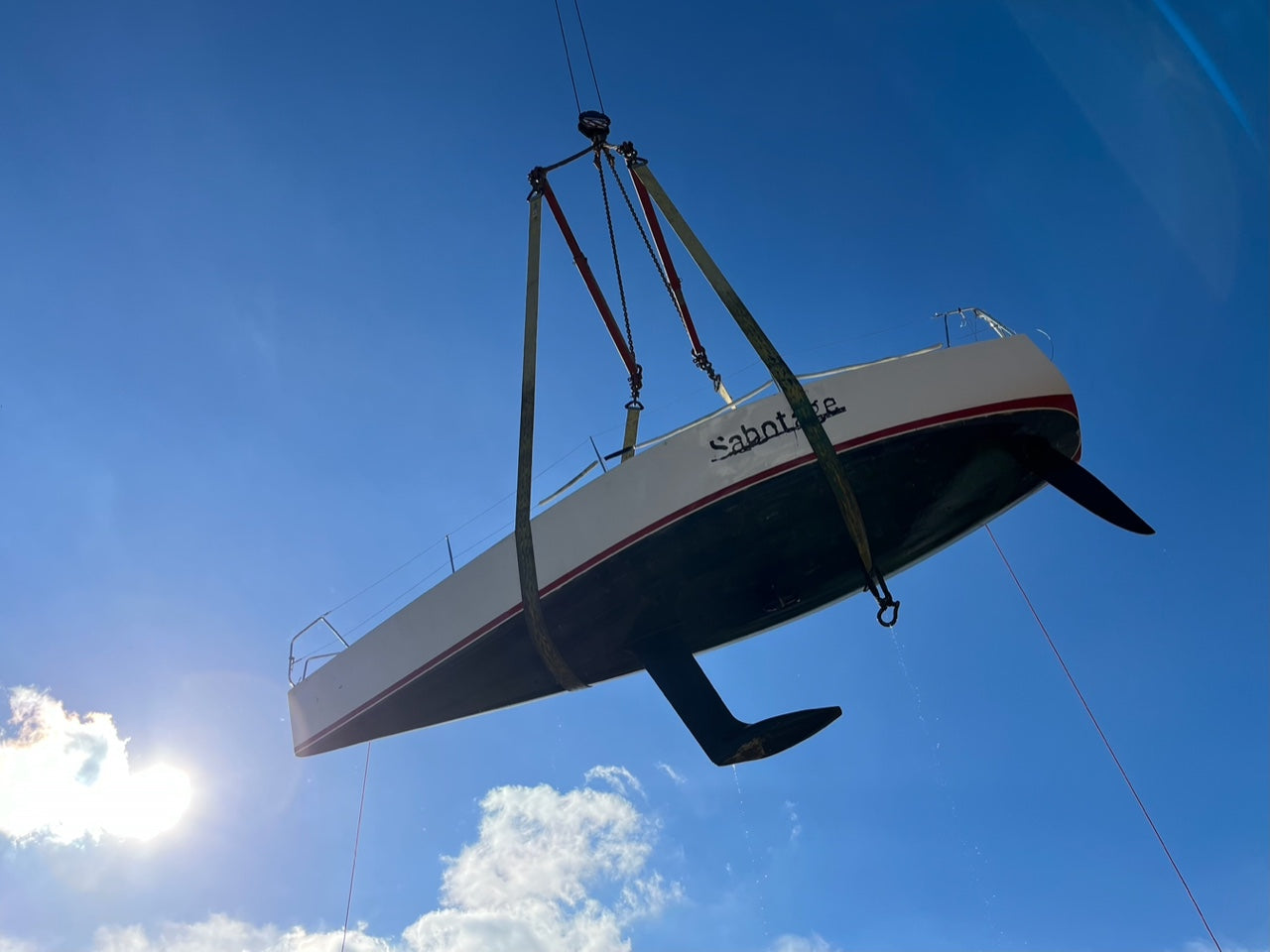
REHABBING AN OLD-ISH RACE BOAT
REHABBING AN OLD-ISH RACE BOAT
Five Tips to Upgrade Your Boat
North Sails expert Doug Folsetter shares his best tips for upgrading your old-ish race boat after modifying his new (to him) Farr 30 Sabotage. Doug sails Sabotage out of the Royal Hamilton Yacht Club and is a veteran when it comes to racing on Lake Ontario.
"Without enough distraction available during one of the prolonged covid lockdowns, I found myself spending far too much time online, looking at boats that were for sale. This culminated in the purchase of an older, Farr 30 (that had been modified with a 5’ bowsprit) sight unseen, 5,000 km away. While I wouldn’t necessarily recommend this for others (or do it again myself), we ended up with a good boat that can be great with some thoughtful updates."
"Despite having a few online tours of the boat, as well as a survey and rig inspection, I really wasn’t sure of what we were getting until it arrived. Once I was able to access the boat and equipment, I prioritized the upgrades in the following order in an effort to make the boat as competitive as possible while, at least, attempting to keep to a budget:"
Sails
"No surprise here. They’re the “engine above the deck” after all! I knew that the bulk of the inventory was approximately six years old and would need to be replaced. I didn’t have the budget to do it all at once so we looked to fill any holes in the inventory and replaced the worst or most frequently used sails first. Before the boat arrived, we ordered a Helix Code 0 with top down furler. The boat didn’t have a code zero and we know if would be a perfect sail for the distance races we had planned. Next, we discovered that there wasn’t a usable J3 onboard, so we moved that to the top of the list. We got through the remainder of the year with the existing inventory but replaced the Main and J2 with 3Di Raw this winter and will work on replacing the downwind sails later this year. After that, we should be able to work on a one (ish) sail / year rotation to keep costs under control."
Bottom
"While new sails are great, a slow bottom is... well... slow! We had planned to spend a couple of weeks sanding, fairing and painting before the boat went in the water. That said, working in the marina was questionable under the lockdown rules at the time and we we didn’t want to start a job that we couldn’t finish before our fixed launch date. Luckily, it turned out that the boat's bottom wasn’t too bad so we burnished the old paint and hoped for the best. We also bought a new bottom brush so we we could scrub regularly as it would inevitably be needed."
Running Rigging / Control Lines
"There is nothing worse than breaking a control line or ripping the cover off a halyard in the middle of a race. New lines also look good and don’t smell like dead fish (like the moldy saltwater crusted sheets the boat came with) when you put them down below. We ended up changing out almost all of the rigging and sheets after we had a chance to sail just to confirm that the existing lines lengths and diameters were correct."
Cosmetics
"While it won’t make the boat faster, I’ll admit that I’m vain enough to want good looking boat. Farr 30’s are well known to have have gelcoat issues but I was assured that all issues had been dealt with. Upon further use, I realized said issues weren’t dealt with and this became a project for last winter."
Electronics
"We ended up replacing our chart plotter right away. The older one that came with the boat only had a PNW chip and there was was not a Great Lakes chip available. We’ll look into replacing our current Nexus instruments with an integrated system over the next year or two."
"Overall, I’m happy with the boat and have created a competitive package in a reasonably cost effective way. In the end, I learned that the most return comes from tackling the jobs that make the most difference first, such as the sail inventory and the bottom. The to-do list never really gets shorter but the jobs become smaller as you go along!"
Connect with Doug to learn more about his upgrades, ask questions or gain insight into the sail package he put together for racing on Lake Ontario.
READ MORE
READ MORE
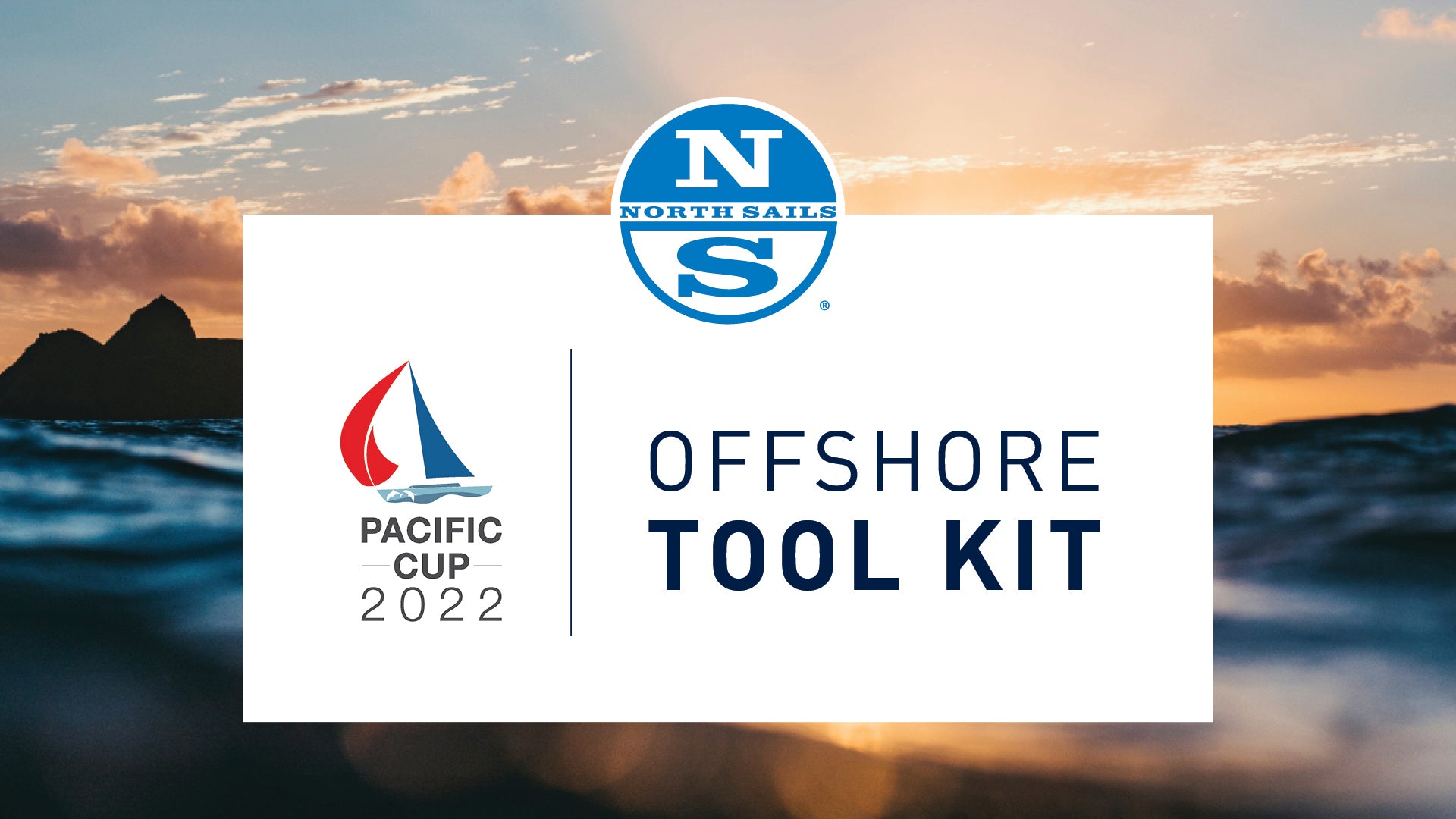
PACIFIC CUP OFFSHORE RACING TOOLKIT
Get Ready for the Pacific Cup
When heading offshore, there are many things to keep in mind that can help you make it to the finish line in one piece. Planning ahead can contribute to your success and assure your crew and your boat is set up to take on anything mother nature can bring. Here are some articles that will help you plan ahead, expect the unexpected, and get the best results in the upcoming Pacific Cup.
Good luck, sail fast, be safe, and sail smart!
Finding the Right Fit
Ken Read has plenty of experience in building ocean racing teams. Here is his advice for speed and success when it comes to finding the right players for the positions.
BUILD YOUR TEAM
Planning Ahead
Preparing successfully to compete in the biggest offshore races requires putting your attention to every detail. When sailing the Pacific Cup (or a similar race that heads well offshore such as the Newport Bermuda Race, Fastnet or Transpac), you’ll need to win a different sort of race after crossing the finish line—the delivery back to your home port.
FORECASTING
Fueling Your Crew
For many teams, preparing for any offshore race begins immediately after the finish of the previous edition. Here’s what Sarah O’Kane from Shorebase, a logistics company, says is important to properly provisioning for your next offshore adventure.
LEARN MORE
The Solution To Every Hoist
When it comes to hoisting your spinnaker, there are some details to consider that make everyone’s life easier (or harder). Having zippers instead of bands is a great way to achieve a smoother, cleaner and quicker hoist, as well as help keep trash out of the ocean.
LEARN HOW
Shift Changes: Know Your Role
It is important to always have a clear strategy for the team on deck to follow, so that rest periods by the navigator do not lead to missed opportunities or mistakes.
LEARN MORE
To Reef or Not to Reef
Shortening sail quickly and easily when the breeze comes on is key to looking after your sails and your crew.
LEARN MORE
Safety is No Accident
Hardcore ocean racers and coastal cruisers alike should all make safety at sea a priority. North Sails President and offshore veteran, Ken Read, shares his tips and best protocols for sailing offshore.
LEARN MORE
Get Downwind, Fast!
Steering off the wind, on reaches and runs, requires a coordinated effort between helmsman and spinnaker trimmer. More often than not there are conflicting suggestions: Go up. Go down. Be more aggressive. Steer less. Hear our thoughts on how to manage feedback from the crew.
HOW TO
The Trip Home is Just as Important
Preparing successfully to compete in the biggest offshore races requires putting your attention to every detail. When sailing an offshore race you’ll need to win a different sort of race after crossing the finish line—the delivery back to your home port.
LEARN MORE
Inventory Checks
Have you made arrangements for sail check-ups after the delivery home? Every sail serviced in a North loft undergoes a thorough inspection designed to identify maintenance issues early, so they do not become major problems later on. Contact your nearest loft when you hit the dock after your delivery. We look forward to helping you maintain your sail inventory so you are ready for the next event.
CONTACT US
READ MORE
READ MORE

NORTH SAILS WINTER SERVICE
NORTH SAILS WINTER SERVICE
Prepare for the Winter Sailing Season Today
The Winter sailing season is coming. Count on your local service team to provide our signature Certified Service and get you ready for the next big event. Now is the perfect time to get your sails in after the busy summer season. Make an appointment with your local team for post-season service today:
NORTH SAILS SYDNEY NORTH SAILS MELBOURNE NORTH SAILS BRISBANE
It’s our mission to provide you with expert repairs, maintenance, and upgrades. We know that whether you race or cruise, your sails are a major investment, and we’re committed to helping you maximize their performance and lifespan.
READ MORE
READ MORE
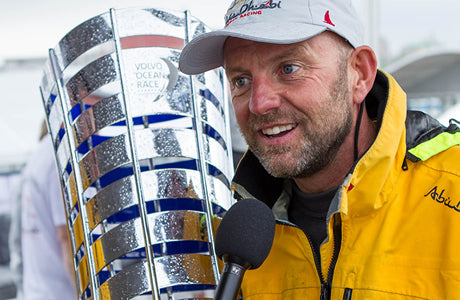
IAN WALKER JOINS THE NORTH SAILS MANAGEMENT TEAM
IAN WALKER JOINS THE NORTH SAILS MANAGEMENT TEAM
Olympic Medalist and Volvo Ocean Race Winner Named North Sails UK General Manager
North Sails is excited to welcome world-renown sailor Ian Walker to their management team. Walker is a two-time Olympic medalist, an America’s Cup veteran, and winner of the Volvo Ocean Race 2014-15 as skipper of Abu Dhabi Ocean Racing. He most recently served as Performance Director to the British Sailing Team, who claimed five medals at the 2020 Tokyo games. Walker’s next career move puts him at the helm of North Sails UK for the world’s leading sailmaker.
“Lowell North founded this business on a simple philosophy – get the best people and commit yourself to make the best product,” says Ken Read, President of North Sails. “Ian sits amongst the best in our sport. He possesses a winning attitude and a level of knowledge that’s invaluable to our brand and all North Sails customers. Having sailed against Ian, I know he’s a fierce competitor and simply a good guy. We’re honored to have him join our team.”
“The expertise from someone of Ian’s caliber is one of the greatest resources we can offer all of our customers,” remarks John Welch, COO of North Sails. “Each North Sails Manager is more than a champion sailor or a sail expert. They become a part of a tight-knit team working towards the common goal of developing superior products and delivering exceptional support for sailors at every level of our sport.”
“North has a long history and rich tradition of being at the forefront of sailmaking,” Walker explains. “Joining North Sails is an excellent opportunity to be an active voice in the marine industry and part of the industry’s leading brand. It’s clear that everyone on the North Sails team has a passion for helping people get the most of their sailing, and my new role presents a unique opportunity to work alongside talented, like-minded sailors.”
Walker’s official start date is August 1st, 2022. He will be based at the North Sails loft in Gosport, UK.
READ MORE
READ MORE
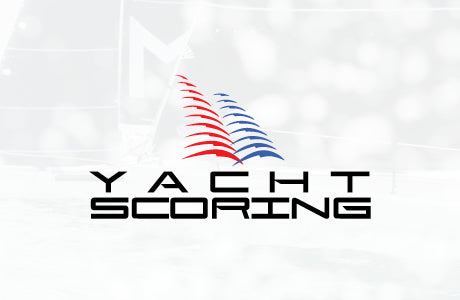
NORTH SAILS GROUP SUPPORTS YACHT SCORING
NEWS UPDATE: NORTH SAILS GROUP SUPPORTS YACHT SCORING
North Sails Group is pleased to announce the addition of Yacht Scoring to its family. Founded in 2006 by Luiz Kahl, Yacht Scoring is an easy-to-use yet powerful web-based race management and scoring tool used by hundreds of yacht clubs and race organizers around the globe. Kahl, who passed away unexpectedly in 2021, was a software developer by trade, a competitive sailboat racer, and a passionate race committee volunteer. This addition to North Sails Group is part of an ongoing mission to support the sport of sailing and increase participation.
Yacht Scoring is a race management and scoring system that simplifies the task of event registration and communications while allowing for complete results in near-real-time. The single online data-based platform streamlines regatta management and eliminates the need to maintain multiple independent spreadsheets for entry lists, scratch sheets, ratings, and competitors’ information. For sailors, Yacht Scoring’s quick and easy sign-in and live scoring program delivers immediate race results, helping sailors know the score before they return to the dock.
“Luiz uniquely blended an innovative business model with an unmatched level of customer support,” comments Ken Read, President of North Sails Group. “It was not uncommon to see him working hand-in-hand with race committees to ensure the success of their event. He didn’t do this because it was a requirement of using his services; Luiz did it because he was committed to helping sailors at all levels of the sport. It is our intention to follow his lead with this same service that he prided himself on.”
“Yacht Scoring is a tool to help race committees focus on what’s important, letting sailors have fun on the water,” says Gui Kahl, Luiz’s brother. “In just ten years, Luiz grew Yacht Scoring into a must-have regatta management platform used by thousands of sailors. Beyond his business, Luiz was an avid supporter of Warrior Sailing, youth sailing, and Bayview Yacht Club, his home club, which will continue to be supported by Yacht Scoring.” Gui further explains, “The continuation of Yacht Scoring by the North Sails Group preserves Luiz’s legacy and will keep building on his vision.”
The ease and accuracy of Yacht Scoring for race committees, sailors and volunteers with regard to all aspects of sailboat racing, from entry to scoring, will remain unchanged. The Kahl family extends their gratitude to Rob Bunn for his dedication and time over the last several months. A personal friend of Luiz’s, Rob was instrumental in keeping Yacht Scoring moving forward and operational for sailing and the sailing community. He will remain as interim manager of Yacht Scoring to ensure a seamless transition with the North Sails Group.
For more information on:
Yacht Scoring:
https://www.yachtscoring.com/howitworks.cfm
Media Inquiries:
Bridgid Murphy
bridgid.murphy@northsails.com
📸 CSR / Studio Borlenghi
READ MORE
READ MORE
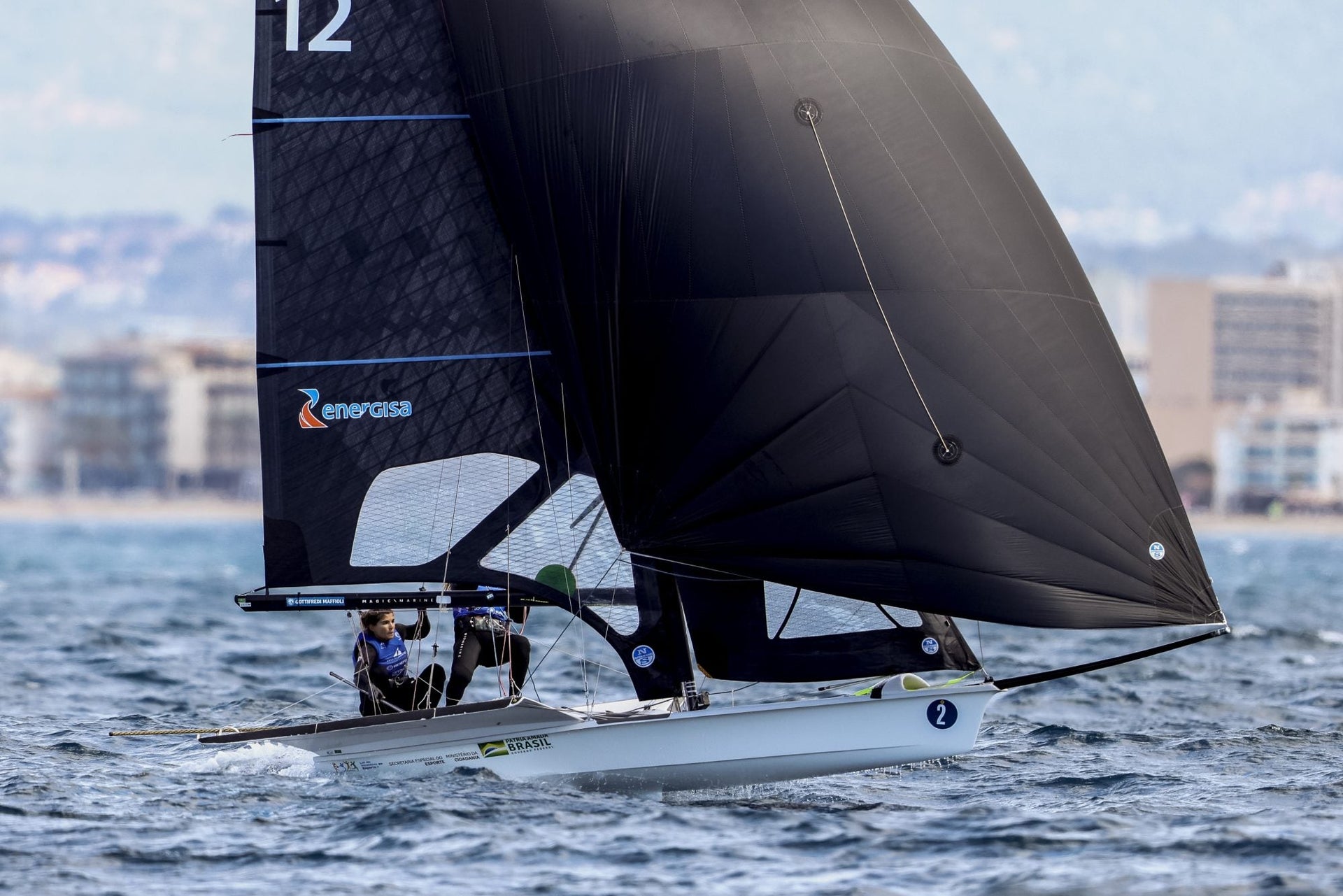
NEW 49ERFX OLYMPIC 3Di SAILS TRIUMPH
NEW 49erFX OLYMPIC 3Di SAILS TRIUMPH
North Sails Sweeps 2022 Trofeo Princesa Sofía Mallorca Podium
📸 Sailing Energy
The new North Sails 49er and 49erFX class 3Di sails which will be used in the 2024 Paris Olympics made their debut at the 51st Trofeo Princesa Sofía Mallorca. As the first event for the 2022 Hempel World Cup Series, the regatta demonstrated the potential of the North Sails 3Di sail inventory with the varied range of conditions that the Bay of Palma presented for the first major Olympic class regatta since Tokyo 2020.
At the beginning of 2021, North Sails was chosen as the official supplier of sails for the 49er and 49erFX classes for the Olympic cycle in Paris 2024. After the Tokyo 2020 Games, a short and intense transition process began to design and create the next set of sails that would unify the arsenal of contenders for Olympic glory, with all Olympic 49er and 49erFX racing North Sails 3Di sails. In the opinion of Blair Tuke, current 49er Olympic and World Champion, “This is the first time that an Olympic class is able to choose equipment that optimizes performance, consistency and longevity with a low environmental impact, all in one package.”
📸 Sailing Energy
The race to Paris began in Mallorca.
Overcoming the Tokyo hangover, the teams began preparation in a shortened cycle, which went from the usual four years to just over three years. The world health situation did not help either, making it necessary to wait until April 2022 to celebrate the first event of the Hempel World Cup Series. The 51st Trofeo Princesa Sofía Mallorca saw many 49er and 49erFX teams premier their North Sails 3Di sails in competition.
The 49erFX fleet brought together 56 boats from 23 nationalities, including the top contenders for Olympic glory in the upcoming Games. After five intense days of competition with varying wind and wave conditions in which 13 races were held (including the Medal Race), Odile Van Aanholt and Annette Duetz achieved a hard-fought win using the new North Sails 3Di inventory that will soon be required. The premiere of the new material helped the Dutch prevail over the current Olympic champions, the Brazilians Martine Grael and Kahena Kunze, who also competed with the spectacular black 3Di sails, as well as the third place team of Italy’s Jana Germani and Gloria Bertuzzi.
Nine of the ten medal race boats competed with the new North Sails 3Di sails, an excellent debut in the race to Paris 2024.
The next qualifying event for the 2022 Hempel World Cup Series, the Allianz Regatta will bring together the 49er and 49erFX fleets in Amsterdam, will take place from May 31 to June 5.
Learn more about why 3Di tested better than paneled sails during the rigorous testing process here.
📸 Sailing Energy
READ MORE
READ MORE
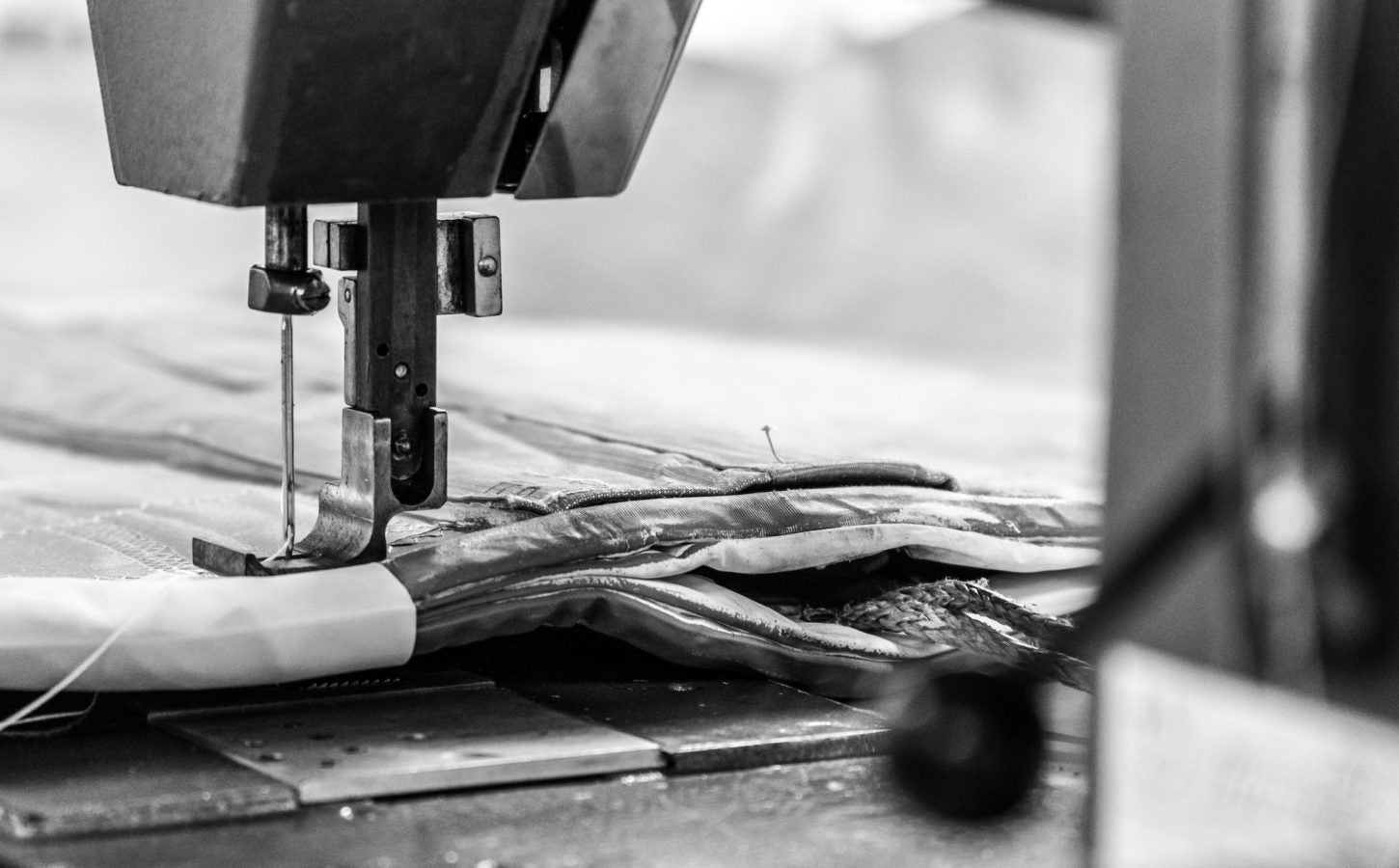
NEWS - BIENTÔT L’HEURE DE RETOURNER SUR L’EAU !
IL EST L’HEURE DE RETOURNER SUR L'EAU !
Les beaux jours approchent, le début de la saison nautique également !
Afin de vous préparer au mieux pour cette nouvelle saison, nous vous proposons quelques conseils que vous pourriez appliquer à votre bateau :
- Vérifiez le gréement dormant: nettoyez les traces de rouille sur les ridoirs, resserrez les pièces qui ont du jeu, vérifiez les sertissages et inspectez le mât et la bôme sur toute leur longueur,
- Nettoyez l’intérieur de la gorge du mât: montez au mât avec un chiffon doux, du produit nettoyant et un tournevis (ou petit outil) afin d’éliminer les dépôts accumulés pendant l’hiver,
- Vérifiez le gréement courant: inspectez vos drisses et écoutes, ainsi que tous les bouts qui sont répartis un peu partout sur votre bateau,
- Retendez les lattes de vos voiles, en espérant que vous les aviez détendu en fin de saison dernière ;-) !
- Appliquez du Teflon sur les coulisseaux de vos voiles,
- Si vous disposez d’un système réglable sur le guindant de votre grand voile, vérifiez les offsets (tout en hissant votre grand voile, mesurez la distance entre le mât et l’avant de la voile. Il faudrait avoir le même écart sur toute la hauteur de la voile afin d’obtenir la forme idéale),
- Vérifiez les coutures de toutes vos voiles ou demandez à votre voilier de le faire. Une petite reprise de couture vaut mieux qu’une grande déchirure :-) !
- Contrôlez l’état de votre sellerie: housses, tauds et poches à bouts,
- Vérifiez, graissez et huilez vos winches,
- Faites le tour de tous vos anneaux brisés et sécurisez-les avec du scotch de protection autour s’il n’y en a plus (le but est qu’ils soient lisses si la voile venait à s’y frotter),
- Vérifiez vos amarres.
N’hésitez pas à faire également appel à nos services d’enlèvement, de contrôle et de rapatriement de vos voiles !
Êtes-vous plutôt conseils à terre ou coaching sur l’eau ?
Faites appel à notre équipe pour bénéficier de conseils ou d’un coaching personnalisé ! Profitez de conseils sur-mesure, d’un workshop suivi de l’application sur votre bateau, et encore d’autres démonstrations grâce aux North Expériences !
Julien, Michel et Nicolas sont à votre écoute et se feront un plaisir de vous répondre, par email ou par téléphone au 022 782 32 22.
Nous vous souhaitons un beau début saison et restons à votre entière disposition !
Votre équipe North Sails Suisse
READ MORE
READ MORE
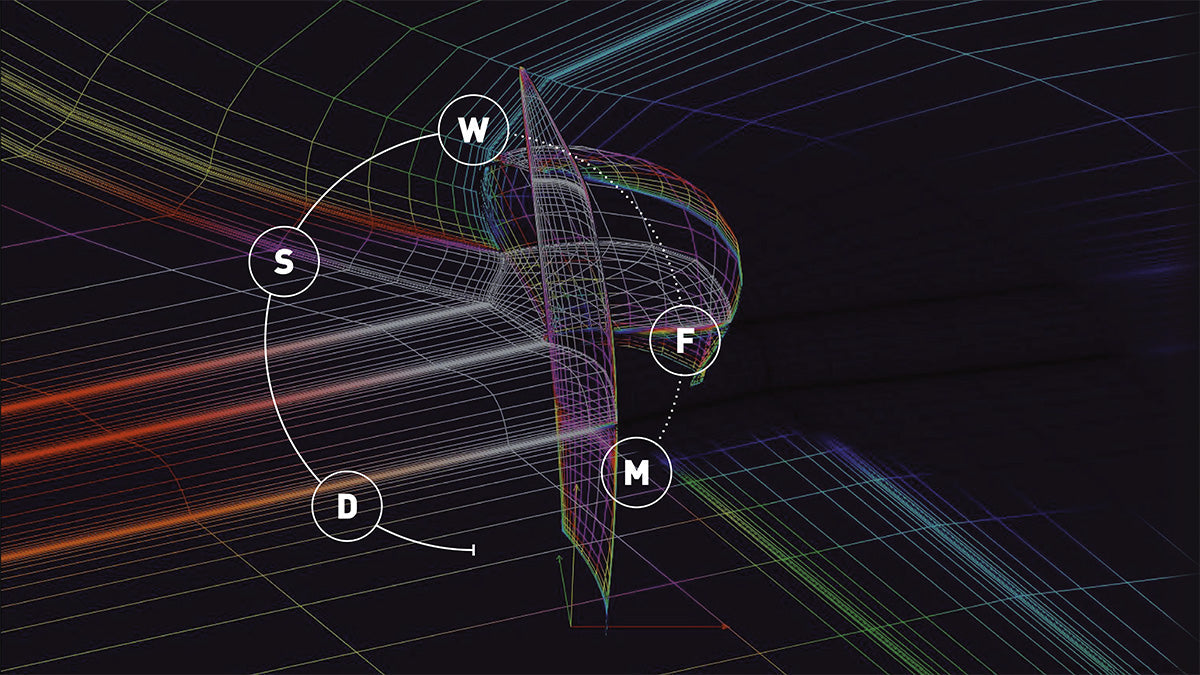
WHAT IS THE NORTH DESIGN SUITE?
It’s a competitive edge that keeps North Sails, and our clients in a class above the rest. The concept is founded on advanced mathematical modeling and powered by data.
READ MORE
READ MORE
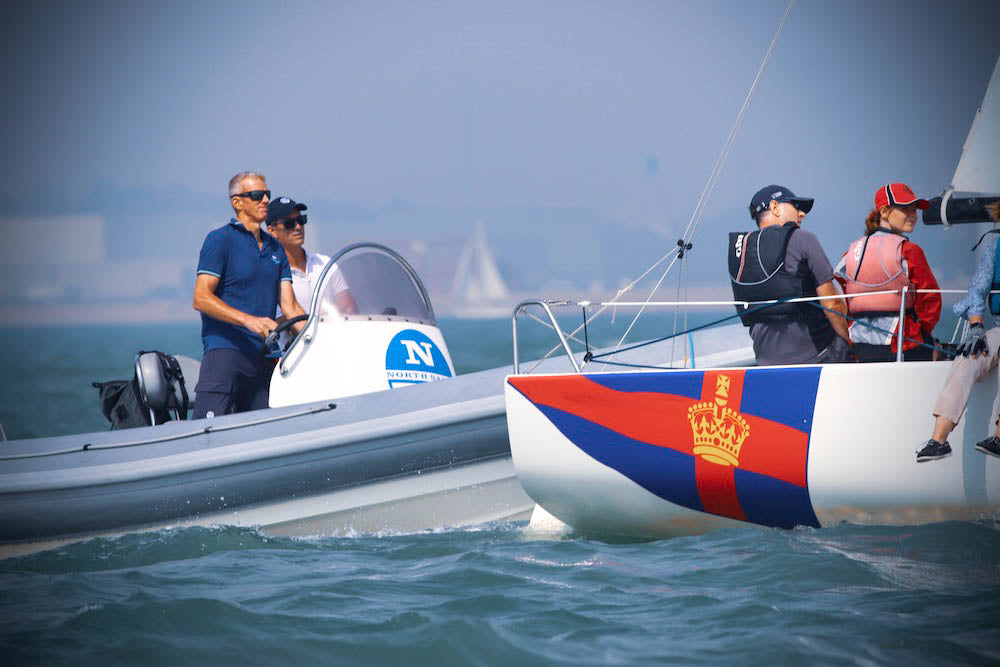
ROYAL SOUTHERN NORTH SAILS MAY REGATTA
ROYAL SOUTHERN NORTH SAILS MAY REGATTA
We Look Forward to Seeing You There
📸 Louay Habib / Royal Southern Yacht Club
North Sails UK is proud to support the Royal Southern May Regatta on the 7th and 8th of May. This regatta kicks off the first of a series of fun yet competitive summer regattas at the Royal Southern Yacht Club in Hamble.
With over 80 teams expected and hundreds of sailors taking part, it’s going to be a fantastic series, with boats on the entry list including J/70, SB20, Cape 31, HP30, J/111, and IRC Classes.
For the first day of the regatta, North Sails UK Experts will be on the water coaching from the North RIB, alongside Shaun Roster who is capturing drone videos of the fleets to be played at the club after racing. The local North experts will also run a short and relaxed in-person debrief for all competitors to help teams get the most out of the weekend and the series. And find our branded goodies amongst the prizes, including jackets, books, and sail bags. North Sails Certified Service will be onsite for the weekend. For any sail repairs during the regatta, contact the local Service Expert James Hobson on +44 7557 941069.
📸 Louay Habib / Royal Southern Yacht Club
Several high-performing North Sails-powered boats are set to take part, including Ian Atkin’s new Carkeek 40 Dark ‘n’ Stormy. “There is a big incentive to do all of the Summer Series regattas, but each feels like a proper championship in its own right,” comments Ian Atkins. “Dark ‘n’ Stormy is a thrilling boat to race, and there are about ten boats of similar capabilities racing in The Solent. We are looking forward to a superb season of racing.”
“Everyone could use a North Sails bag to carry their sandwiches down to the boat!” laughed Chris Jones, owner of North boat Journeymaker. “But the simple truth is that North Sails have some very high-quality experts, and we know their input is going to be of the very highest caliber. Their advice really does help us progress.”
One Design classes have always been a feature of the Royal Southern Summer Series. The pocket-rocket Cape 31 UK Class, based in Hamble, will see five or more Cape 31s at the North Sails May Regatta. North Sails has worked closely with the class, optimizing sail designs, offering support and training sessions. The Bartholomew’s Tokoloshe has an experienced crew onboard and is certainly one of the North boats that we have a close eye on having won the final regatta of the 2021 Summer Series. If you missed it, read our recap on the 2021 UK Nationals and how the fleet is captivating sailors worldwide.
📸 Live Sail Die / PKC Media
The SB20 Class will also be in action for the North Sails May Regatta which will be their Southern Championship and the first round of the SB20 UK Series.
The Royal Southern Yacht Club has produced J/70 World Champions in both the Open and Corinthian Classes. The 2022 J/70 UK Sprint Series kicks off at the North Sails May Regatta and will be held throughout the Royal Southern Summer Series. With five short, sharp races per day, the series is designed to test raw speed and boat handling.
J/70 UK Class Captain Marshall King, 2019 Corinthian World Champion, commented: “The Sprint Series provides thrilling racing and is the perfect environment to improve starts and boat handling. After racing, the J/70 Class enjoys getting together for post-race drinks where we share knowledge to increase performance right through the class.”
Online Entry for the North Sails May Regatta and the Notice of Race is available here. For more information, please email: RSrnYC Sailing Secretary James Ripley.
📸 Sportographytv
READ MORE
READ MORE
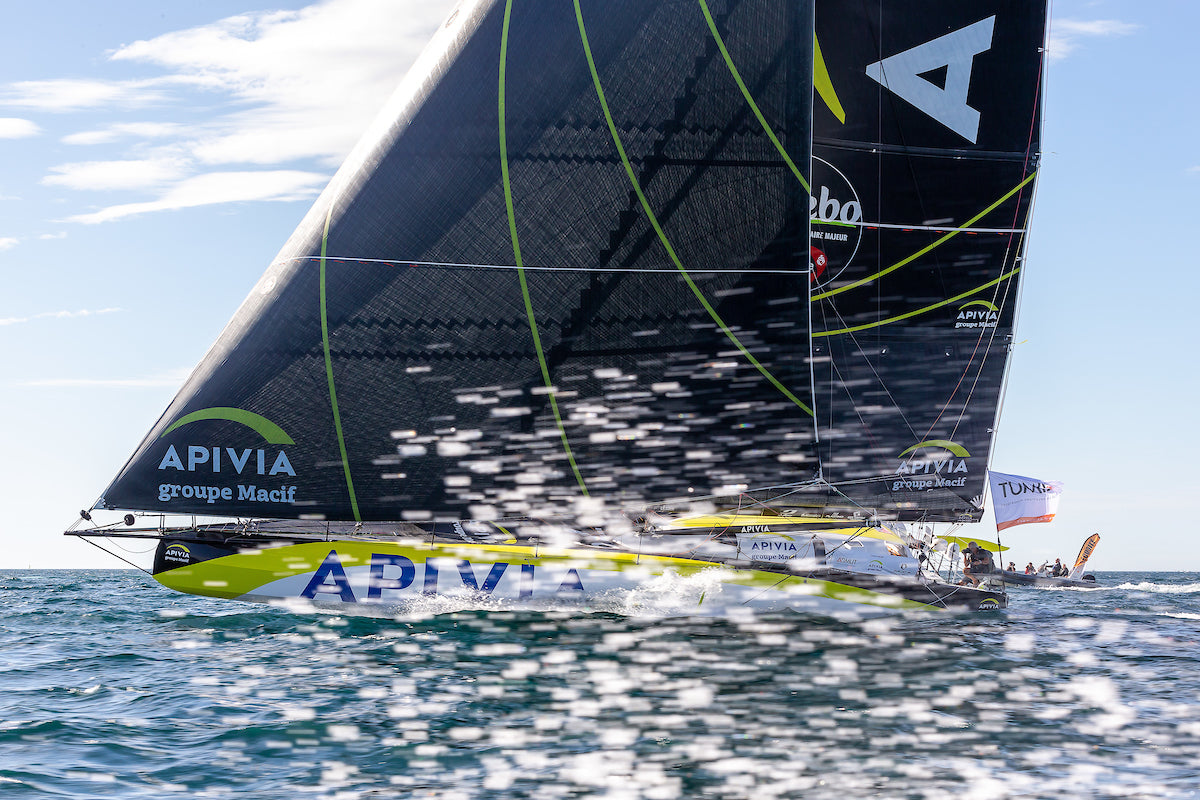
CODE SAILS DEFINED
CODE SAILS DEFINED
What Is A Code Sail?
The term ‘Code Sail’ means different things to different sailors. What started out as an innovative and straightforward concept has rapidly evolved into a whole new category of sails. While Code Sails may look and perform quite differently from one another, there is one common theme: Code Sails are fast, flat, free-flying sails, designed for close reaching angles.
To understand all the different names and versions, it may help to look back at the origin of these sails. Originally “Code Zeros” were designed to qualify as spinnakers under various rating rules that require the mid-girth to be 75% of the foot length. Volvo Ocean Racers coined the term Code Zero, which fit into the established North Sails coding convention: A1, A2, A3, etc. This design also became popular among handicap racers under Rules like IRC, ORR, and PHRF. As their effectiveness and ease of use became increasingly apparent, Code Sails expanded into cruising as well, and multihull sailors coined the term “Screechers” for their similar, specialized, high-performance reaching sails.
Code Sails add a great deal of sail area and power for close reaching angles. Boats with non-overlapping headsails see the biggest benefit from Code Sails, as they better fill the inventory gap between upwind headsails and downwind spinnakers.
REQUEST A QUOTE CONTACT YOUR LOCAL EXPERT LEARN MORE ABOUT CODE SAILS
Helix Structured Luff: Code Sails Redefined
While Code Sail is a term used by sailmakers across the board, in recent years North Sails has redefined what it means to have a North Code Sail, with the introduction of its Helix Structured Luff technology.
A design philosophy first introduced for offshore Grand Prix, the performance benefits of Helix have reverberated around the sailing world, making Helix Code Sails the go-to tool for improving aerodynamics and increasing range.
View this post on Instagram
A post shared by North Sails (@north_sails)
With their unique luff structures, Helix Code Sails give sailors another gear, increasing power potential by projecting the sail further forward and optimizing load sharing, for a positive sail shape and enhanced control. They are custom-designed – optimized to react to dynamic sailing loads, easily and efficiently handle torque for furling, and offer load-sharing characteristics suited to a much wider wind angle and wind speed range.
As of January 2022, Helix is now a feature of all North Racing Code Sails. The exact implementation of the Helix Structure varies according to the specific version of Code Sail. When purchasing a Code Sail, your boat’s performance, target wind angles and anticipated wind speeds, your onboard sail handling systems, and the sail material you have chosen are all taken into consideration. Then, the sail is designed around your specific needs.
Helix Code Sails and Mid-Girth Measurements
Note: Some rating/handicap systems strictly limit the available mid-girth specifications of rule-eligible sails, barring sails with mid-girths greater than a headsail’s 50%/less than a spinnaker’s 75% . Other rating systems heavily penalize mid-girths greater than 50%/less than 75%. And other systems attempt to generate accurate ratings with no special consideration given to mid-girths between 50 and 75. Discuss with your North Sails representative the rating system under which you will be racing to determine whether and which any rule restrictions or prohibitions apply.
Helix Code Zero Asymmetric Spinnaker – Mid Girth (SMG) >75%
For systems that disallow mid-girths between 50 and 75%, this sail remains much the same in concept as the original Code Zero. The design requirement is the flattest possible sail with a spinnaker mid-girth of 75%. The challenge of designing and building a Code Zero Asymmetric Spinnaker is meeting the 75% girth measurement while producing a sufficiently flat sail shape with no excess area”flapping” in the wind. Code Zeros carry an unsupported mid-girth sail area that is not aerodynamically efficient for light-air close reaching. Code Zeros can be made in 3Di Downwind or Code style aramid laminates.
Helix Code 50 – Mid Girth (SMG) <54%
North Sails’ newest code sail, the Code 50 is a free-flying sail for offshore racing. Ideally suited to ocean racing Grand Prix yachts such as IMOCAs and Ultime Trimarans, it uses a new 3Di Downwind (RAW) 700 material, uniquely suited to the hybrid requirements of offshore, free-flying sails – exceeding the limitations of standard 3Di Downwind 600, 700 & 800 material.
Helix Code 55 + 65 (SMG 51%-74%)
A Code 55 has a 55% SMG while a Code 65 features a 65% SMG. (SMG is the width of the sail measured at half the sail’s height, expressed as a percentage of foot length). Code Sails with mid-girth between 50% and 75% are highly efficient and versatile sails. However, as noted above, these sails are sometimes treated unfavorably (if not outright banned) by certain rating rules. Where allowed, these Code Sails provide pure reaching performance – ideal for offshore racing, multihull sailing, and performance cruising. A smaller SMG percentage implies a flatter sail for closer wind angles, while a higher SMG percentage implies a slightly fuller sail for wider wind angles. An SMG less than 51% is considered a genoa, while an SMG greater than 74% is considered a spinnaker.
REQUEST A NEW SAIL QUOTE
CONTACT YOUR LOCAL EXPERT
READ MORE
READ MORE
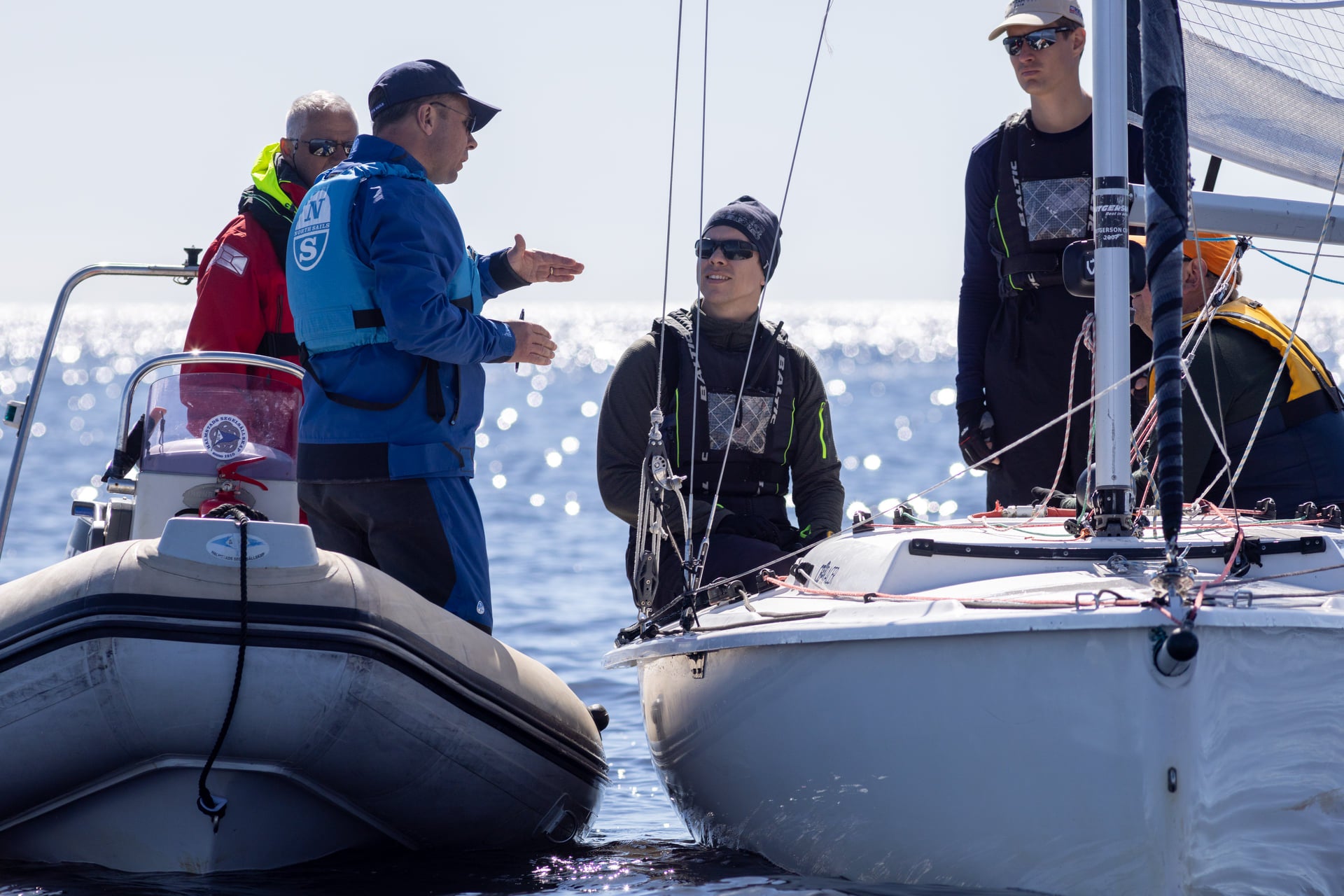
NORTH SAILS TRIM CUP 2022
NORTH SAILS TRIM CUP 2022
Ett Samarrangemang Mellan Halmstad Segelsällskap Och Oss På North Sails
📸 Daniel Stenholm
Sista helgen i april samlades ett tiotal besättningar i Halmstad för att vara med på en kombinerad tränings- och kappseglingshelg. Coacher var Henrik Ottosson och Andreas Turesson från North Sails i Göteborg.
North Sails Trim Cup är ett samarrangemang mellan Halmstad Segelsällskap och oss på North Sails. I år vände vi oss främst till CB66:or men kul nog tog även en lokal J/70-besättning tillfället i akt att haka på.
Vädret gick inte att klaga på. Det var klart och soligt under hela helgen, möjligtvis lite småkyligt ibland, med måttlig frånlandsvind under fredagen och lördagen och lite mer därtill under söndagen.
På programmet stod träning under fredag och lördag förmiddag, och kappsegling under lördag eftermiddag och söndag förmiddag. Planen var att köra ”så många seglingar vi hinner”, och det blev till slut tio genomförda race. Hur det gick är egentligen mindre viktigt. Syftet med helgen var framför allt att seglarna skulle få jobba bort ringrosten och förhoppningsvis få lite nya lärdomar och intryck som de har nytta under den kommande säsongen.
För coachningen stod Henrik Ottosson och Andreas Turesson från North Sails i Göteborg. De fokuserade särskilt på två områden: besättningens placering i båten under olika förhållanden och på olika bogar – en oerhört viktig faktor i lätta sportbåtar som CB66 och J/70 – och samspelet mellan focktrim och storsegeltrim.
📸 Daniel Stenholm
HSS har fina seglingsvatten precis utanför piren, vilket gör det möjligt att på ett effektivt sätt kombinera segling med lunch och genomgångar på land. Varje dag inleddes med dragning i klubbhuset innan båtarna skickades ut på vattnet. Henrik och Andreas åkte runt i var sin RIB-båt och kunde ge snabb feedback. De tog foton och filmer, och detta låg sedan till grund för de uppföljande genomgångarna.
Det var med andra ord ett ganska intensivt program, med två segelpass och tre genomgångar om dagen. Men det är ett trevligt upplägg som ju också ger utrymme för umgänge med seglarkompisar som man kanske inte träffat sedan förra säsongen.
Tack till Halmstad Segelsällskap för ett som vanligt fint arrangemang. Tack också till Hotell Clarion Collection Norre Park, som hade fixat bra priser på hotellrum och som ordnade en väldigt fin regattamiddag på lördagskvällen.
📸 Daniel Stenholm
READ MORE
READ MORE
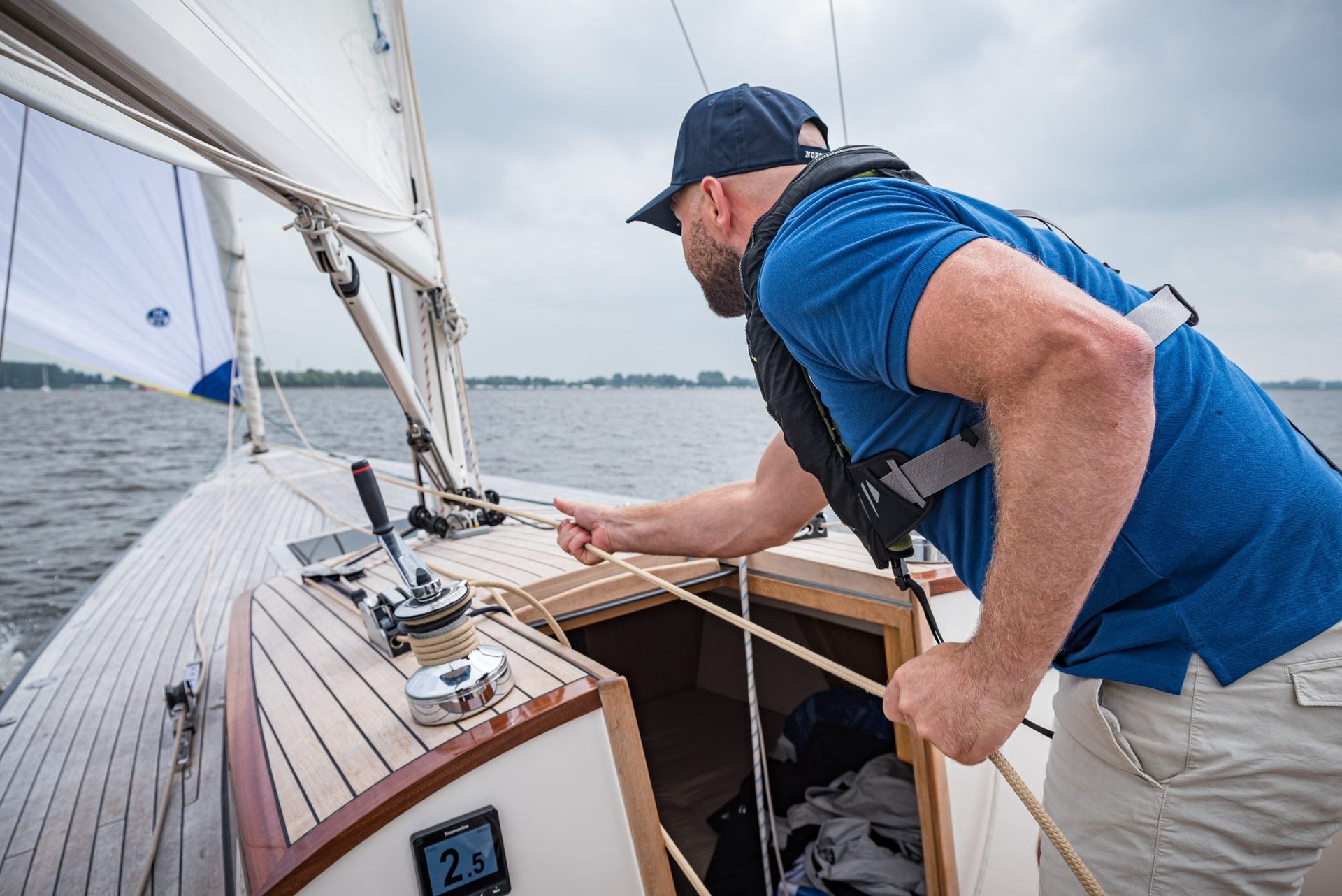
OUR FAVORITE UK CRUISING DESTINATIONS
OUR FAVORITE UK CRUISING DESTINATIONS
Sights Set for Summer Cruising
What makes for a good sailing destination? Sheltered bays, great scenery, cosy pubs, swim spots and good weather. Top it off with a North Sails loft and a chandlery in case of any breakages and you have everything you need. North Sails shares their favorite UK destinations and where you can drop your sails in to be serviced or repaired on your travels.
Wales - Pwllheli
Pwllheli, Abersoch and the Llyn Peninsula in Wales is a protected Area of Outstanding Natural Beauty. It’s said to be the best sailing venue in Wales, one of just four in the UK that are suitable for hosting International Olympic and Youth and Junior class competitions.
Filled with beautiful seaside resorts and friendly yacht clubs such as the South Caernarvonshire Yacht Club in Abersoch, paired with a lovely climate from May-September, it is easy to see why this part of coastline is a magnet for both cruising and racing.
Devon - Plymouth, Dartmouth, Salcombe
If you fancy exploring the South Coast, Devon has lots to offer. With a North Sails representative loft in Plymouth, you are never far from a quick fix or service. Plymouth Sound’s most popular summer anchorage is Cawsand Bay, although it can be a bit exposed in strong south westerly winds.
There is a quieter alternative in Barn Pool, north of the Bridge Reef. Pop ashore for a walk around the Mount Edgecumbe Country Park. Fancy spectating some high performance sailing? Head to Plymouth for Sail GP at the end of July, if you’re not taking part in Cowes Week that is!
If you have more time we also recommend popping around the corner towards Dartmouth and Salcombe. With so many secluded spots and sheltered harbors only a few hours away, you will be spoilt for choice on this dramatic coastline!
Solent - Cowes/Gosport
Home to high performance racing, the Solent is always a great place to hop from one anchorage to another, especially if you are short on time. With Cowes on the Isle of Wight as a base for amenities, yacht clubs and pubs, there are plenty of lovely spots within a few miles to explore.
Surrounded by a nature reserve is the stunning Newtown Creek. Watch out as it can get busy here on weekends, but if you manage a mid-week getaway you may be lucky enough to have it to yourself. The Beaulieu River in the New Forest is sheltered and home to the National Motor Museum if British summer time catches you out with bad weather.
Scotland
Whilst the weather may leave a lot to be desired, Scotland has some of the best cruising waters in the world. Head to the Kyles of Bute and the Isle of Arran for sheltered cruising amongst small islands. For those looking for dramatic scenery, whirlpools and whisky, the Inner Hebrides is the place for you.
If you do decide to venture up to Scotland, North Sails representative Kevin Aitken will be on hand to assist should you need it.
ALL NORTH SAILS LOCATIONS
READ MORE
READ MORE
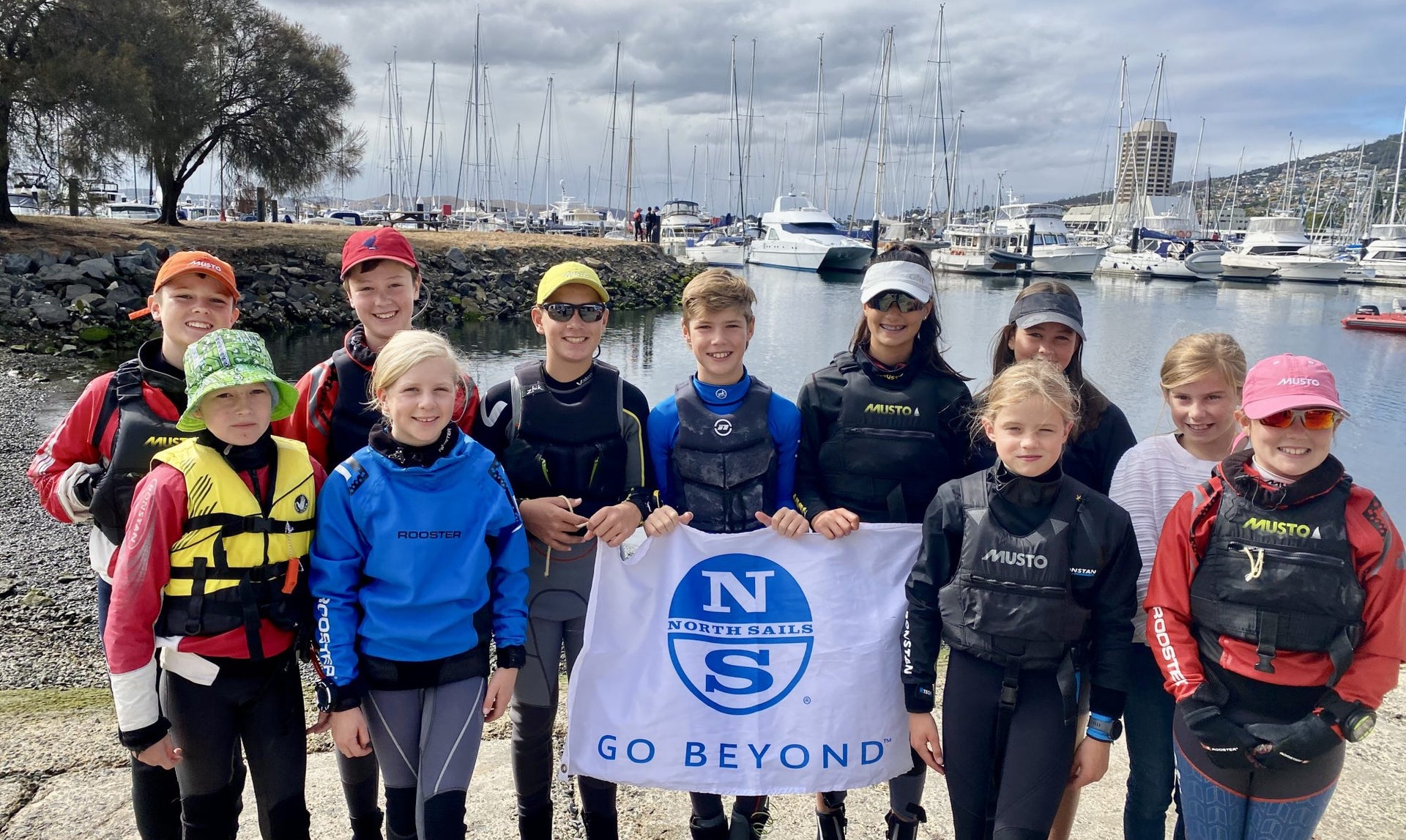
MAKING WAVES FOR THE FUTURE
MAKING WAVES FOR THE FUTURE
North Sails Australia Has Partnered With the Australian Optimist Class
North Sails are proud to support the Australian National Optimist Class, including various state championships across all fleets, with more than 120 young sailors participating in the nationals earlier this year.
“We see this as an opportunity to encourage the younger generation to get out on the water and to stay involved in sailing,” said North Sails Australia’s Sale Manager, Alby Pratt.
“Donating new sails and North Sails vouchers for the National and State Associations to give as prizes is something we were adamant on, in the hope of providing new opportunities for the sailors who may not always be at the front of the fleet.”
“We’re committed to growing junior sailing in Australia with the Optimist class, and hope we can continue that into the future.”
Australian International Optimist Dinghy Association (AIODA) President, Jeremey Atkinson, was excited to bring North Sails onboard as a partner, commenting, “Alby approached us to support the class in 2021, and of course we jumped at the opportunity.”
“It’s unlike any of our other class partnerships and supports all levels of our Optimist sailors, combining at a state and national level, which is a great initiative from North Sails.”
“The AIODA saw this partnership as an opportunity to support Australia’s younger immediate sailors coming up through the ranks.”
Jeremey highlighted that, “one of the best things we’ve benefitted from so far was the coaching day North Sails put on at the 2022 National Championships at Georges River earlier this year. North Sails Expert, Noel Drennan came down and did a class tuning session for the sailors and their parents, and the feedback we’ve received was extremely positive.”
This North Sails initiated coaching session for the Nationals fleet also showcased the newly launched V-Series ranging from the Optimist V-1, V-2 to the V-3 mainsail and the best tuning guide for each skill-level sailors.
“We’re looking forward to this highlight at the next Australian Championships at Royal Prince Alfred Yacht Club for the 2022/23 nationals in January next year” Jeremey finished.
In addition to the coaching support, the North Sails sponsorship includes a three year partnership with the Australian Optimist Class to present two new sails and two North Sails vouchers for the national titles, while one new sail and vouchers will be gifted to all state titles as well.
The North Sails team has a long tradition of promoting grassroots fleets around Australia. Our network of one design experts and dealers are available to help you get the most out of your sails so you can reach your goals anytime you’re on the water.
READ MORE
READ MORE
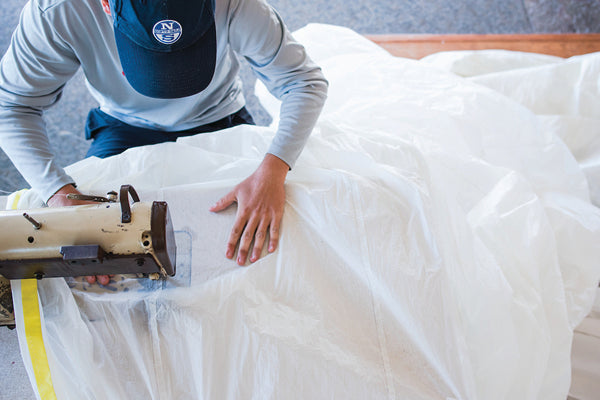
NORTH SAILS AT YOUR SERVICE
NORTH SAILS AT YOUR SERVICE
Upcoming Regatta Repair Schedule
North Sails Certified Service Experts will repair your sails overnight. Our Service van is on-site at select events, offering regatta venue pick-up and drop-off. Tears happen, but they shouldn’t leave you without a key piece of race inventory. Look our for our North Sails Certified Service Experts at the following regattas this season.
*Local service expert for these events will be Kelsey Tostenson. 510-334-0203
EXPRESS NATIONALS
May 20-22
Location: Richmond Yacht Club
ALDO ALESSIO/SWIFTSURE REGATTA
August 19-21
Location: St. Francis Yacht Club
ROLEX BIG BOAT SERIES
September 15-18
Location: St. Francis Yacht Club
J105 NORTH AMERICANS
September 29 - October 3
Location: St. Francis Yacht Club
Talk To A Service Expert
READ MORE
READ MORE
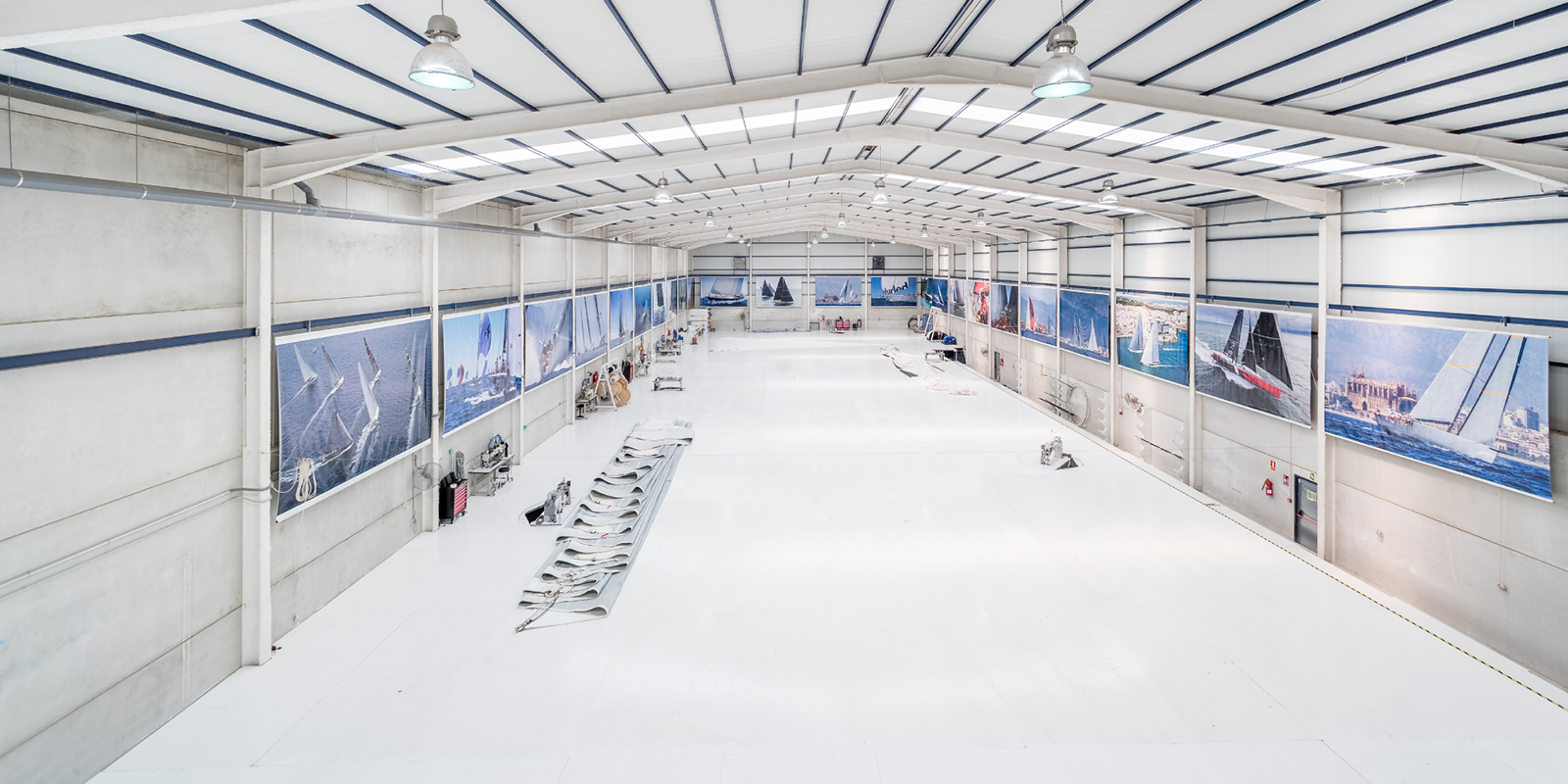
NORTH SAILS EXPANDS PALMA SALES AND SERVICE FACILITY
NORTH SAILS EXPANDS PALMA SALES AND SERVICE FACILITY
One All Purpose Site Elevates Customer Service to Unprecedented Levels
📸 Ian Roman
Palma, Mallorca Spain, April 21 2022 – North Sails has strategically relocated all their sales and service into one Palma location. Effective immediately the secondary loft space in Llucmajor is closed with all loft functions now concentrated within the Palma loft, located minutes from Palma Harbour and the closest facility to STP (Servicios Técnicos Portuarios) where North Sails also boasts a dockside office. The Palma loft has doubled in size by obtaining the space adjacent to the current structure and creating a mirror image of the existing loft space. The newly configured space is now Palma’s largest dedicated sailmaking and service facility.
According to Quinny Houry, Site Manager, “the consolidation of the two loft sites in Mallorca into one 4,720m/sq site with 700m/sq of sail storage just 10 minutes from the water has enabled us to focus on client care and raise it to a level that is unprecedented in the industry.”
North Sails Palma houses over 30 experts including sail designers, sailmakers and service professionals in a one-stop full-service centralized location. Loft services aim to provide a unique customer experience that include concierge-style sail removal and installation, sail design service, emergency repair, dedicated pick up and delivery services and year-round sail storage. With support available 365 days a year and an extremely convenient location the new loft layout raises the standard of excellence in sail care and customer service for sailors in Europe. “Expanding into the one building to combine the team’s expertise and utilize a more effective and efficient layout. The new loft set up offers unrivaled access to world-class sales and sail care professionals for superyachts and local yachtsmen alike,” says Brad Favelle, Operations Manager.
North Sails Palma
Poligono Industrial Son Morro,
Carrer Ca Na Melis, 11a,b,
07007 Palma, Balearic Islands
CONTACT NORTH SAILS PALMA
📸 Ian Roman
READ MORE
READ MORE
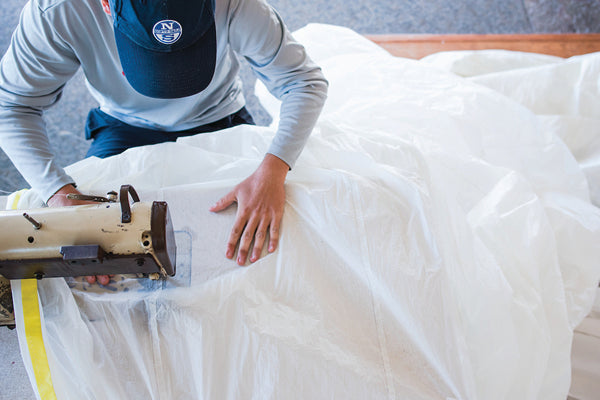
NORTH SAILS AT YOUR SERVICE
NORTH SAILS AT YOUR SERVICE
Upcoming Regatta Repair Schedule
North Sails Certified Service Experts will repair your sails overnight. Our Service van is on-site at select events, offering regatta venue pick-up and drop-off. Tears happen, but they shouldn’t leave you without a key piece of race inventory. Look our for our North Sails Certified Service Experts at the following regattas this season.
*Local service expert for these events will be James Hobson. +44 7557 941069
ROYAL SOUTHERN YACHT CLUB NORTH SAILS MAY REGATTA
May 7th & 8th
VICE ADMIRALS CUP
May 20th & 22nd
IRC NATIONAL CHAMPIONSHIP
June 10th & 12th
J CUP
June 30th - July 2nd
COWES WEEK
July 30th - August 5th
ETCHELLS WORLDS
September 18th - 24th
ROYAL SOUTHERN YACHT CLUB SEPTEMBER REGATTA
September 24th & 25th
Talk To A Service Expert
READ MORE
READ MORE
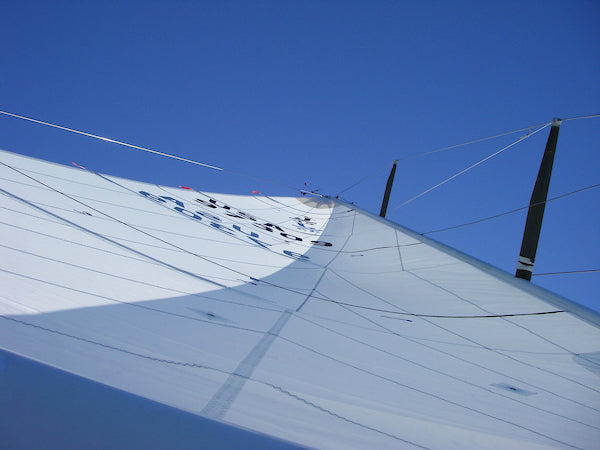
OCCASIONSLISTE
OCCASIONSLISTE
Gebrauchte- und Lagersegel von North Sails Schweiz
Hier geht es zur aktuellen Liste:
OCCASIONS SEGEL
READ MORE
READ MORE
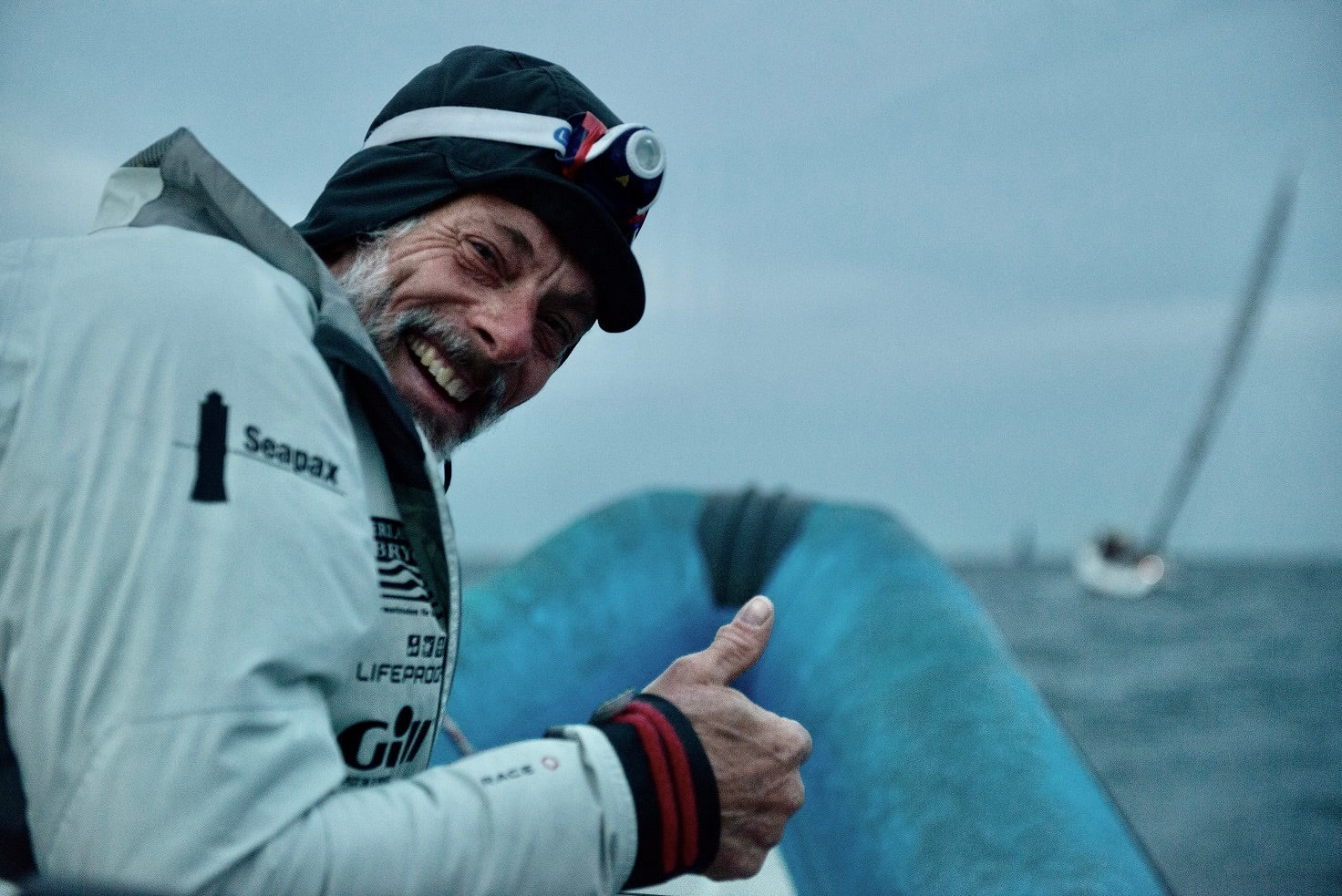
VÄLKOMMEN TILL NORTH SAILS OFFSHORE CLINIC 2022
VÄLKOMMEN TILL NORTH SAILS OFFSHORE CLINIC 2022
13-15 maj har du chansen att drillas av vår egen Anders Lewander. På schemat: Allt från fartträning till nattsegling och man-över-bord-träning
North Sails Offshore Clinic genomfördes första gången 2018 och har blivit något av en tradition för havskappseglare som vill skaka ringrosten ur kroppen och få några dagars intensiv träning innan kappseglingssäsongen drar igång på allvar. Nytt för i år är att vi vänder oss till såväl fullcrew- som shorthandedseglare.
Förra årets upplaga präglades av pandemin men i år körs evenemanget utan begränsningar, så du kan dessutom se fram emot ett trevlig socialt program med bland annat morgongympa, gemensamma måltider och bastubad.
Träningshelgen genomförs 13-15 maj utanför Sandhamn av North Sails och Svenska Havskappseglingsförbundet i samarbete med KSSS. Träningen leds, som brukligt, av Anders Lewander från North Sails Stockholm.
Clinicen vänder sig främst till ambitiösa havskappseglare och syftet är att på ett strukturerat sätt ta oss an de delar som är viktiga för att prestera på ett internationellt mästerskap.
På programmet står bland annat startträning, banracing, nattsegling och man-över-bord-träning. Dessutom fartträning på både kryss och öppna bogar med lätta skot. Det gör det till ett gyllene tillfälle att exempelvis testa stagsegel eller få ett bra underlag för att uppdatera segelvalstabellen eller polardiagrammen.
Vill du vara med?
En formell inbjudan med detaljerat program finns på Svenska Havskappseglingsförbundets hemsida. Maxantalet är satt till tjugo båtar, så vänta inte för länge med att anmäla dig.
READ MORE
READ MORE
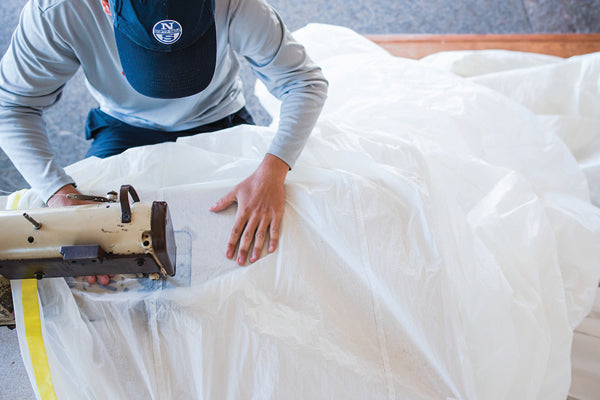
NORTH SAILS AT YOUR SERVICE
NORTH SAILS AT YOUR SERVICE
Upcoming Regatta Repair Schedule
North Sails Certified Service Experts will repair your sails overnight. Our Service van is on-site at select events, offering regatta venue pick-up and drop-off. Tears happen, but they shouldn’t leave you without a key piece of race inventory. Look our for our North Sails Certified Service Experts at the following regattas this season.
*All pickups will be 4:30-5:30pm and drop offs will be 7:30-8:00am.
NYYC ANNUAL REGATTA
June 10-11
Location: Sail Newport, The Alofsin Piers
NYYC RACE WEEK AT NEWPORT
July 13-15
Location: Sail Newport, The Alofsin Piers
SAFE HARBOR RACE WEEKEND
August 12-13
Location: Safe Harbor Newport Shipyard
12 METRE NORTH AMERICANS
September 15-17
Location: Sail Newport, The Alofsin Piers
IC37 NORTH AMERICANS
September 22-24
Location: Sail Newport, The Alofsin Piers
Talk To A Service Expert
READ MORE
READ MORE
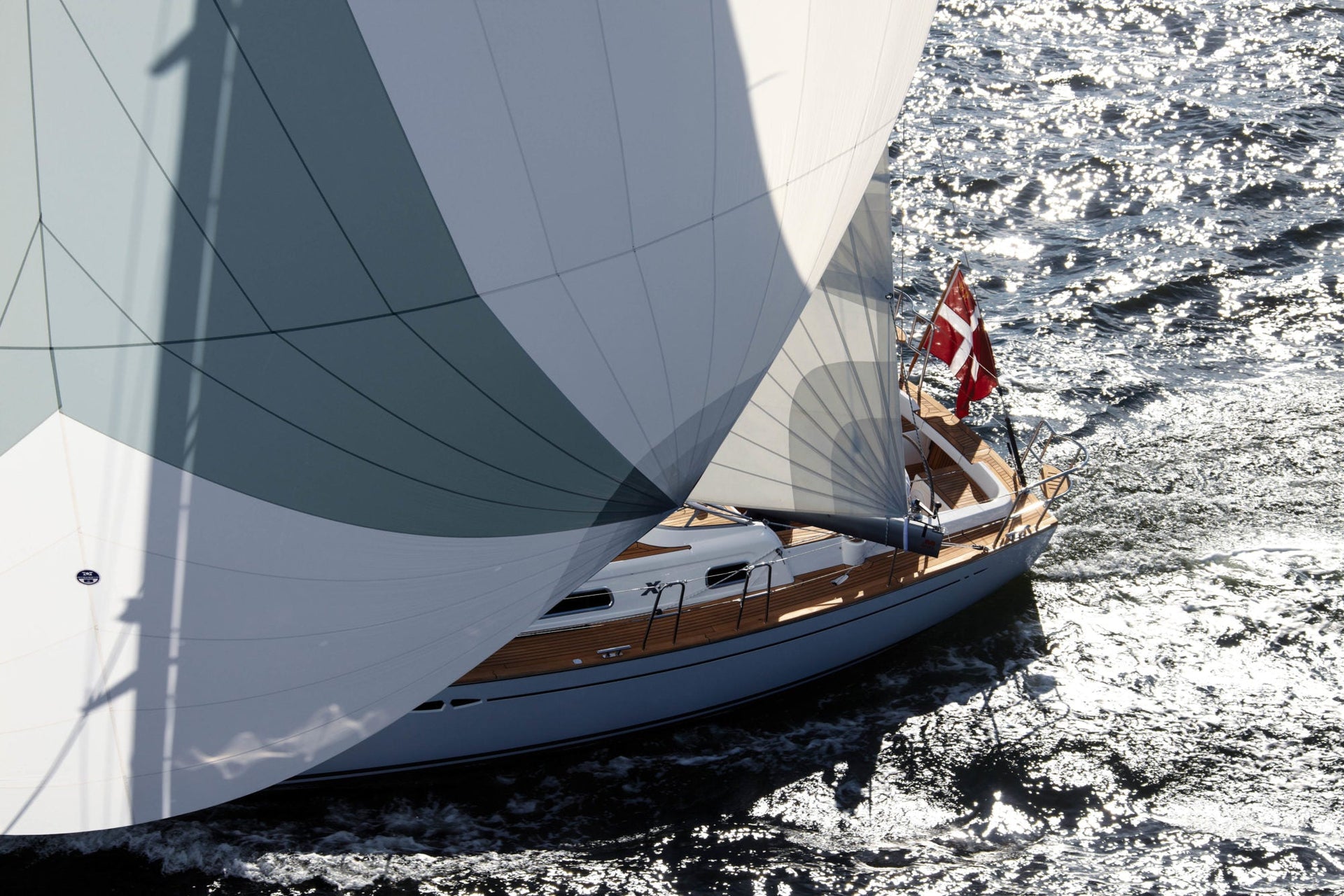
HOW TO HOIST AND DOUSE A GENNAKER OR SPINNAKER
CRUISING DOWNWIND
Feel the Power of Simplicity
Spinnakers provide an enormous performance boost in light to moderate air when sailing downwind—and well they should, considering the trouble they can cause! We’ll take a look here at how to handle and trim both cruising spinnakers—also called Gennakers, which fly without a pole—and conventional spinnakers with poles.
Setting a Gennaker
A cruising spinnaker or Gennaker is set with a tack line from the bow, a halyard, and a sheet led to the aft quarter. For shorthanded sailing, a spinnaker Snuffer is recommended. The sail is hoisted within a protective sock, and once up, the Snuffer line is pulled to retract the sock and free the sail. To prevent twisting, the tack line should be tightened prior to the hoist. Do you need a tack strap? Depending on the luff length of the Gennaker, it may also be advantageous to rig a tack strap. Rigged around the rolled jib, the tack strap prevents the tack from wandering. If your sail has a long luff and a low tack—just above the bow pulpit—then a tack strap is not required. For a sail with a short luff and a high tack, a tack strap adds control. The Gennaker sheets can be lead inside or outside the Gennaker luff. There are advantages to each set up, and both work.... you’ll have to experiment to see which works better on your boat, and the best option may vary with the wind strength.
Setting a Spinnaker
Conventional spinnakers with spinnaker poles offer more control over spinnaker trim and sail shape, which can increase performance—but it comes at the price of additional complexity. For shorthanded sailing, a Snuffer is recommended, though the setup and hoist steps are the same with or without it. First, rig the pole with a topping lift—to hold the pole up—and a foreguy—to pull the pole forward. Some skippers also rig an afterguy directly to the pole to hold the pole back. Others allow the spinnaker guy to handle this function. You can sail safely and successfully either way, though before and after the spinnaker is deployed, the pole will not move around as much if a separate afterguy is rigged. Either way, the windward spinnaker sheet—called the guy —is rigged to run through the end of the pole. Once the sail is rigged and ready, trim the guy to pull the tack of the spinnaker to the end of the pole, and then hoist. As you reach full hoist, take slack out of the sheet to prevent twists, and then raise the Snuffer. When the Snuffer tops up, tie off the Snuffer lines loosely near the mast base, and trim the spinnaker sheet.
Gennaker Takedowns
To take the sail down, turn to a very broad reach to hide the Gennaker behind the mainsail, ease the sheet until the sail carries a big curl, and pull the Snuffer down over the sail. Once the sail is snuffed, lower the halyard and stuff the sail into its bag on deck, or pass it down the forward hatch to be bagged below. Sit Down One important safety detail when shorthanded and working on the foredeck: Sit down while you pull the sail down. If you sit, you can’t fall. When gathering a sail on a rolling boat, lurching around and stepping on slippery sail cloth, it is easy to fall down—or even overboard. Feel free to take a seat!
Dousing the Spinnaker
To douse the spinnaker, reverse the hoist sequence: turn to a broad reach, ease the sheet, pull down the Snuffer, ease the guy, and lower the halyard. In stronger winds, hiding the spinnaker behind the main will make the snuffing process easier. Once again, the process starts on a broad reach. Rather than ease the sheet, though, put a loop of line around the sheet, and use this “choker” to pull the clew of the spinnaker in close behind the mast. Ease the guy to luff the spinnaker, and pull down on the Snuffer. By pulling the leech of the spinnaker in close behind the main this technique assures that the spinnaker will be blanketed behind the main. As always, sit down on deck while pulling down the Snuffer.
📸 Amory Ross
READ MORE
READ MORE
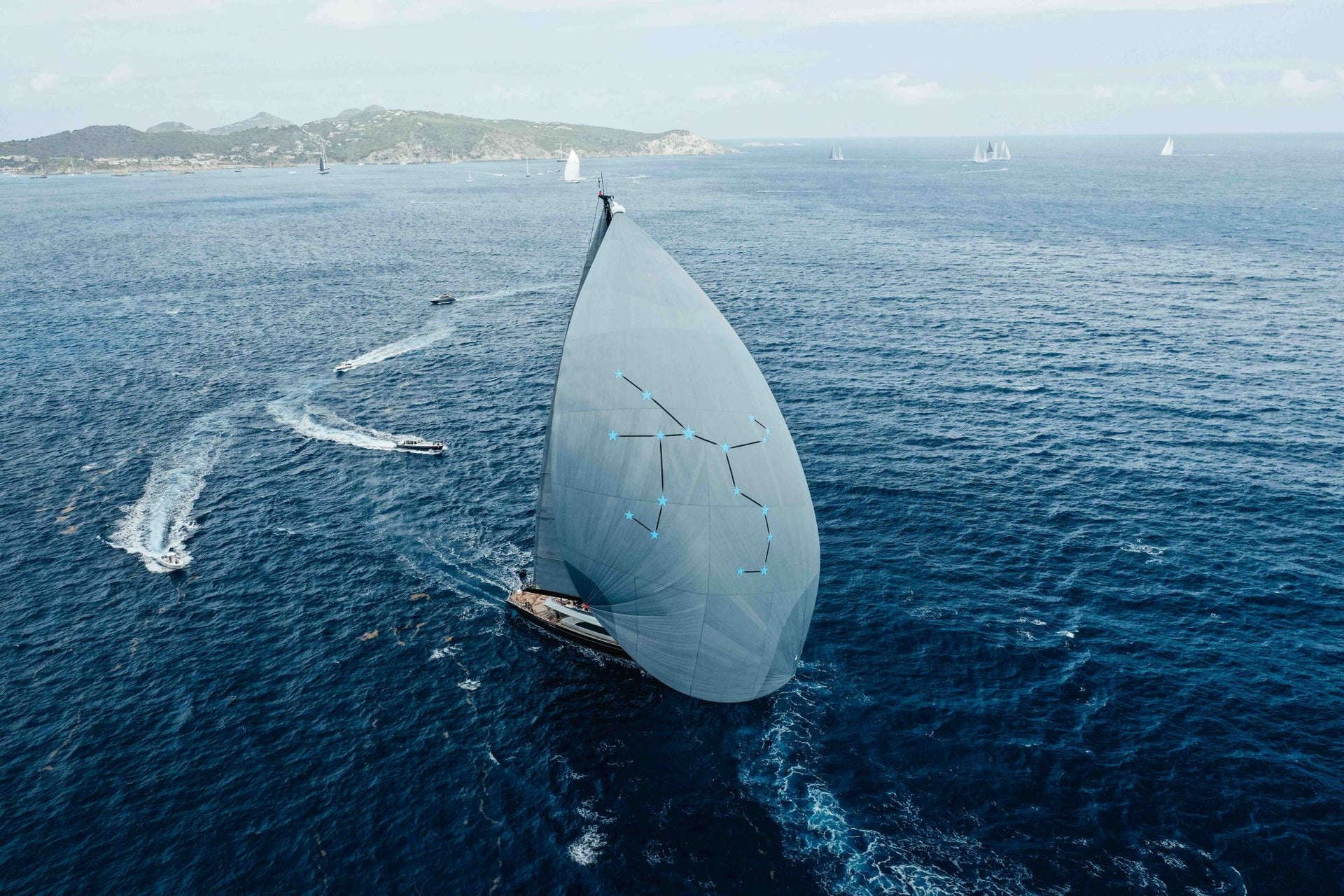
SÅ SKAPADES VÄRLDENS STÖRSTA SEGEL
SÅ SKAPADES VÄRLDENS STÖRSTA SEGEL
Få en inblick i designerns, duktillverkarens och segelmakarnas arbete med Perseus^3:s nya gennaker – som är stor som tio tennisplaner.
📸 Ryan Borne
”Det är väsentligt större än allt annat där ute”, säger Glenn Cook. Han är designer av segel till superyachts och ringer från St Barth, där han testseglar seglet för allra första gången. Det är en process som han beskriver som både ”nervpåfrestande” och ”den bästa delen av jobbet”. Att utveckla och producera detta 2604 kvadratmeter stora A2-segel har nämligen krävt en massa människors medverkan, en massa tid och en massa resurser.
Processen har krävt ett omfattande arbete av ett designteam i USA och en specialbeställd duk som det tog Contender Sailcloth åtta veckor att få fram. Och själva produktionen tog mer än 15 dagar för tio segelmakare.
”Teamet bakom båten var uttryckligen ute efter ett segel som skulle prestera väl i förhållande till mätetalet”, förklarar Cook. ”Så designen fick styras av det. Och eftersom Perseus^3 är en väldigt stor båt (hon är 58,6 meter lång), svarar hon inte så snabbt på roderrörelser. Även justeringar i trim tar sin tid. Så det vi siktade på var ett segel med en väldigt stabil flygande form. Dessutom måste seglet kunna fungera i ett brett spektrum av förhållanden. Vi har därför gjort en mer förlåtande design än vad vi brukar göra till mindre båtar.”
De hanteringsmässiga utmaningarna var också en faktor som påverkade designen; förliket är så långt att seglet kan hamna i vattnet under gipparna. ”Vi utvecklade ett system ovanför halshornet som samlar ihop underdelen av seglet och förhindrar att det går i vattnet under en gipp.”
Grundmaterialet i seglet är Contender Sailcloths Supercote 350 – den tyngsta och starkaste duk de har – i kombination med Supercote 250 i förstärkningarna, vilket sparar lite vikt.
”Båten är gigantisk och genererar exceptionellt höga krafter”, tillägger Duncan Skinner, chef för Contender Sailcloth USA. ”Vi går från en duk som väger 32 gr/kvm till något som väger 150 gr/kvm, räknat på den Supercote 350-duk som används i den här gennakern. När vikten går upp ökar även styrkan, och det är det som krävs för ett segel i den här storleken.”
”Val av fiber är det första steget – det blev en höghållfast nylon. Därefter tittar vi på konstruktionen, exempelvis hur många fibertrådar vi ska väva in i varje riktning. När så duken är vävd kommer finishen in, och det är en knepig uppgift. Du måste färga duken innan du lägger på finishen. I finishen lägger vi på en coating som stabiliserar duken och tar ner porositeten till noll. Det är en väl beprövad kemisk process som resulterar i dukar som kan hantera den typ av krafter som uppstår på dessa gigantiska båtar.”
Skinner ler. ”Den här saken är verkligen stor!”
Det går åt många rullar duk till ett sådant här segel, och jämn kvalitet i produktionen är en nyckelfaktor för att seglet ska prestera på ett bra sätt utan lokala variationer. ”I dessa stora spinnakers är duken konstruerad på ett sätt som gör att den får lite inbyggd elasticitet. På så sätt leds inte stora chocklaster vidare genom riggen och ner till själva båten – seglet absorberar en del av kraften.
Det som skapade mest huvudbry var, kanske något förvånande, seglets specialbeställda grå kulör. ”Färgningen var det som tog längst tid, eftersom det inte är möjligt att färga så mycket material på en och samma gång. Maskinerna är helt enkelt inte så stora. Så du måste vara väldigt uppmärksam på blandningen av färgen och hur länge den får dränka in… men när du tittar på det färdiga seglet så ser du att vi har kommit väldigt nära! Och det underlättade väsentligt för Manuel när han skulle sätta samman själva seglet.
Manuel Lastra och North-loftet i Cuntis i norra Spanien var sista delen i detta stora pussel. ”Det tog ungefär åtta veckor innan vi fick allt material”, säger Lastra över telefon, och berättar att de beställde 400 löpmeter extra duk, detta för att vara säkra på att kunna göra en bra färgmatchning i seglet.
Totalt fick han och hans team 3323 löpmeter nylonduk, fördelat på 48 rullar, skickat till sig, plus ytterligare 500 löpmeter av den tunnare Supercote 250-duken. Med 3500 kvadratmeter duk fördelat på tre stora golvytor kunde Lastras team steg för sten montera ihop de olika sektionerna. För att få plats på skärbordet gjordes seglets undre del av fyra sektioner, istället för som brukligt två. ”Det tog fem dagar för två personer att skära ut våderna”, säger Lastra. När det var färdigt sorterades de 850 våderna i olika grupper och monterades ihop i sektioner. Därefter gick de genom symaskinerna.”
De olika sektionerna syddes ihop separat. Sedan monterades de ihop och hornförstärkningarna sattes på plats. ”Det tog tio dagar för tio personer. Parallellt jobbade två personer med det grafiska mönstret.”
”När seglet var färdigt fick det torka i fyra dagar innan det veks ihop och skickades till Antigua.”
Och det var på den närliggande karibiska ön St Barth som vi fick tag på designern Cook just som han höll på med sina segeltester.
”Jag är här nere den här veckan och seglar St Barths Bucket Regatta med dem. Det krävdes 16 personer för att packa upp seglet och montera det i spinnakerstrumpan.”
Seglet väger in på 550 kilo. Försökte han lyfta det?
”Det kan vi inte!” skrattar han. ”Vi använder vinscharna ombord. Vi kan släpa det, men det krävs tio till femton personer för att rubba det.
”Det är stort.”
READ MORE
READ MORE
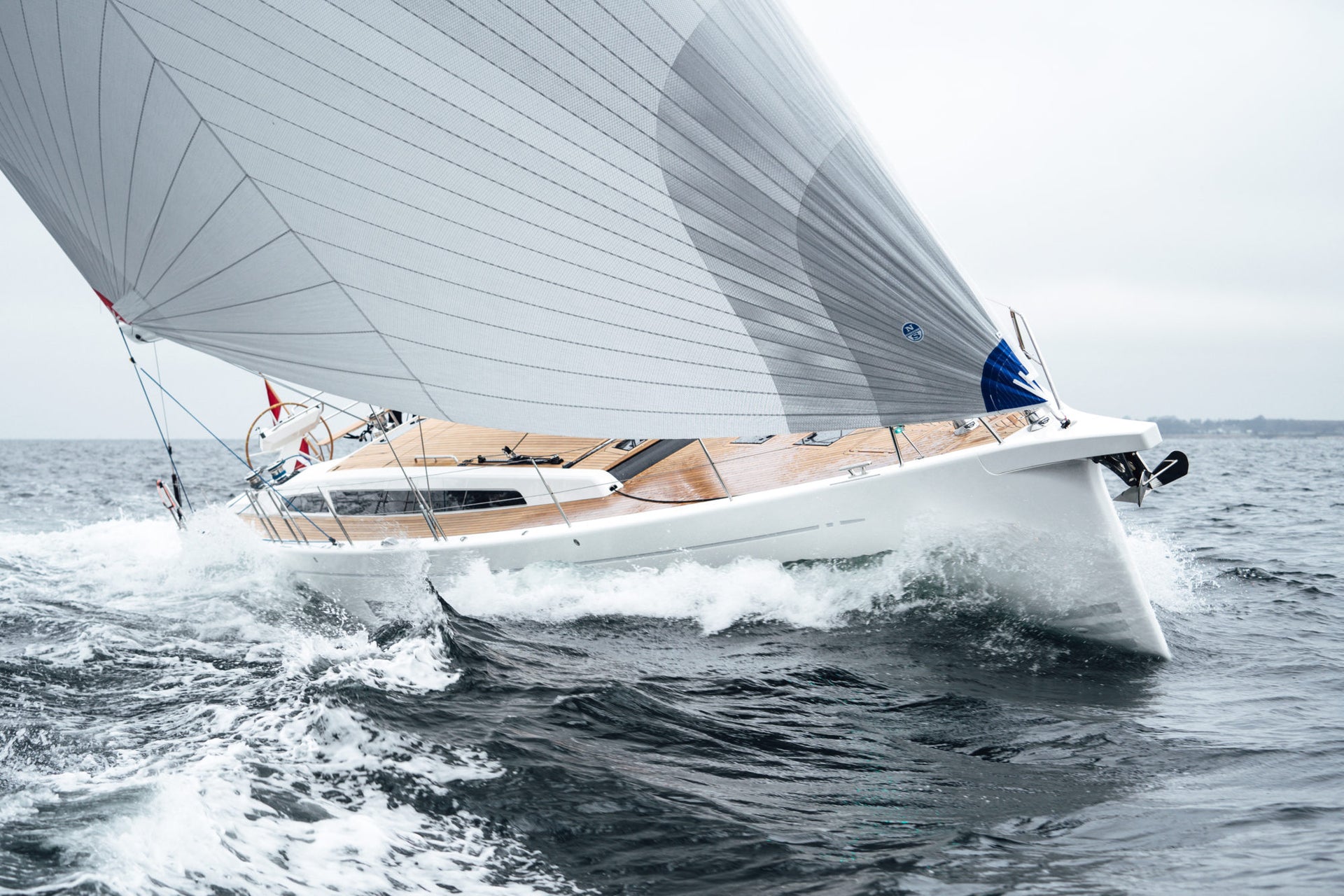
HOW TO' VIDEO SERIE MED BOUWE BEKKING
'HOW TO' MED BOUWE BEKKING
En video-serie i 7 dele til cruisere
Vi har slået os sammen med vores venner hos X-Yachts og er stolte over at kunne præsentere en helt ny 'How To' video-serie tilegnet alle slags cruisere. Alle syv videoer er live og kan ses på North Sails YouTube kanal.
Den professionelle hollandske sejler og 8 gange Volvo Ocean Race veteran, Bouwe Bekking, deler ud af sin viden og erfaring ombord på en X-Yacht i selskab med North Sails Ekspert Jesper Feldt. Bekking taler os igennem de vigtigste aspekter af tursejlads, fra bådmanøvre til trimning af alle sejl i sejlgarderoben.
Videoerne er filmet på Øresund henover sommeren og indeholder tips og tricks til håndtering af en cruising båd fuldt udstyret med North 3Di ENDURANCE.
READ MORE
READ MORE
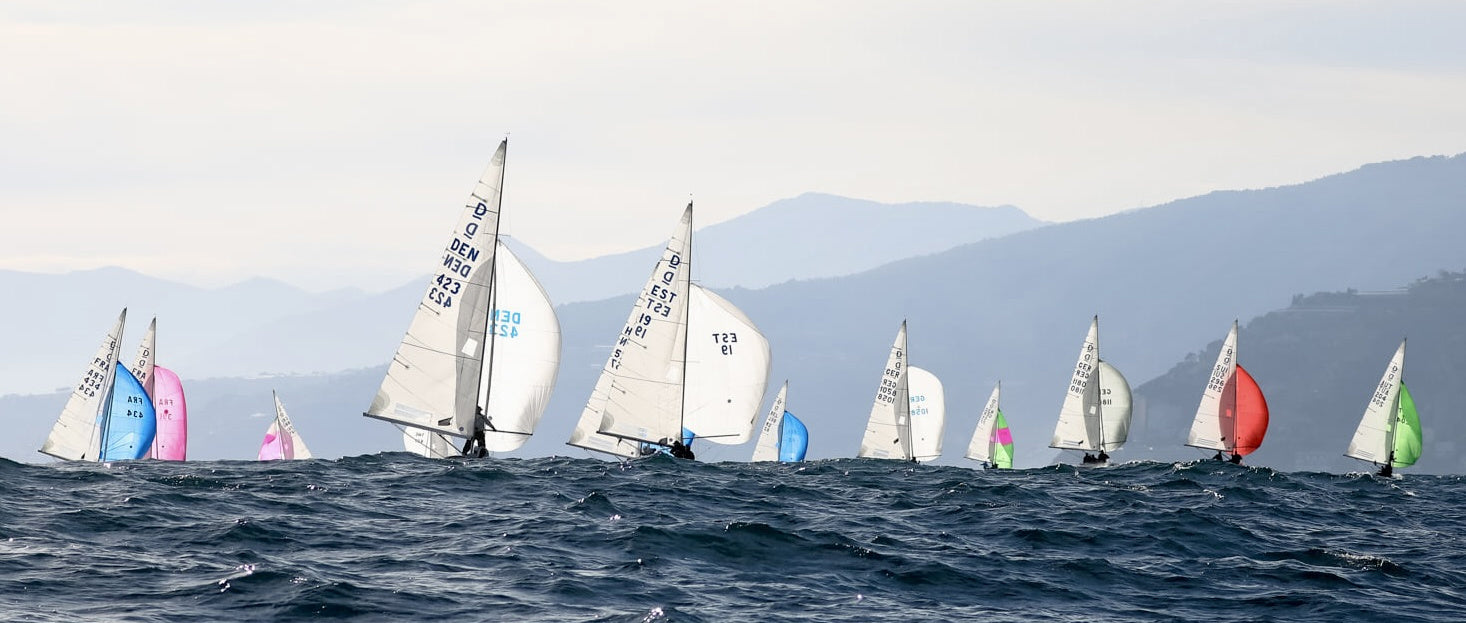
NORTH SAILS CLIENTS DOMINATE DRAGON EUROPEAN CHAMPIONSHIP
NORTH SAILS CLIENTS DOMINATE DRAGON EUROPEAN CHAMPIONSHIP
5- 30 Knots of Breeze - Competitors Faced it all in Sanremo
📸 Sanremo Yacht Club / Elena Razina
A fleet of 63 Dragons from 18 countries raced in Sanremo, Italy, to determine the 2022 European Champions. Crowned after five races are Wolf Waschkuhn and his team Charles Nankin and North Sails expert Ruairidh Scott (SUI 318).
With Wolf at the helm and Charles trimming the genoa and spinnaker following their regatta win, we caught up with Ruairidh, mainsail trimmer, and tactician onboard to hear how they did it.
Joining the team for the ‘Paul and Shark Trophy’ just three weeks before filling in for Joao Vidina, Ruairidh, Wolf, and Charles raced the Italian Championships (also held in Sanremo) in very windy conditions before going on to race for the European title in the more traditional lighter winds of Sanremo. “Our speed was excellent in the varied conditions we had all week. We raced with the A-14 Mainsail on a standard petticrow mast alongside the V-6L, V-6M and V-6H Genoas. However, we mainly used the V-6M as we were never sure if conditions would change during the race.’’
📸 Sanremo Yacht Club / Elena Razina
“We sailed with lots of twist as the conditions were quite choppy all week. Careful adjustment of the runner and mainsheet ensured we were fast as the wind fluctuated. A key ingredient to our speed throughout the week was the work rate from our headsail trimmer Charles Nankin. He stayed active on the headsail sheet in light, choppy and shifty conditions. When a gust hit, we responded quickly by easing the genoa sheet and trimming back in as the boat pointed higher. The sheet ease allows the boat to accelerate and naturally turn up to point higher, so the result was sailing higher and faster than before. In these conditions, little mainsheet adjustment was required until we were sailing at the new angle, which allowed me to get my head up and look around more often. Charles and Wolf did this very well all week, and the constant communication between them meant we were quick all the time.’’
Between the two regattas, Wolf’s team showed excellent speed in 5 - 30 knots. “Thanks to the nice, big crossovers with the North sail designs," Ruairidh explains, “we were fast even if we were not on the perfect sail for the conditions all the time.’’
Congratulations to all North clients who raced at the Europeans and Wolf, Charles, and Ruairidh for fighting through the pack to finish with the title.
Shop the North Sails winning Dragon sail designs today.
RESULTS
📸 Sanremo Yacht Club / Elena Razina
READ MORE
READ MORE
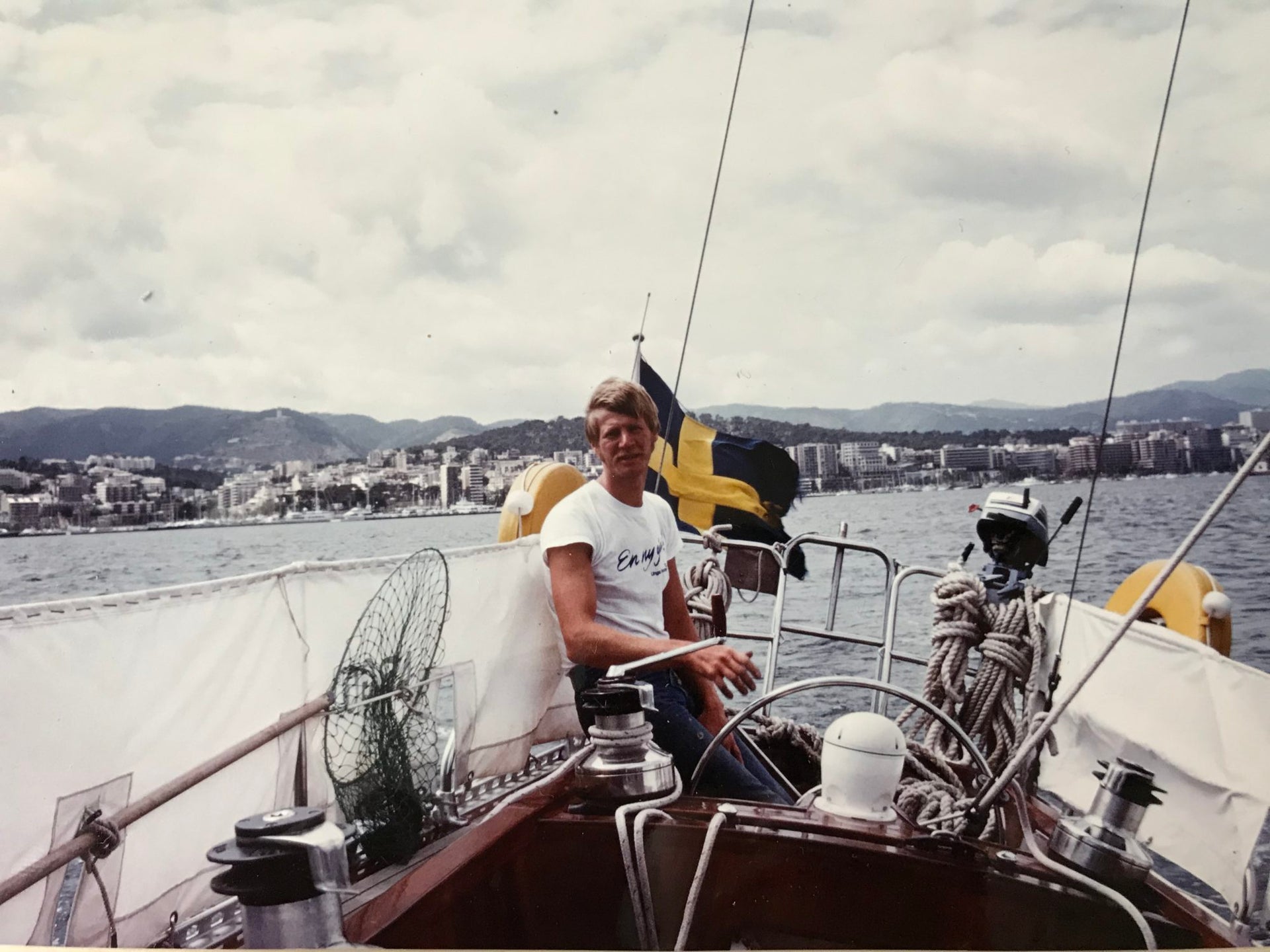
LÄS BERÄTTELSEN OM ARGO: DEL 2 HÄR.
Läs Berättelsen om Argo: Del 2 här
Berättelsen om OPAL 46: AN Argo, och de traditioner som omger henne, fortsätter
Efter många års segling med sin pappa på den älskade skonaren Argo har John Ingvar Ravelius blivit delägare i båten och äger den nu tillsammans med sin bror och sin pappa. Han har uppdaterat och utrustat henne med drömmen om att skapa nya minnen med sin unga dotter och föra familjetraditionen vidare. Här delar Ravelius med sig av andra delen av berättelsen om hur en segelbåt, och det arbete som följer med den, kan knyta samman tre generationer. Läs Berättelsen om Argo: Del 1 här.
Förberedelserna inför den långa seglingen
Efter att ha kappseglat med Argo under två säsonger i Stockholms skärgård, kände sig Ingvar allt mer hemtam ombord. Drömmen om en jorden runt-segling var på att uppfyllas. Men först behövde båten förberedas för den långa resan.
Ingvar hade planerat att segla iväg med en god vän. Någon uttalad destination fanns inte, de skulle bara segla iväg och se vart vindarna förde dem. 1983, innan Ingvar gav sig iväg, träffade han min mamma Leena. Hon var 25 år gammal och hade ingen erfarenhet av segling. Hon hade aldrig ens varit ombord på en segelbåt.
Invar ändrade sina planer och bad min mamma att segla med honom på resan. Hon sa ja, och Ingvar tog nu språnget han väntat så länge på och sålde allting som inte behövdes ombord på Argo, inklusive huset i Sollentuna på vars tomt han hade byggt båten. En eftermiddag lämnade de hamnen i Stockholm med drömmar om varmare breddgrader och utan planer på att återvända.
Deras resa började, och de gick genom Kielkanalen och ut på Engelska kanalen. Min mamma förde dagbok.
21 augusti 1984 – Biscayabukten
I sin dagbok skrev mamma: ”Vinden ökade mer och mer och regnet kändes som vassa nålar i våra ansikten. Vi hade revat seglen och hade en fart på sex knop. Jag kunde höra vinden som ett vrål. Natten var så mörk, och jag kunde inte se en enda stjärna.”
Några dagar senare: ”Loggen visade sex knop när vi seglade fram över havet. Det var ungefär sex sjömil till kusten när loggen helt plötsligt visade noll. Vi undrade om den var trasig. Det kändes fortfarande som sex knop och vi hade vind i seglen. Det visade sig att Argo hade fastnat i ett fiskenät. Vi funderade på vad vi skulle göra. Ingen av oss hade lust att hoppa ner i vattnet och skära loss nätet som fastnat runt båten, så Ingvar och jag väntade och visste inte vad vi skulle göra. Så såg vi en fiskebåt passera oss på ungefär 500 meters avstånd på väg mot hamnen. Vi vinkade åt dem och de såg oss och vände kurs mot oss. Lyckligtvis var de villiga att hjälpa oss, och de skickade över en lång käpp med en kniv fastsatt i ena ändan. Ingvar började skära i nylonnätet men hade ingen större framgång. Till slut klättrade en av fiskarna ombord på Argo. Han vässade kniven och skar loss oss!”
Motorn startade men de hade ingen styrförmåga, de insåg att nätet hade skadat Argos roder. Efter att ha vridit rodret fram och tillbaka lossade till slut delar av nätet från rodret, och de kunde fortsätta sin färd.
När de började färden igen hörde de ett konstigt dunkande ljud och blev rädda att propellern hade lossnat. Senare insåg de att fiskenätet höll sig flytande med hjälp av fotbollar i plast, och att ljudet de hörde uppstod när bollarna slog mot skrovet på ömse sidor av rodret.
Senare på kvällen kom de fram till La Coruna Yacht Club, och besättningen på en fransk båt skrek och vinkade att något hade fastnat på Argo.
Leena och Ingvar skrek tillbaka: ”Ja, vi vet!”, log och vinkade tillbaka, lätt skamsna för det som hade inträffat. De sparade fotbollarna under många år som ett minne. Flera år senare skulle en av dessa röda bollar bli den allra första fotboll som jag sparkade på.
Efter att ha tillbringat en tid i Biscayabukten bestämde de sig för att segla in i Medelhavet, och en vän till familjen bjöd in paret till det hotell som denne ägde på Ibiza. När de passerade Gibraltar och styrde in i Medelhavet visste de inte att Argo skulle bli kvar där de närmaste fem åren eller att Ingvars och Leenas två barn skulle födas där.
Utdrag från min mammas dagbok
Den 5 oktober 1984 skrev Leena: ”Solen lyste på den mäktiga Gibraltarklippan när vi passerade den röda och vita fyren vid Europa Point och satte kurs mot Puerto Banùs. Vi seglade in i Jose Banús Marina med sex knops fart i plattvatten med vinden från sidan och det kändes som att vi flög fram över vattnet.”
Håll utkik efter del 3 och läs om hur mina föräldrar tog hand om ett nyfött barn samtidigt som de seglade omkring i Medelhavet.
READ MORE
READ MORE
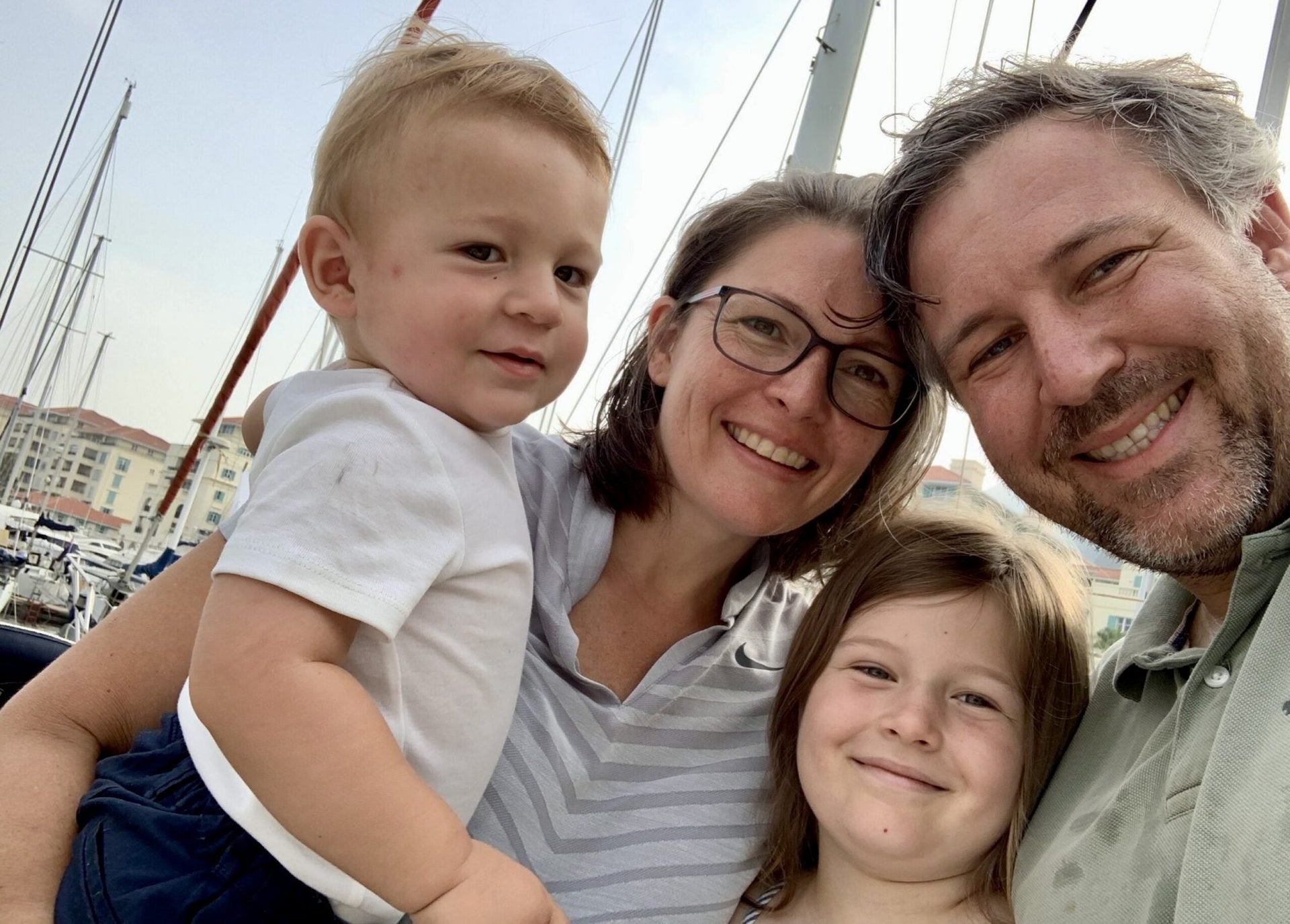
ULTIMATE FAMILY CRUISING ONBOARD OYSTER BELLE
ULTIMATE FAMILY CRUISING ONBOARD OYSTER BELLE
Around-the-World Adventures with Stefan and Emily Hunger
With tales of adventure, fickle winds, good food and wonderful wildlife, we spoke to Stefan Hunger, North Sails client and owner of Oyster 435 Oyster Belle. He talks about his recent ocean crossing and his family's biggest adventure yet.
Stefan Hunger has always had a passion for the water. Stefan grew up dinghy sailing in Austria, venturing further afield to the UK and Mediterranean after meeting his wife Emily. This is where the young couple decided to give ocean sailing a go. Following the discovery of ocean sailing, they soon began the search for the perfect yacht to sail around the world with their young children.
International salesman Stefan, and geologist Emily, spent a long time looking for the boat that fit their dreams and once Oyster Belle was found, they set out on a mission to get her ready for their adventure. A few years were spent getting to know Oyster Belle; living on board, cruising in the mediterranean with some longer passages to introduce their young children to the ocean.
Oyster Belle underwent a full refit before they ventured further afield - a fresh deck was installed, the engine had a full revamp and the couple also purchased a new sail inventory. Their first experience with North Sails was shortly after they bought Oyster Belle and discovered that they urgently needed a new Genoa. “The fit of our North Sails Genoa is exactly what we are looking for. The cut and shape is perfect for our boat.”
A year later, the couple decided to replace their mainsail, opting for an NPC Radian Mainsail with three reefing points to ensure that they were ready for anything that the Atlantic Crossing may throw at them. Speaking positively about their experience with the team of experts at North Sails UK, Stefan commented: “We had fantastic service, our mainsail was very bespoke. The shape, the way the sail behaves is beautiful - so good that we have since ordered a storm jib/staysail and an asymmetric spinnaker.” When Stefan decided to enter the Atlantic Rally for Cruisers (ARC) he worked with Jeremy Smart to replace his old symmetric spinnaker with a furling asymmetric. They installed a small bowsprit per Jeremy’s recommendation. “It works beautifully, it drives the boat forward much better, it’s easy to handle, and we can use it at many different angles. It’s a joy to sail with.”
In January 2022, it was time for Stefan to pursue a lifelong goal to cross the Atlantic Ocean and the family decided to join the Atlantic Rally for Cruisers trip from Gran Canaria to St Lucia. Oyster Belle set sail on the ARC, heading for the Caribbean with a crew of two Austrians and two British sailors, one of whom was the person who introduced Stefan and his wife to ocean sailing who is now a good family friend. Stefan and Emily would have loved to take their kids on the journey, but with the older of the two in school the timing didn’t work out.
Oyster Belle dealt with the crossing perfectly. The crew reflected on the trip on their daily blog which mentioned weather extremes of gale force winds to no wind, torrential rain and tropical sunshine, stunning moon rises, spectacular sunsets, and a clear view of the Milky Way with an array of shooting stars on many occasions. And as if all that wasn’t enough excitement for one trip, the crew had a near collision with a whale and their onboard ‘masterchef’ treated them to deliciously prepared fresh Mahi Mahi.
The weather they encountered during the crossing wasn’t exactly what they were expecting, Stefan recalled. “Something is changing in the global systems, they used to say to go south until the butter melts and then you turn right. That didn’t happen for us. The trade winds didn’t really set in.” Stefan explained that they had to go a long way south in search of some solid breeze. As a result, the crew on Oyster Belle didn't have the usual expected downwind weather conditions which meant that their North G1 Furling Gennaker with Spinex system was a ‘godsend.’ The sail came into its own during the crossing, helping the crew a lot against the other boats that didn't have asymmetric sails.
Looking forward to future adventures, Stefan is working on a twin head sail solution with Jeremy and North Sails. The goal of this is to make crew work easier when it’s just Stefan and his family on board.
Oyster Belle is now tucked up in Grenada awaiting the family’s arrival, where they plan to take advantage of the school holidays to cruise around the Caribbean. Longer term, the plan is to go further afield, potentially towards the Pacific. They hope to use their kids' school holidays to hop around the world under sail.
North Sails is inspired by Stefan and Emily’s family cruising adventures and we wish them fair winds on their travels. To speak with Sail and Cruising Expert Jeremy Smart about your sail inventory, get in touch today.
READ MORE
READ MORE



















